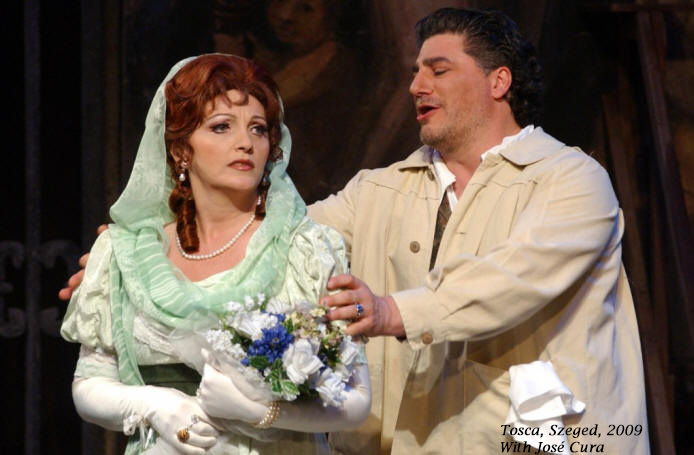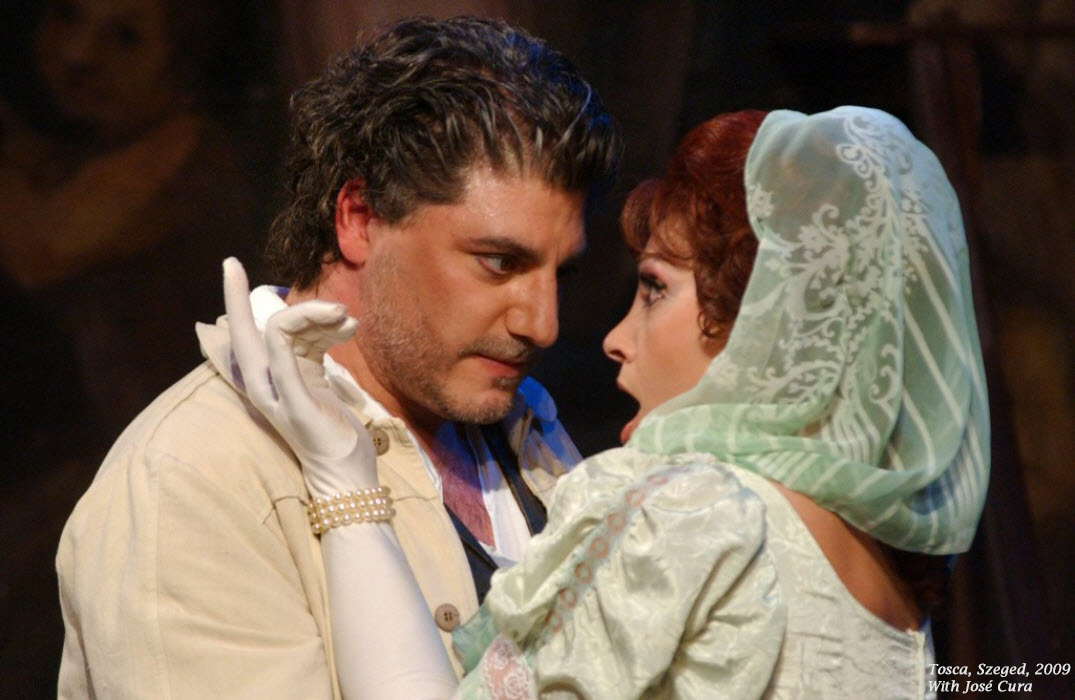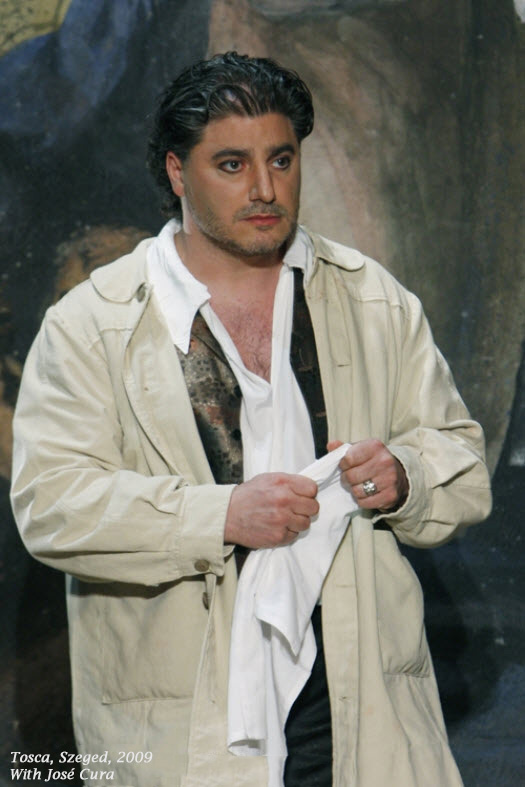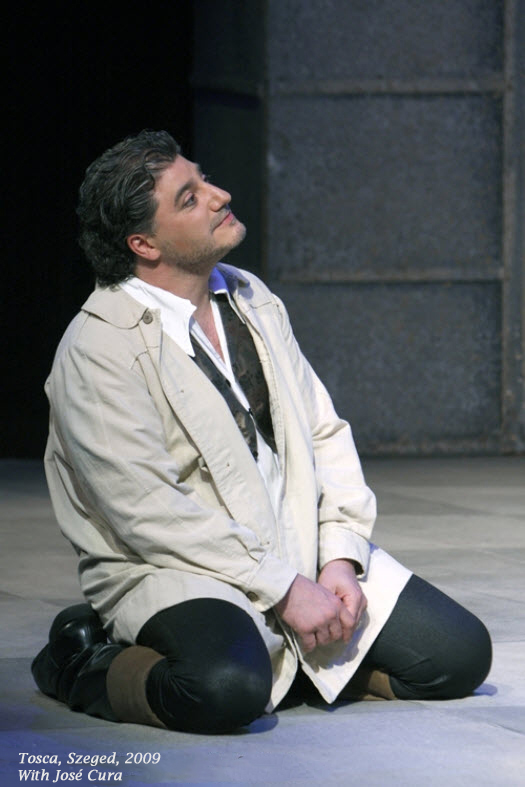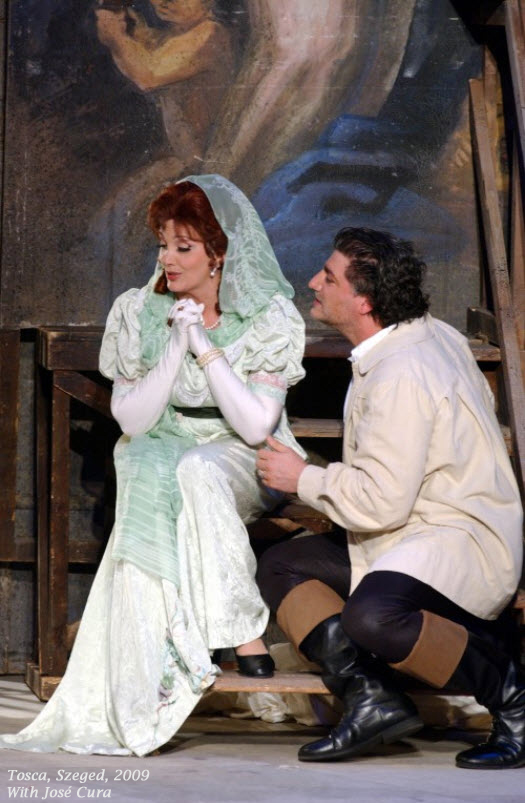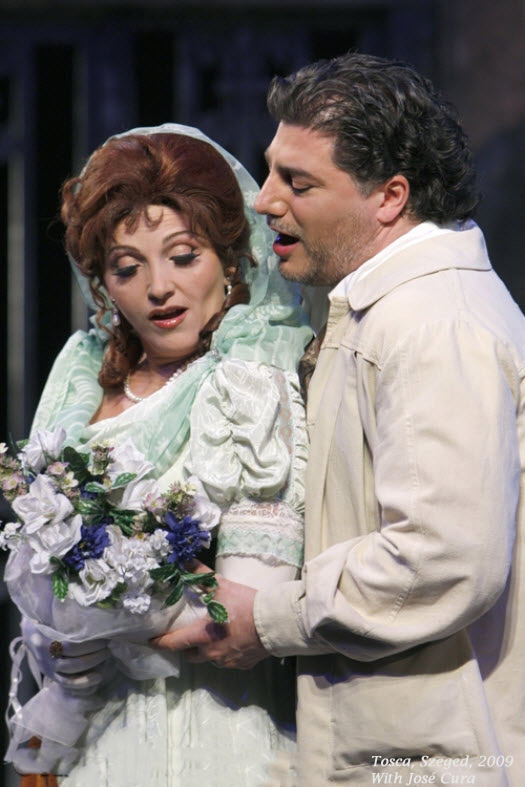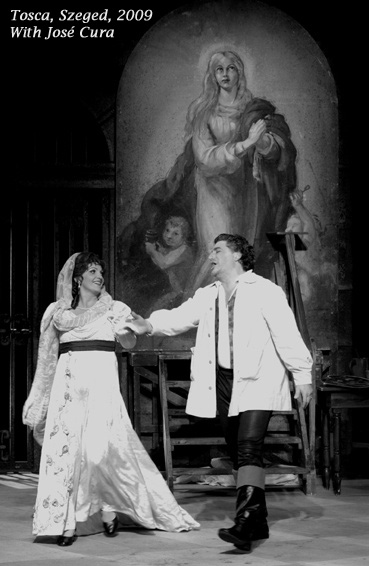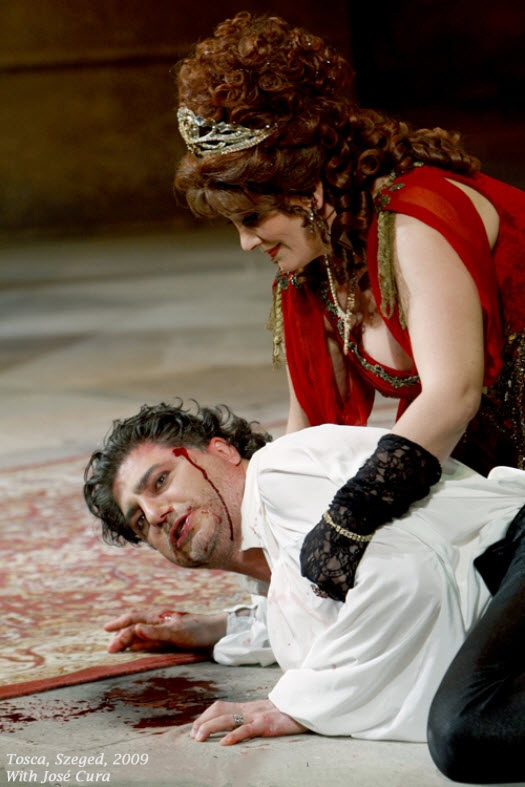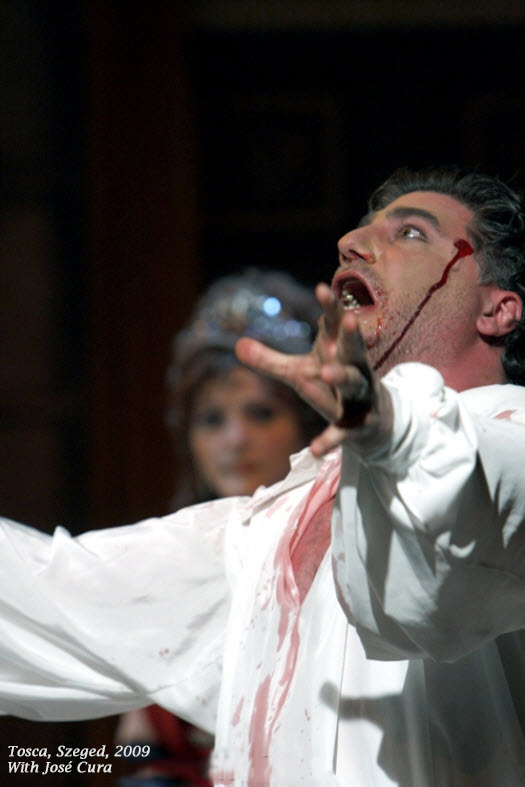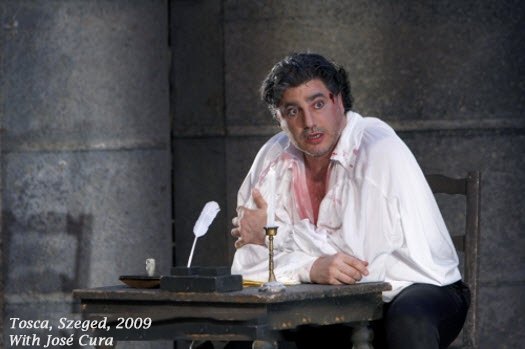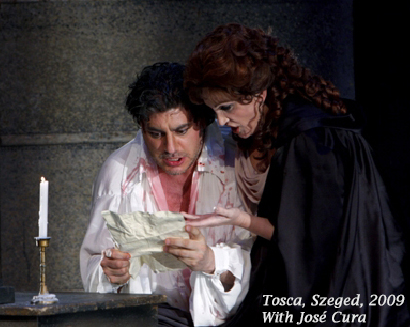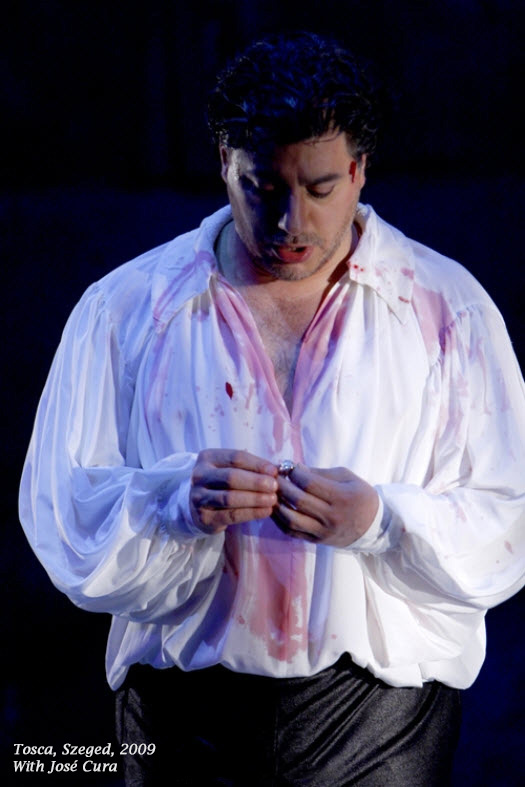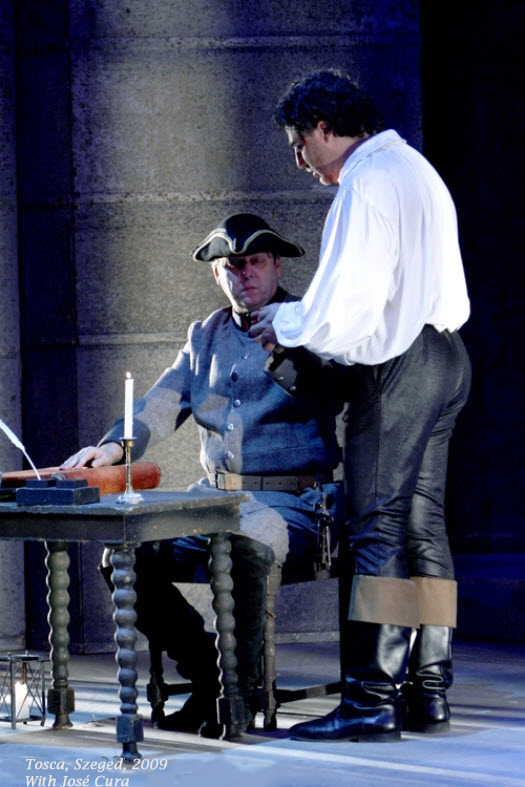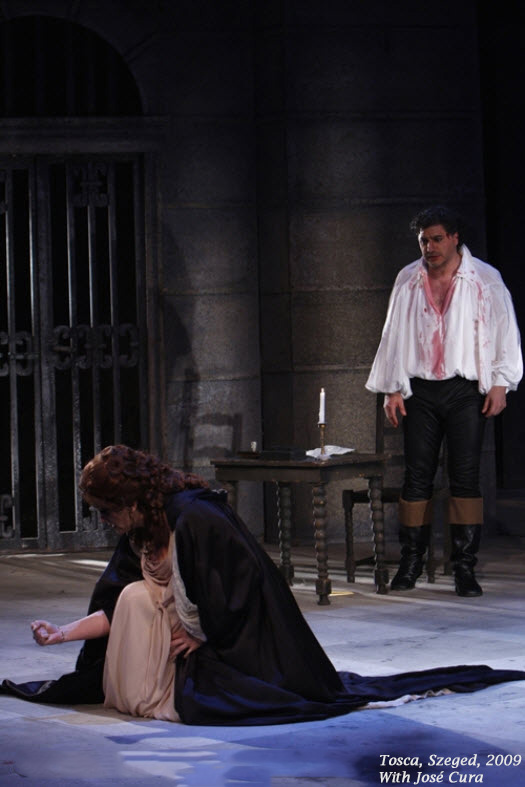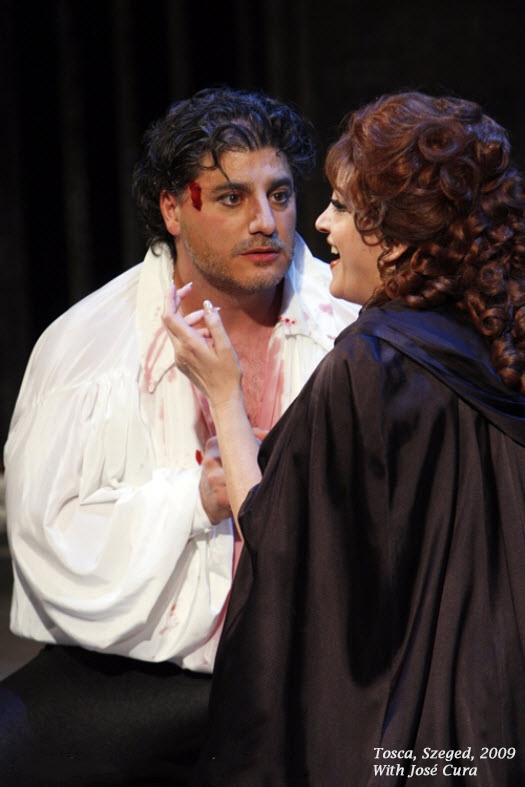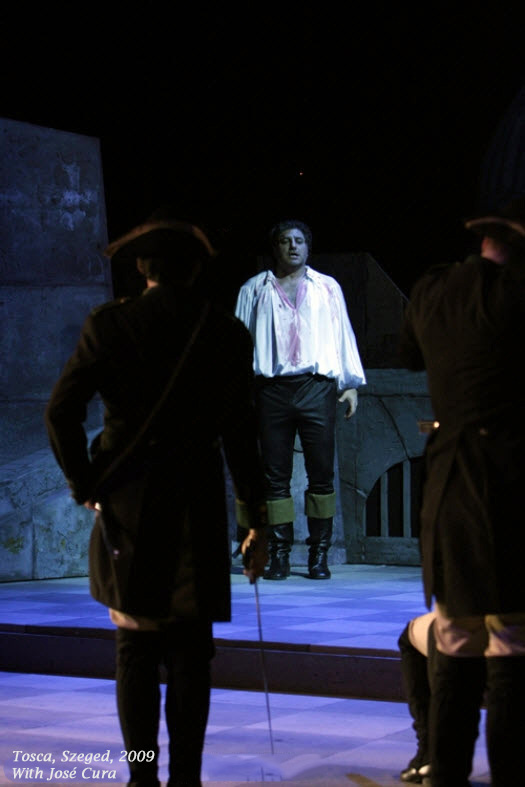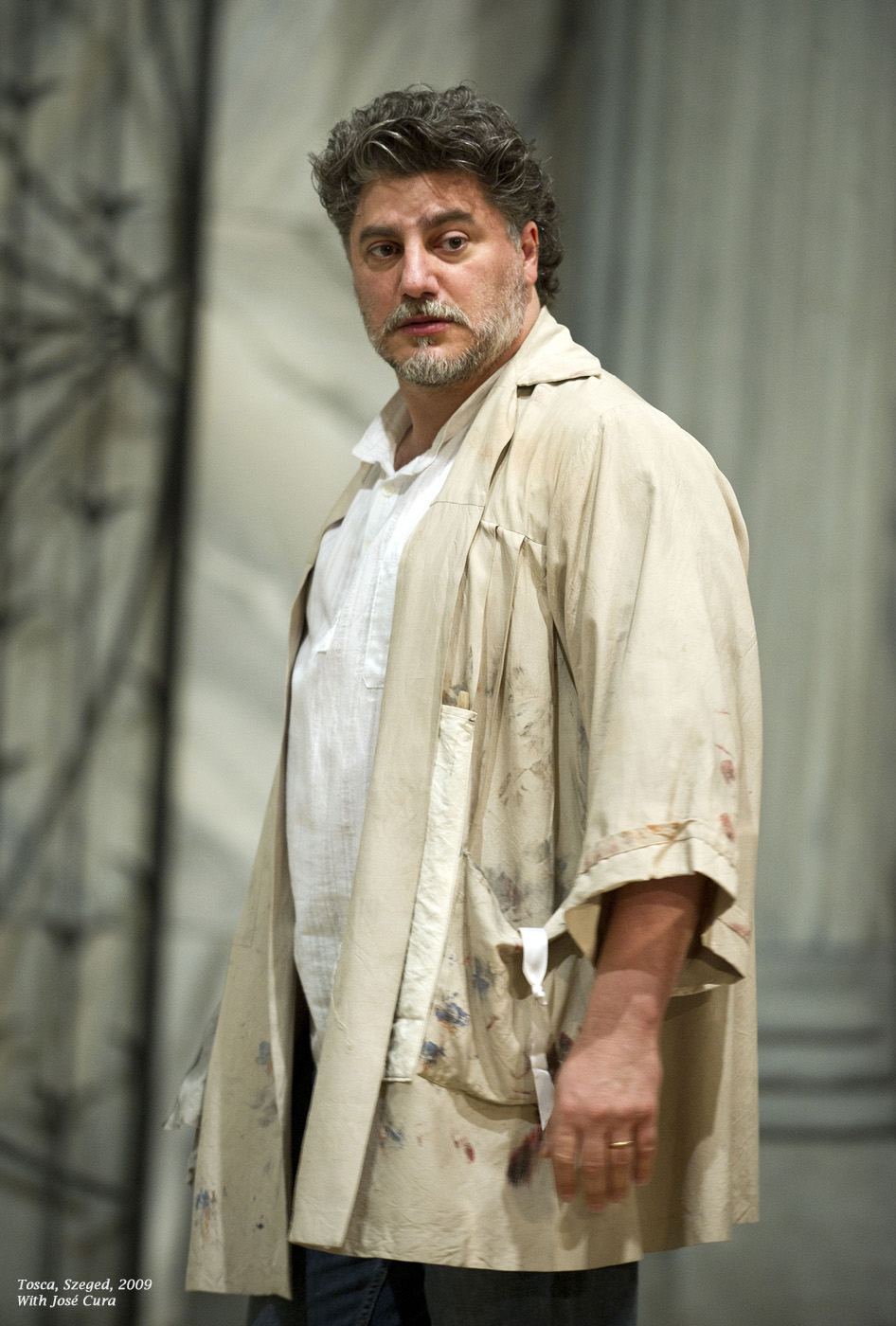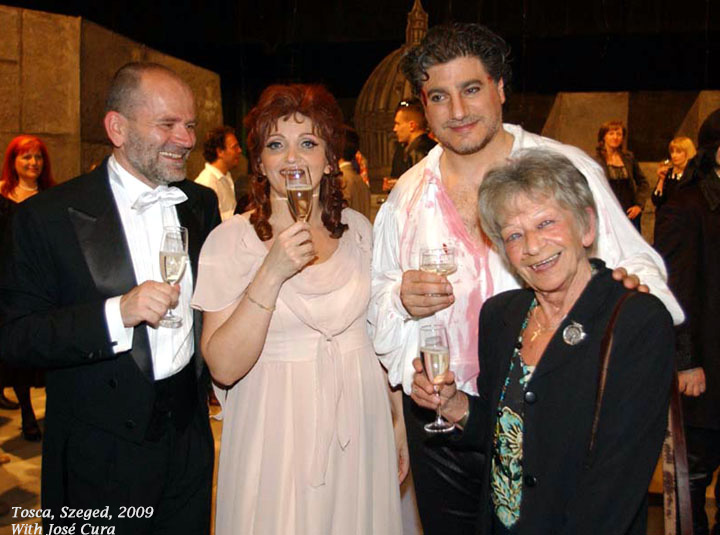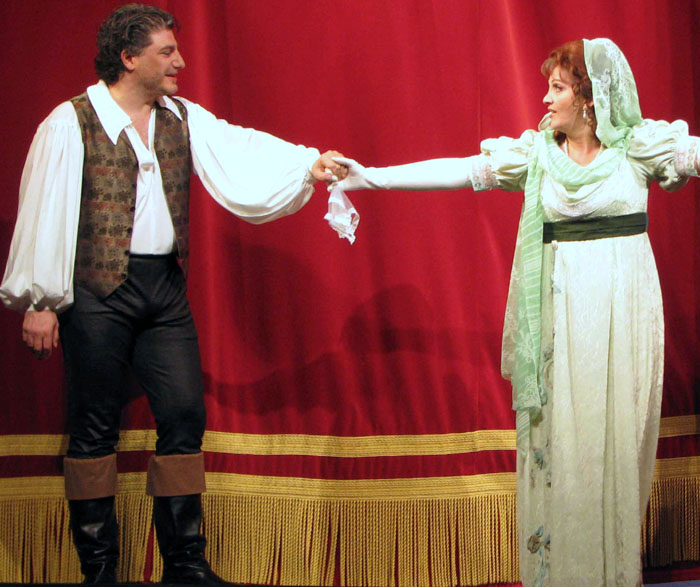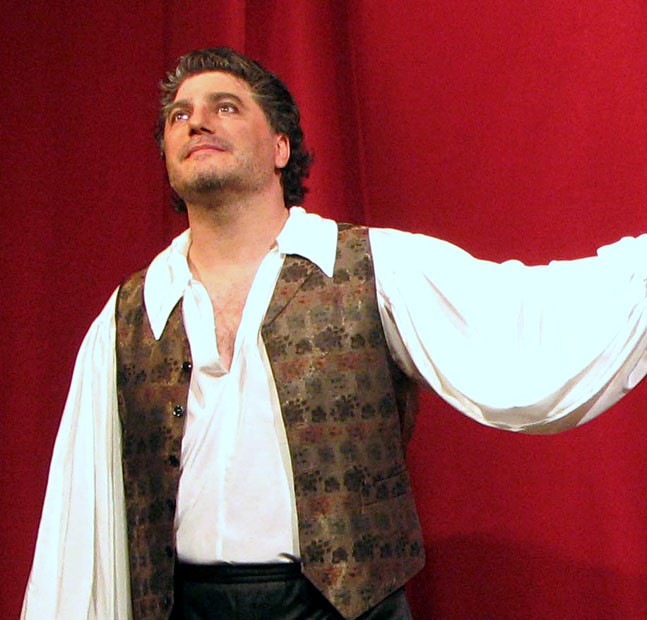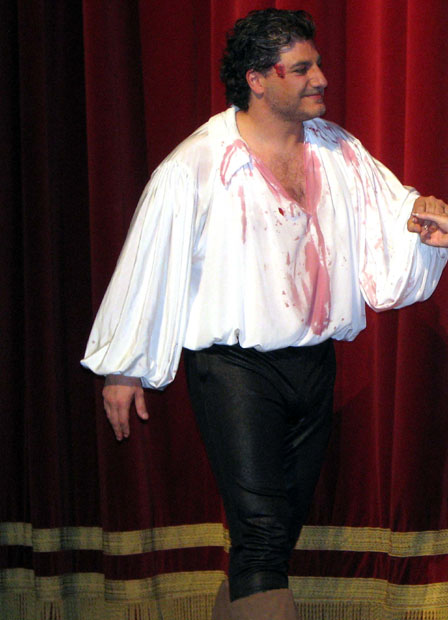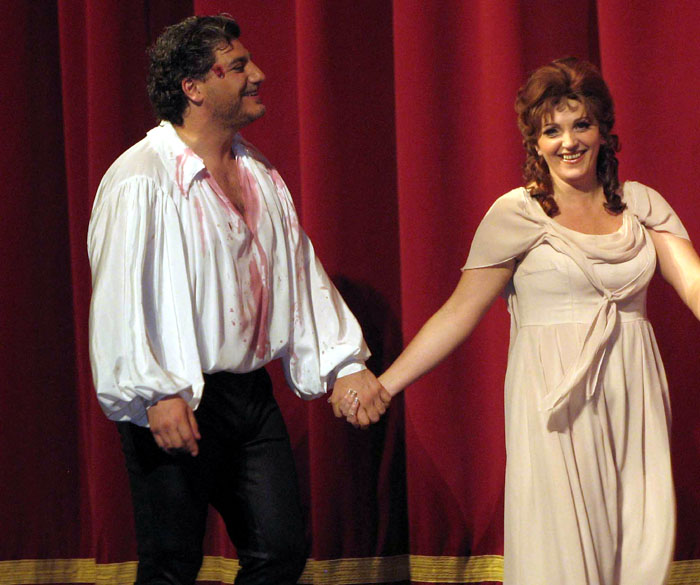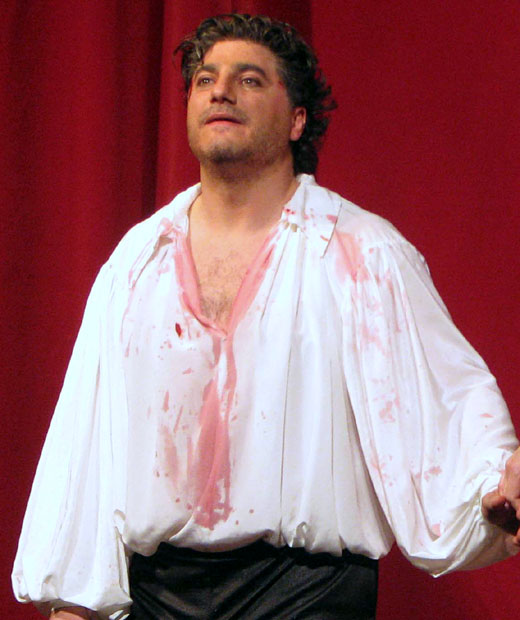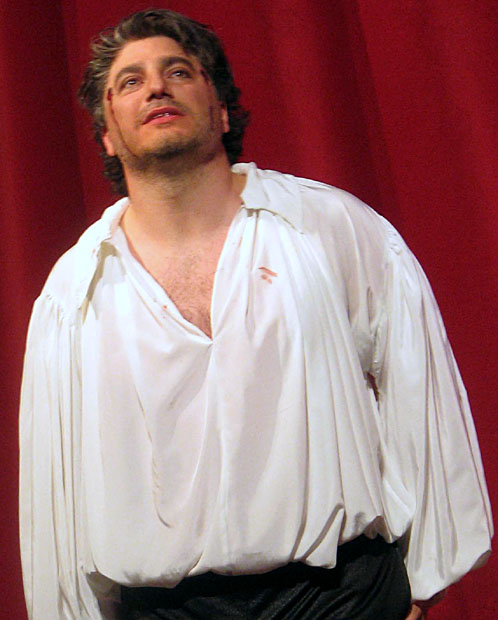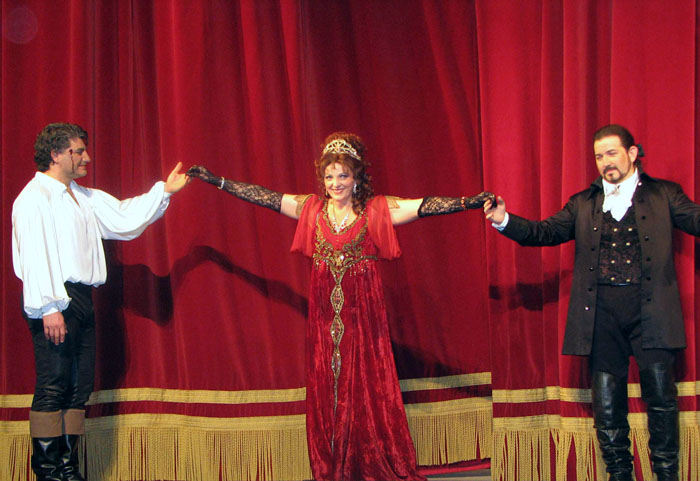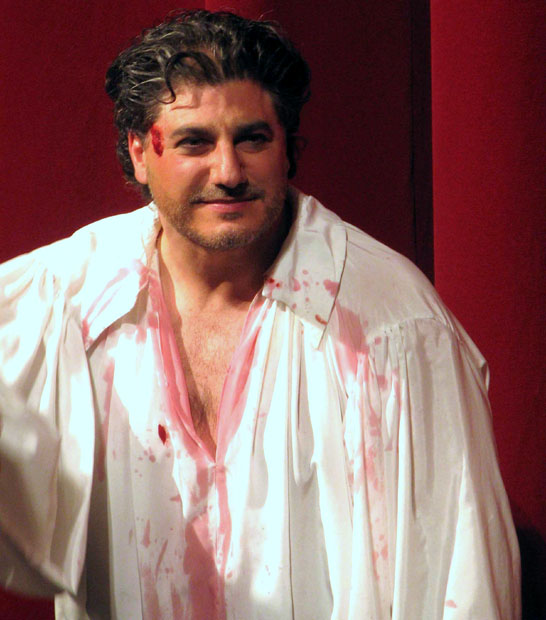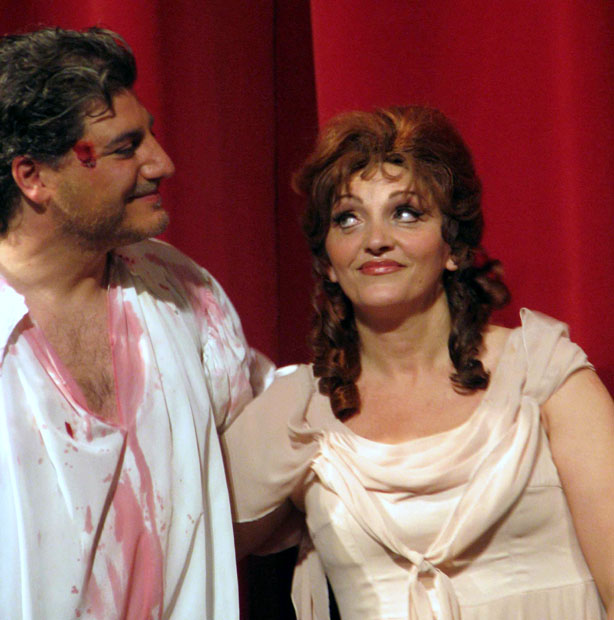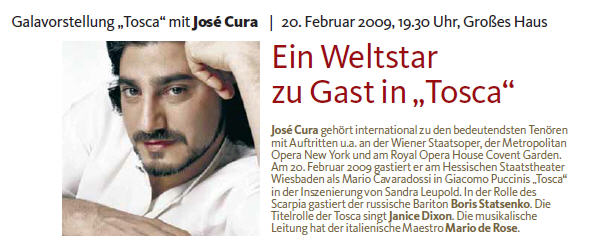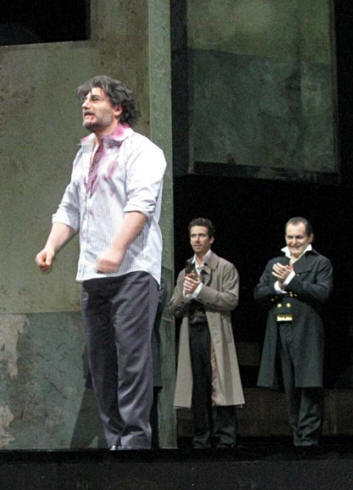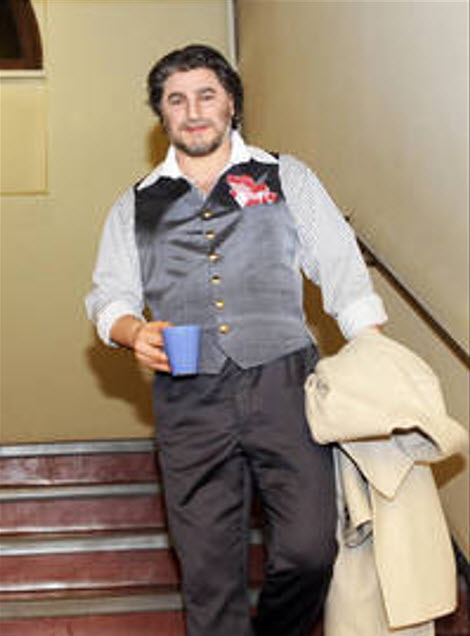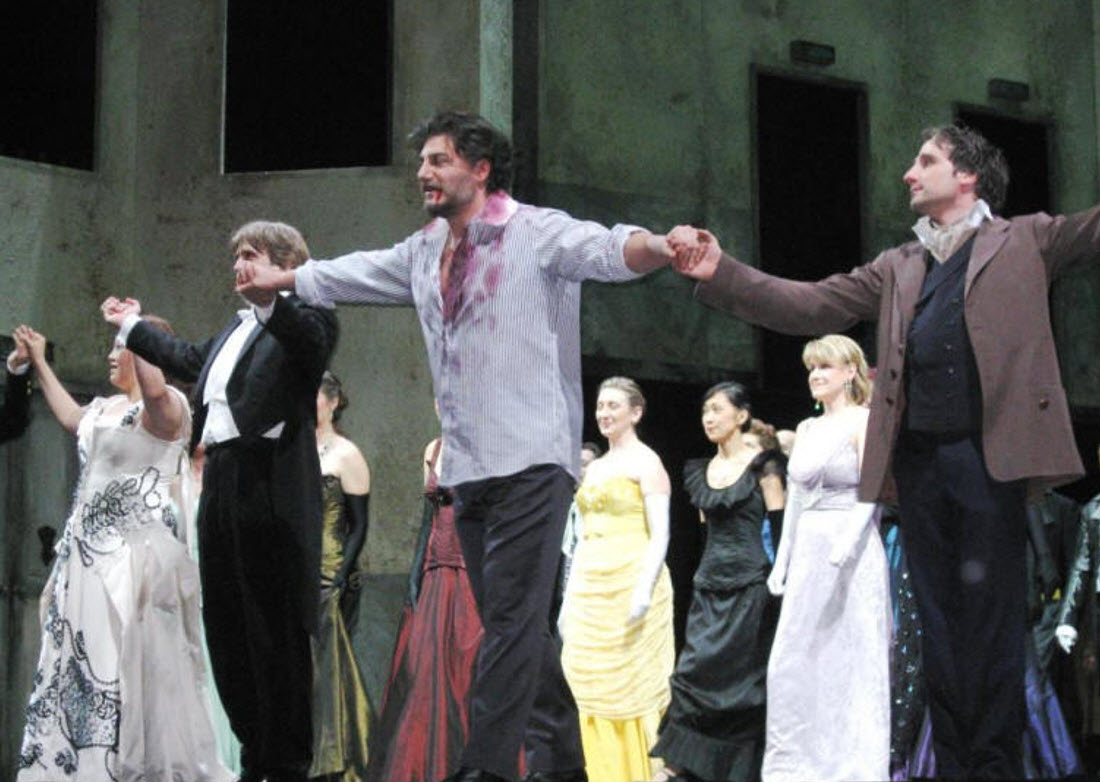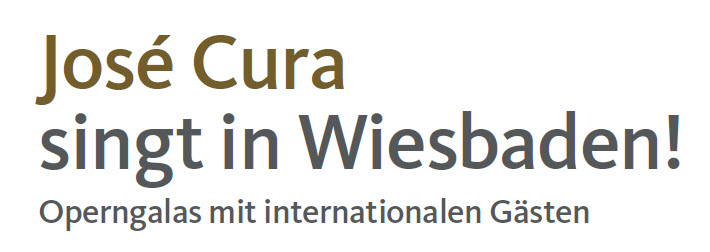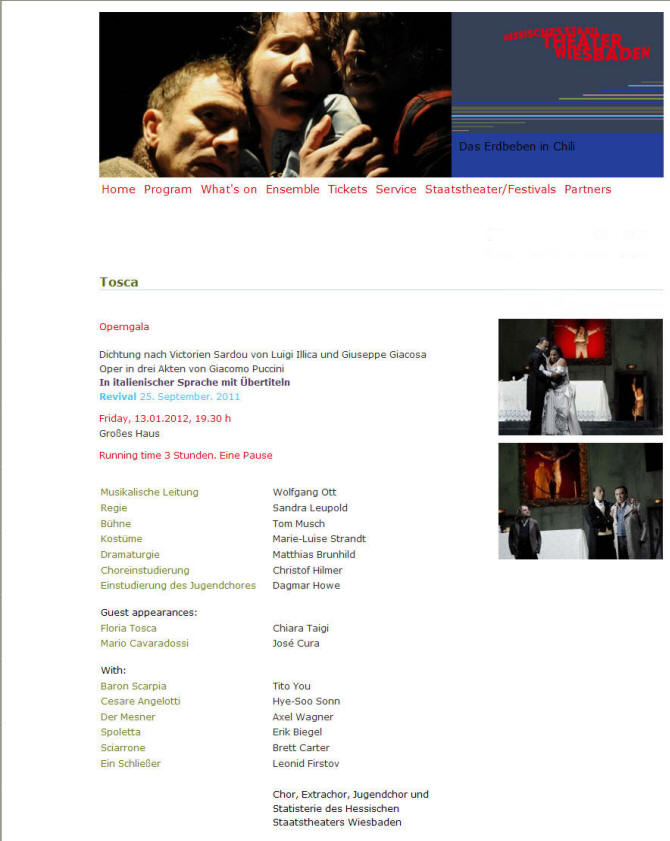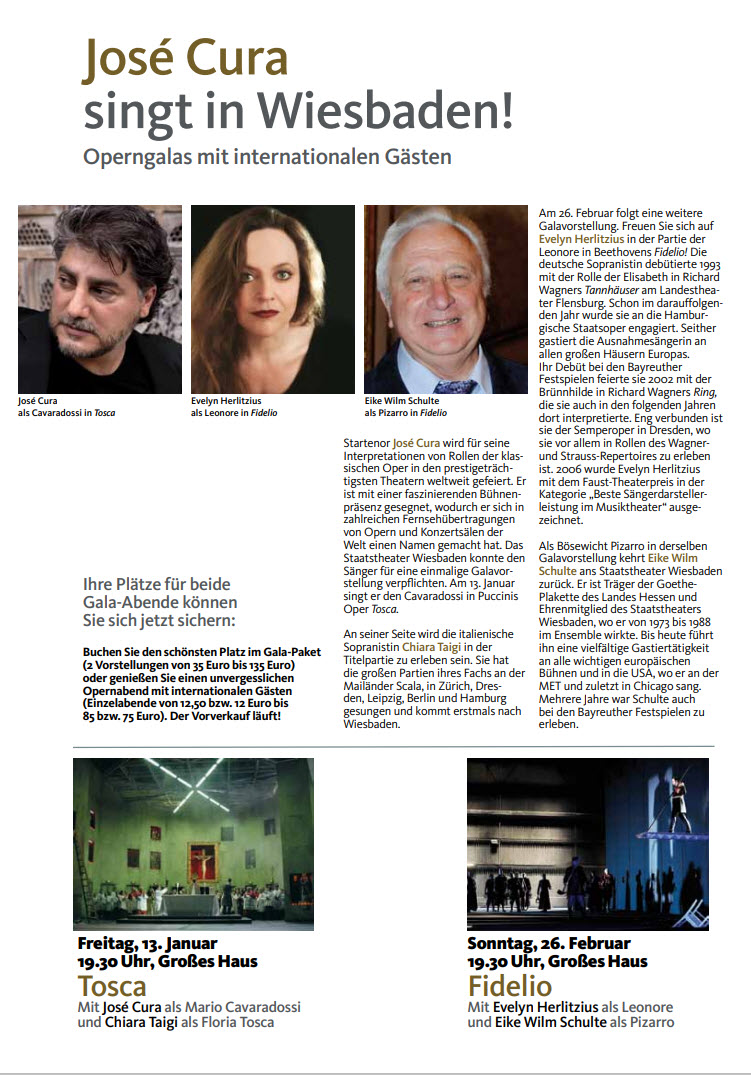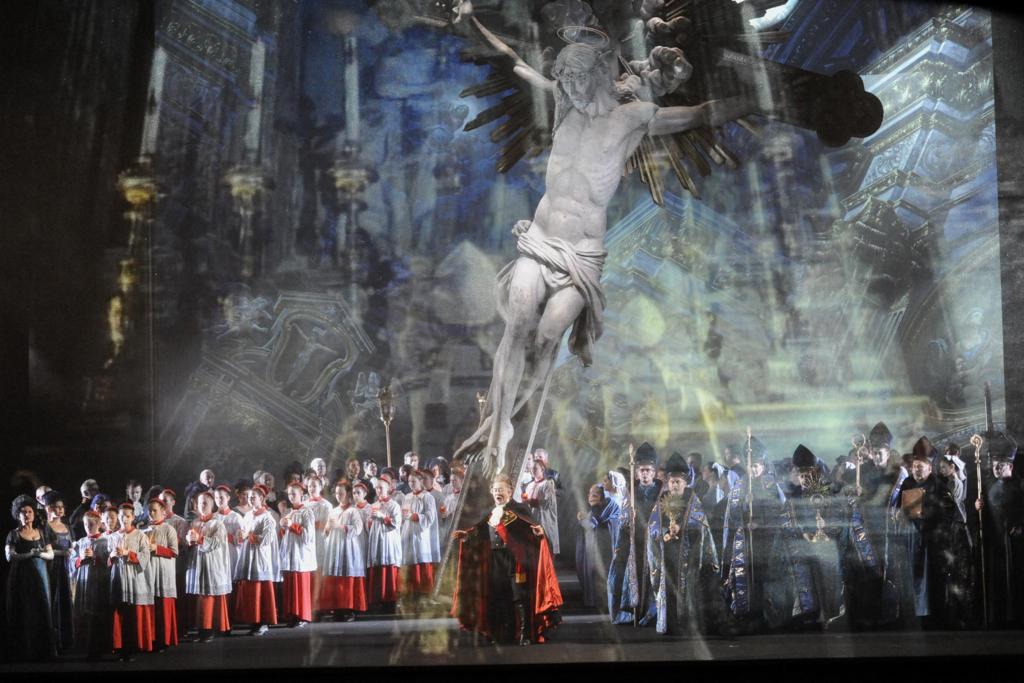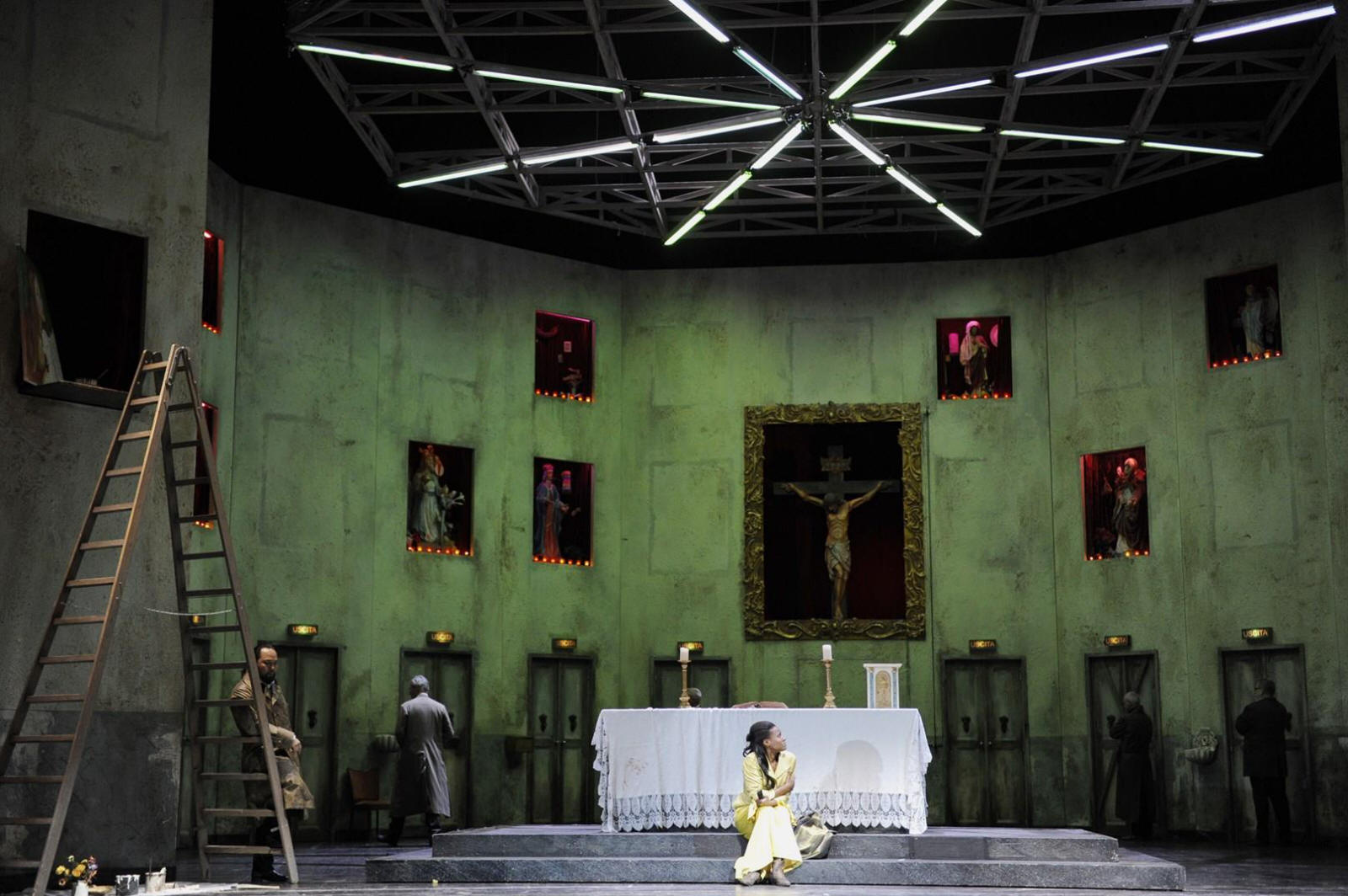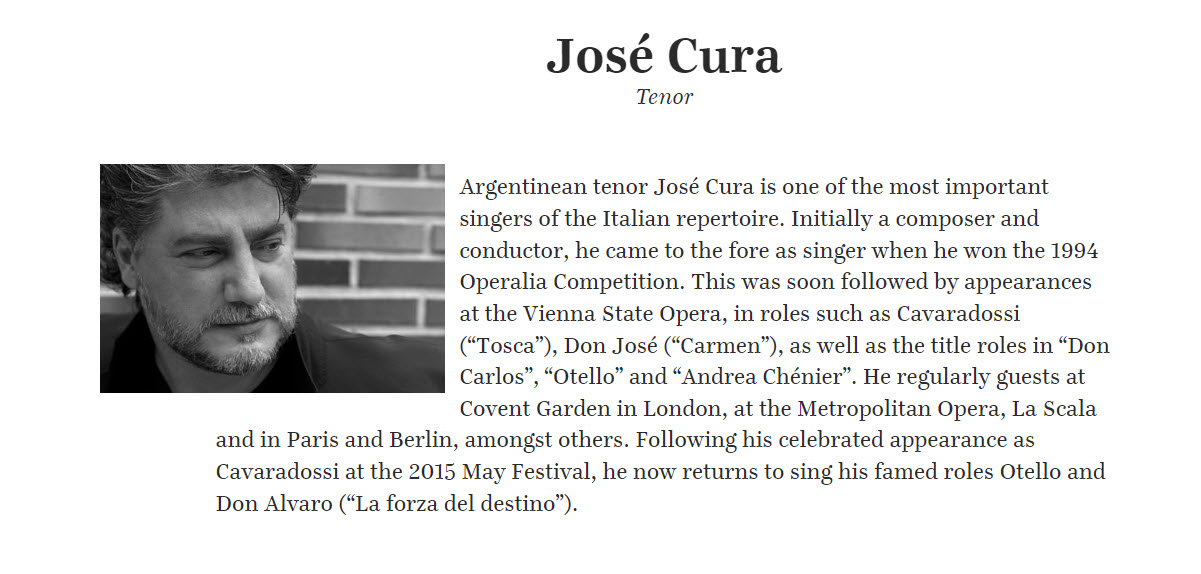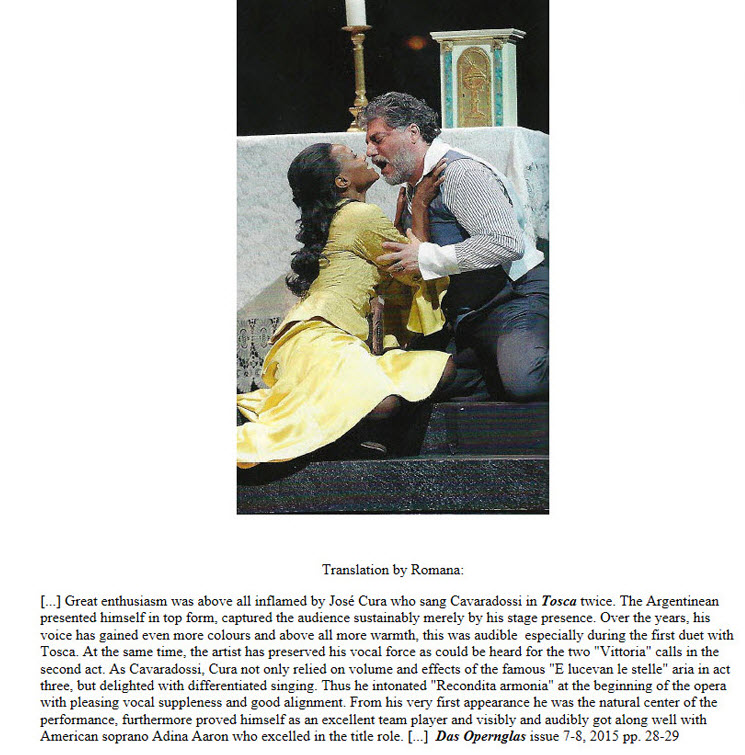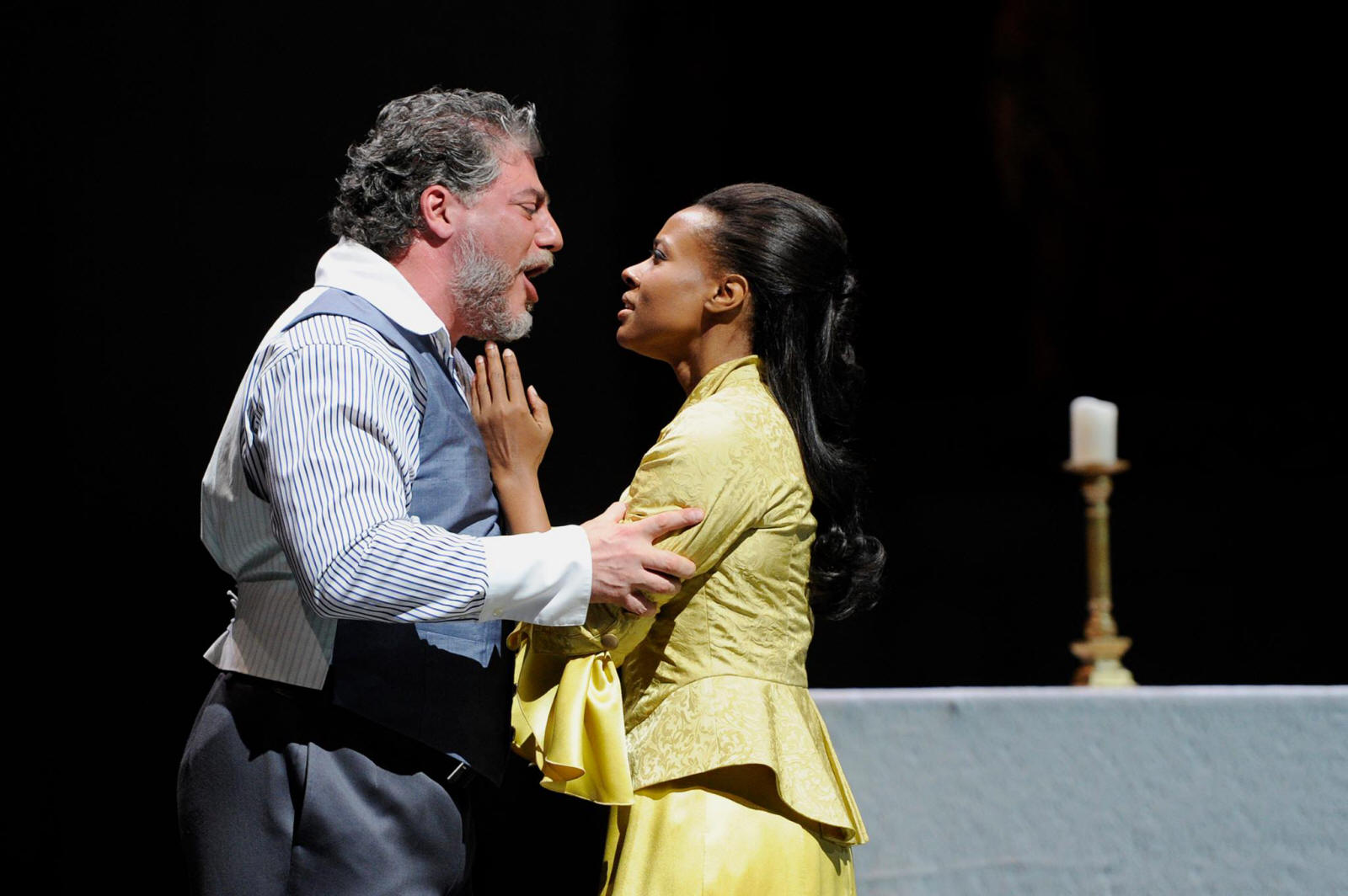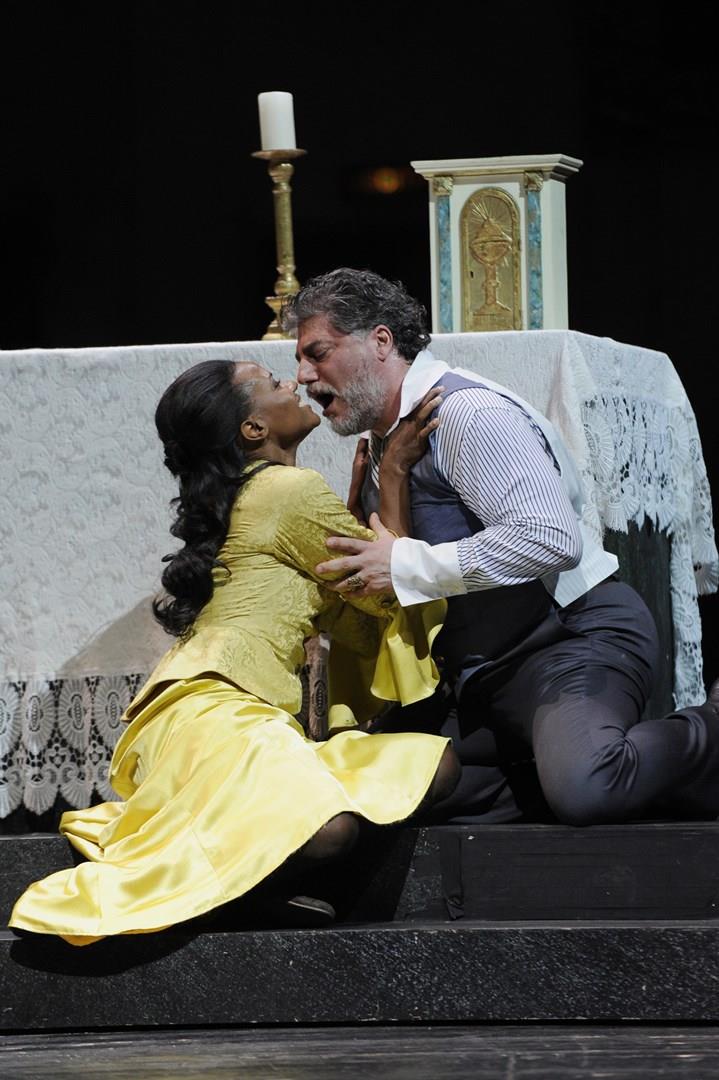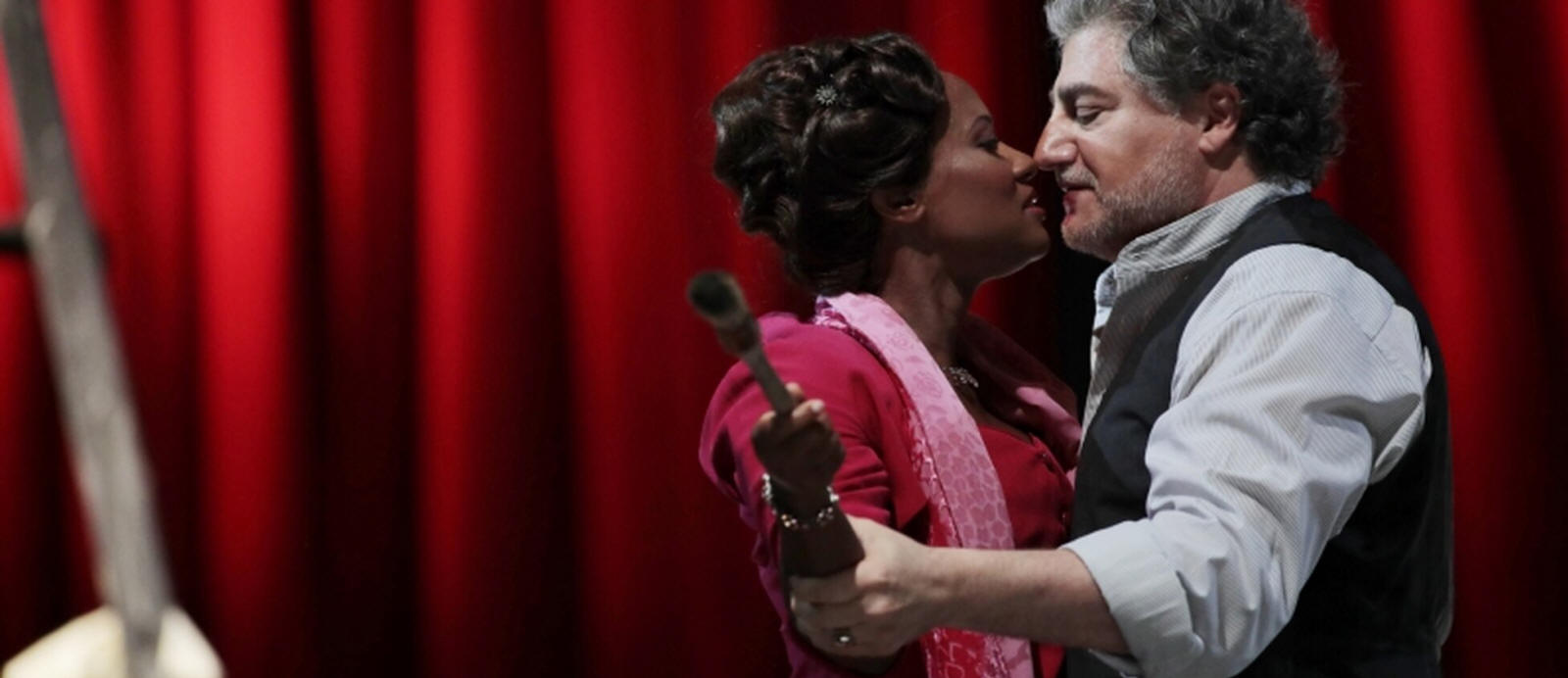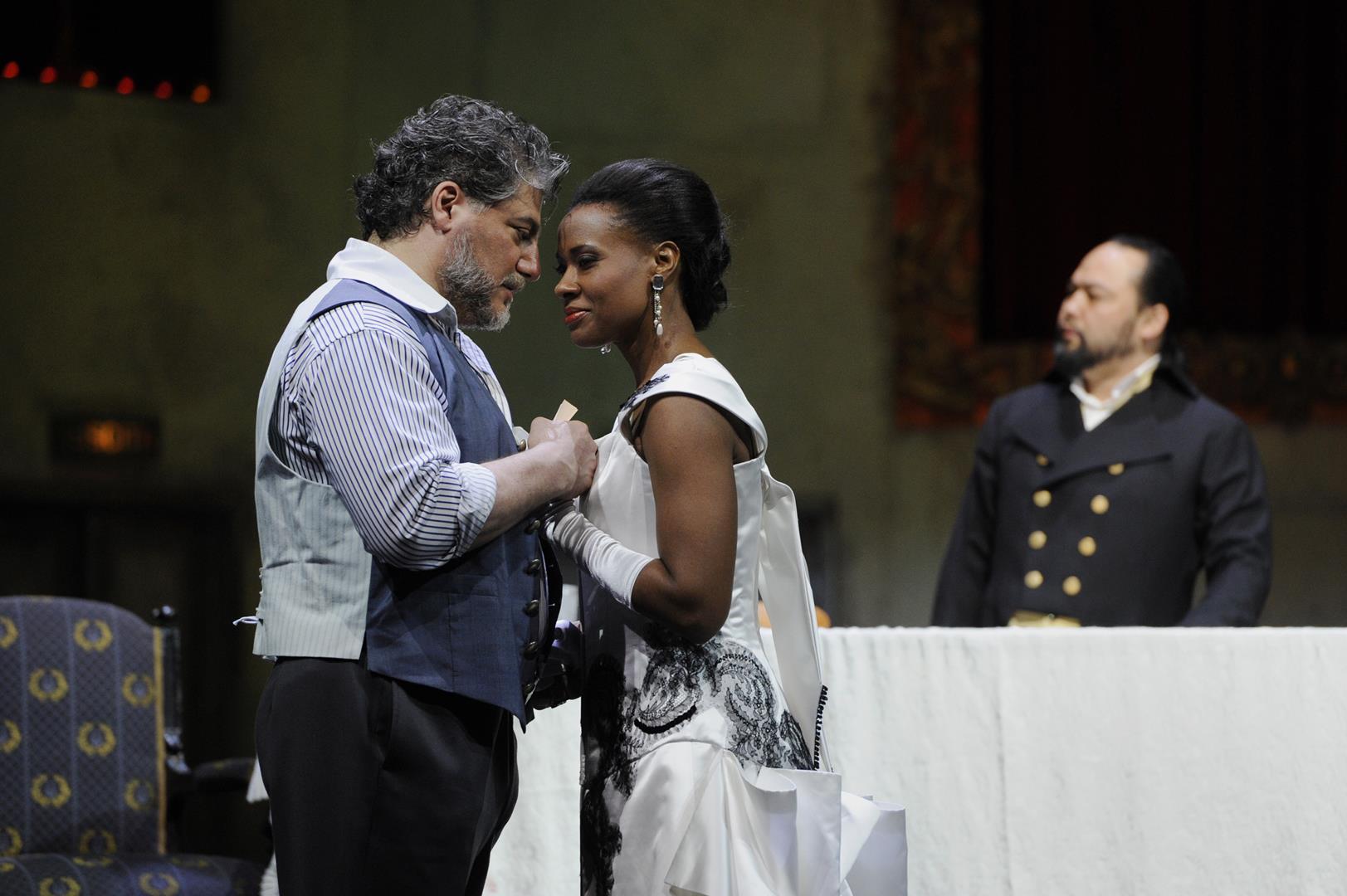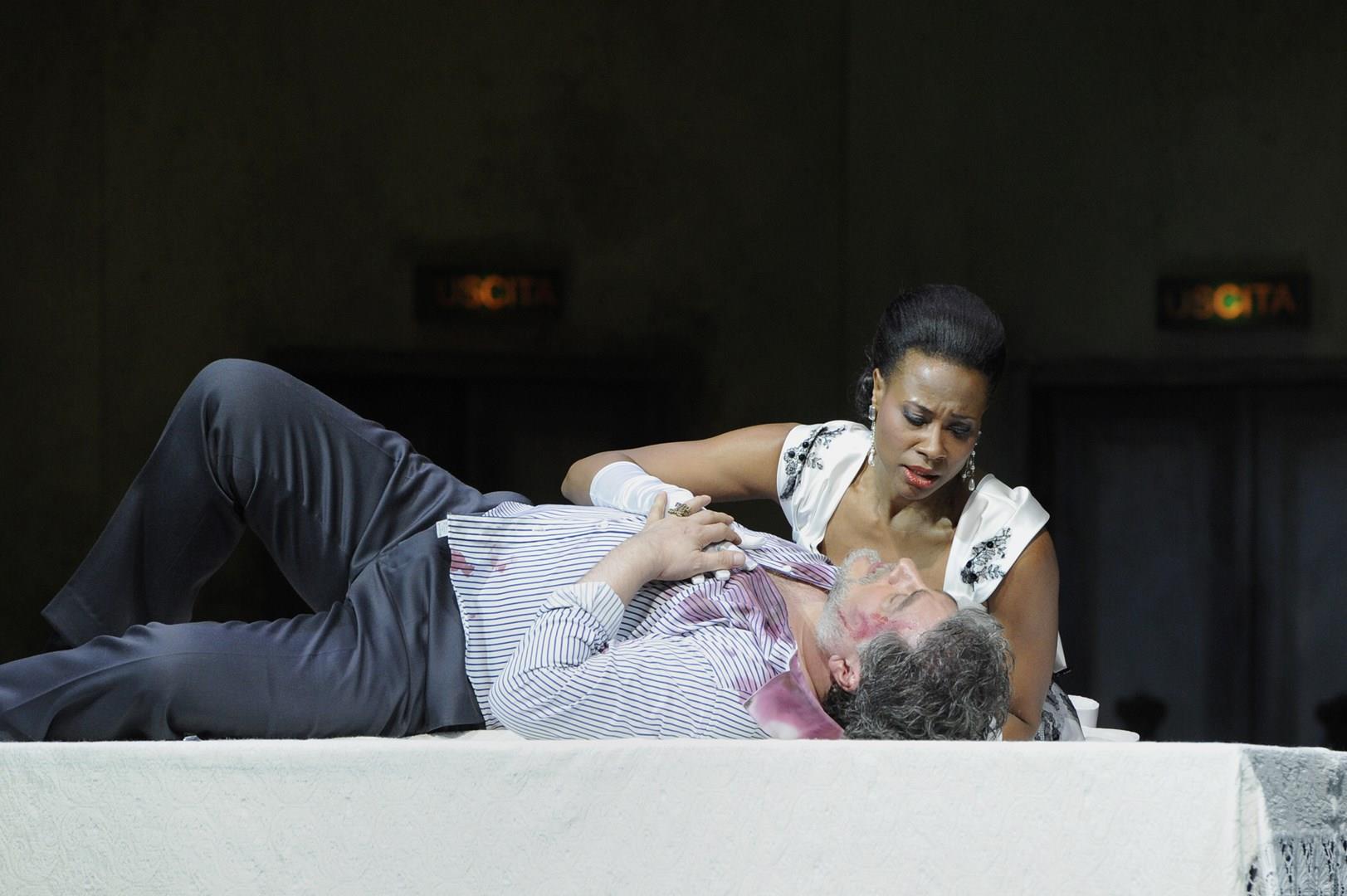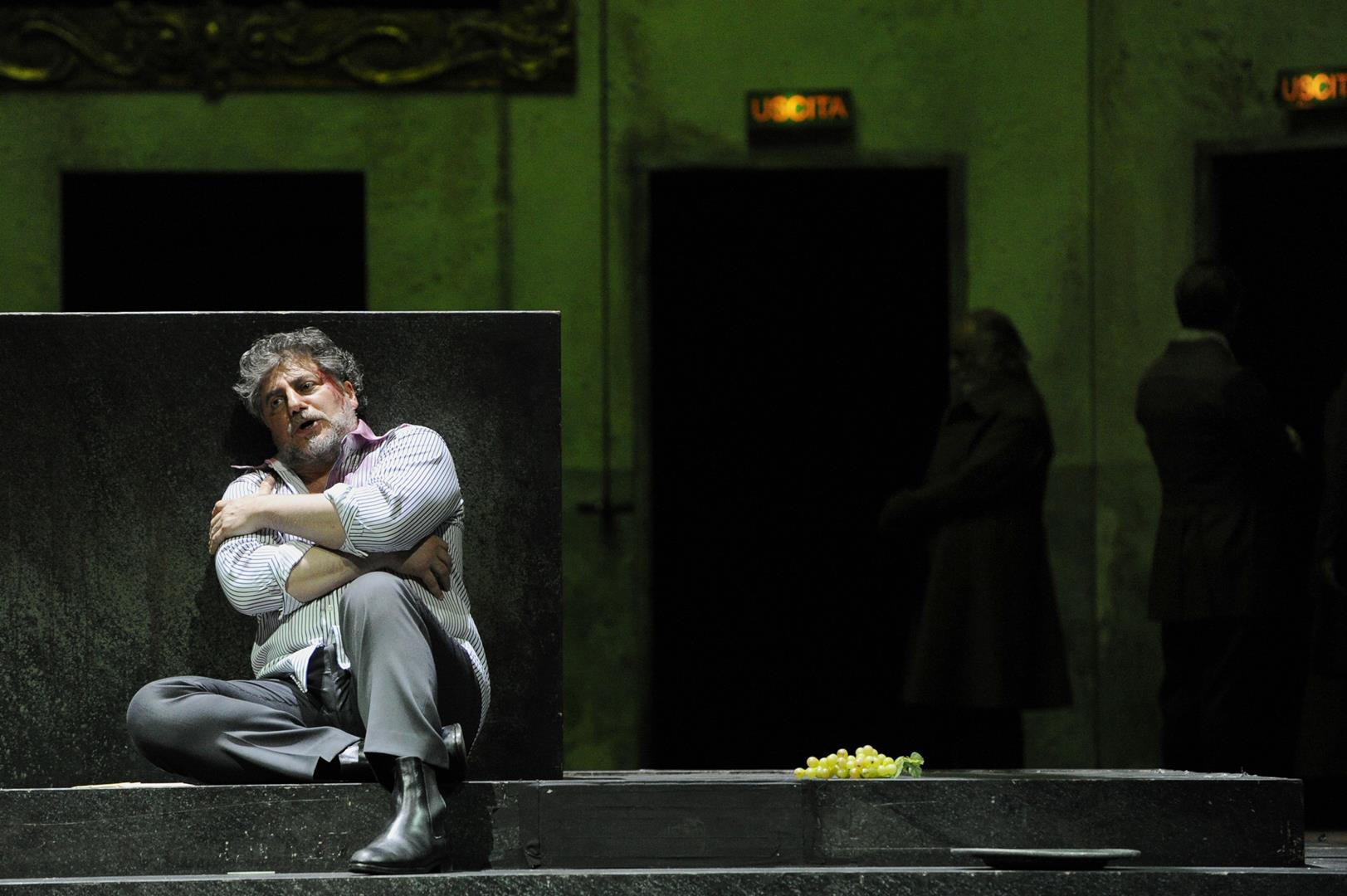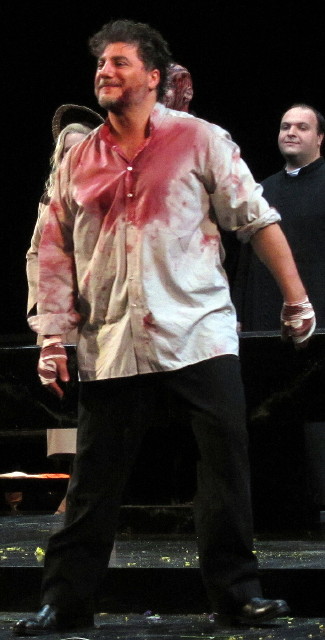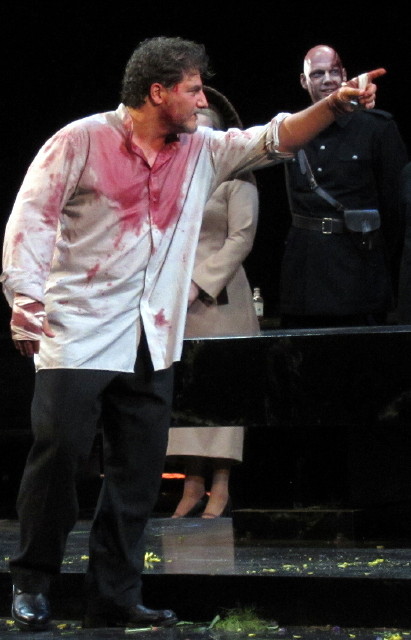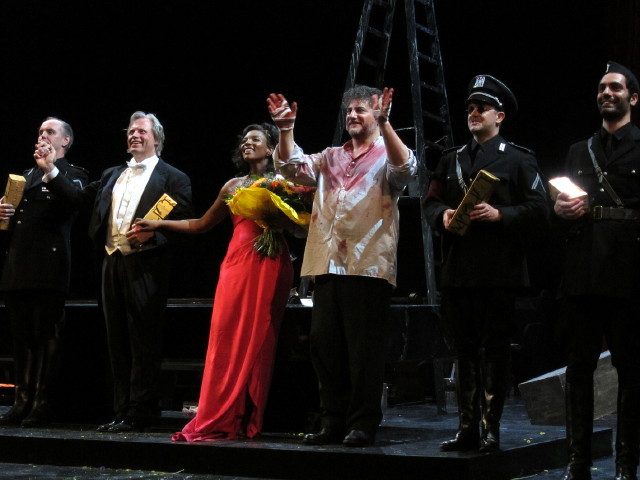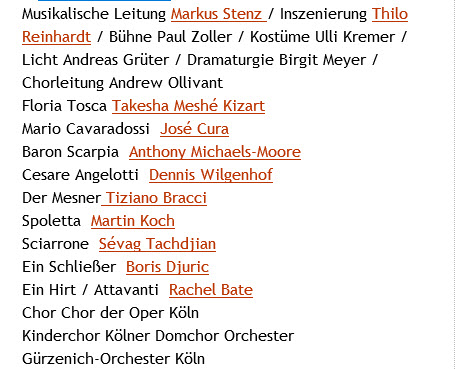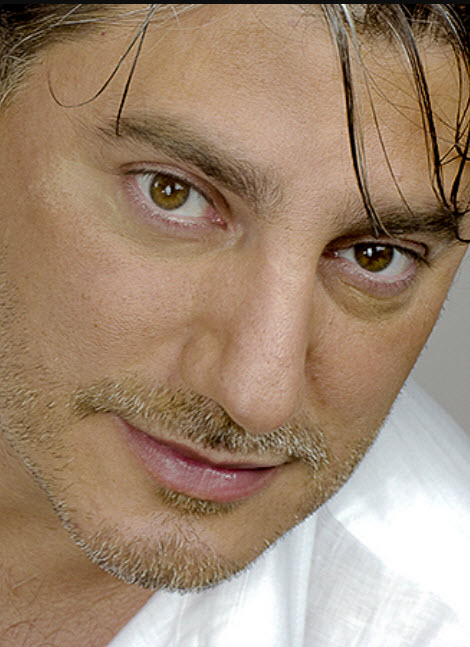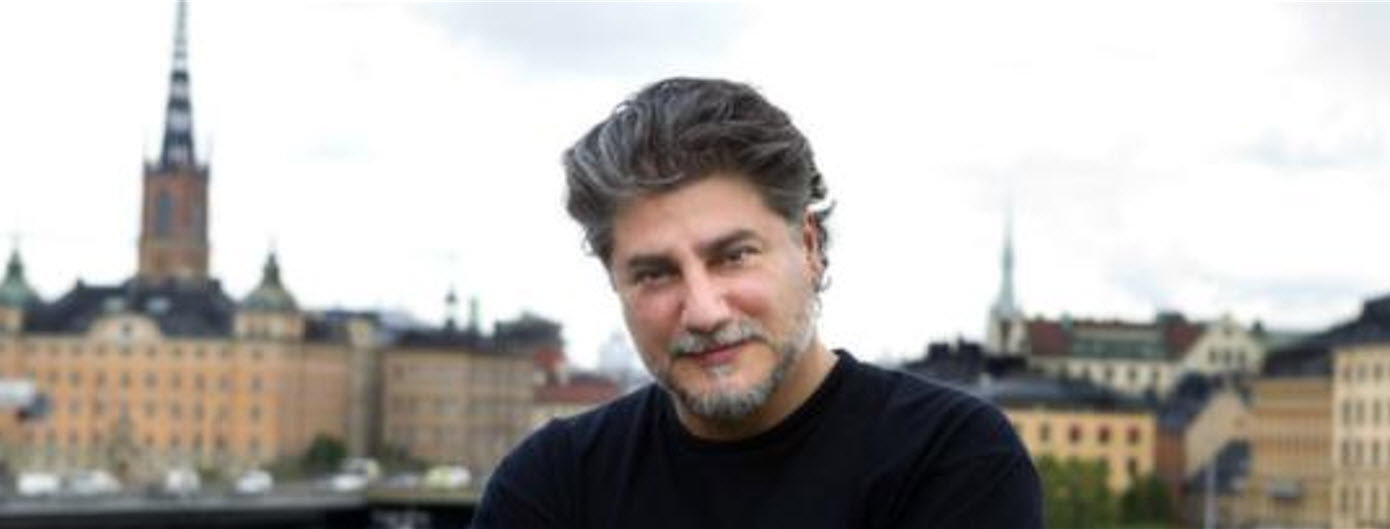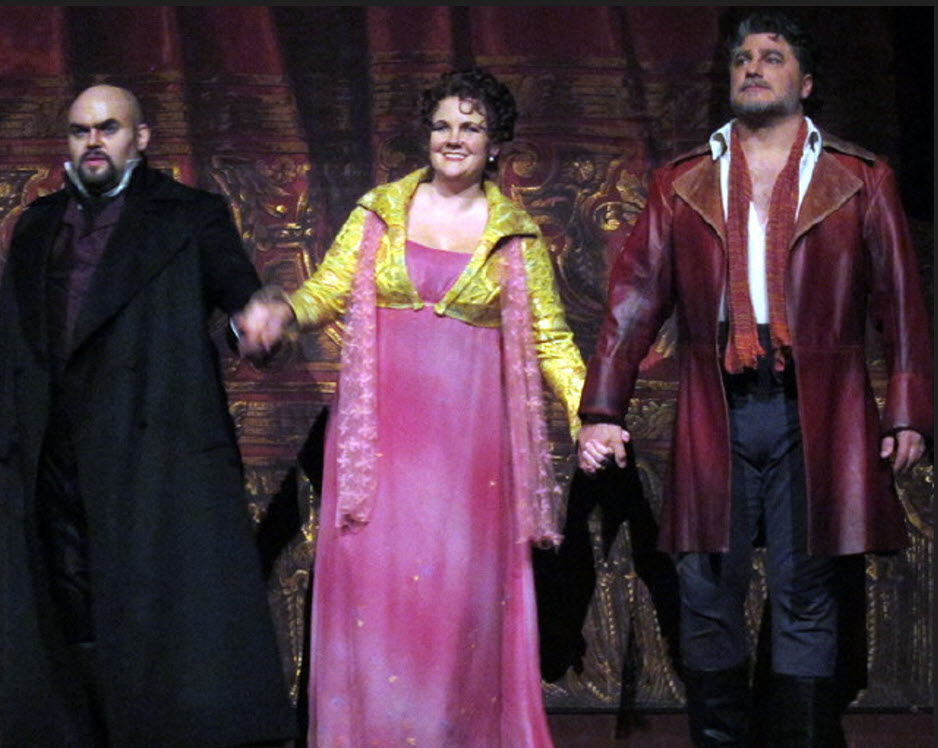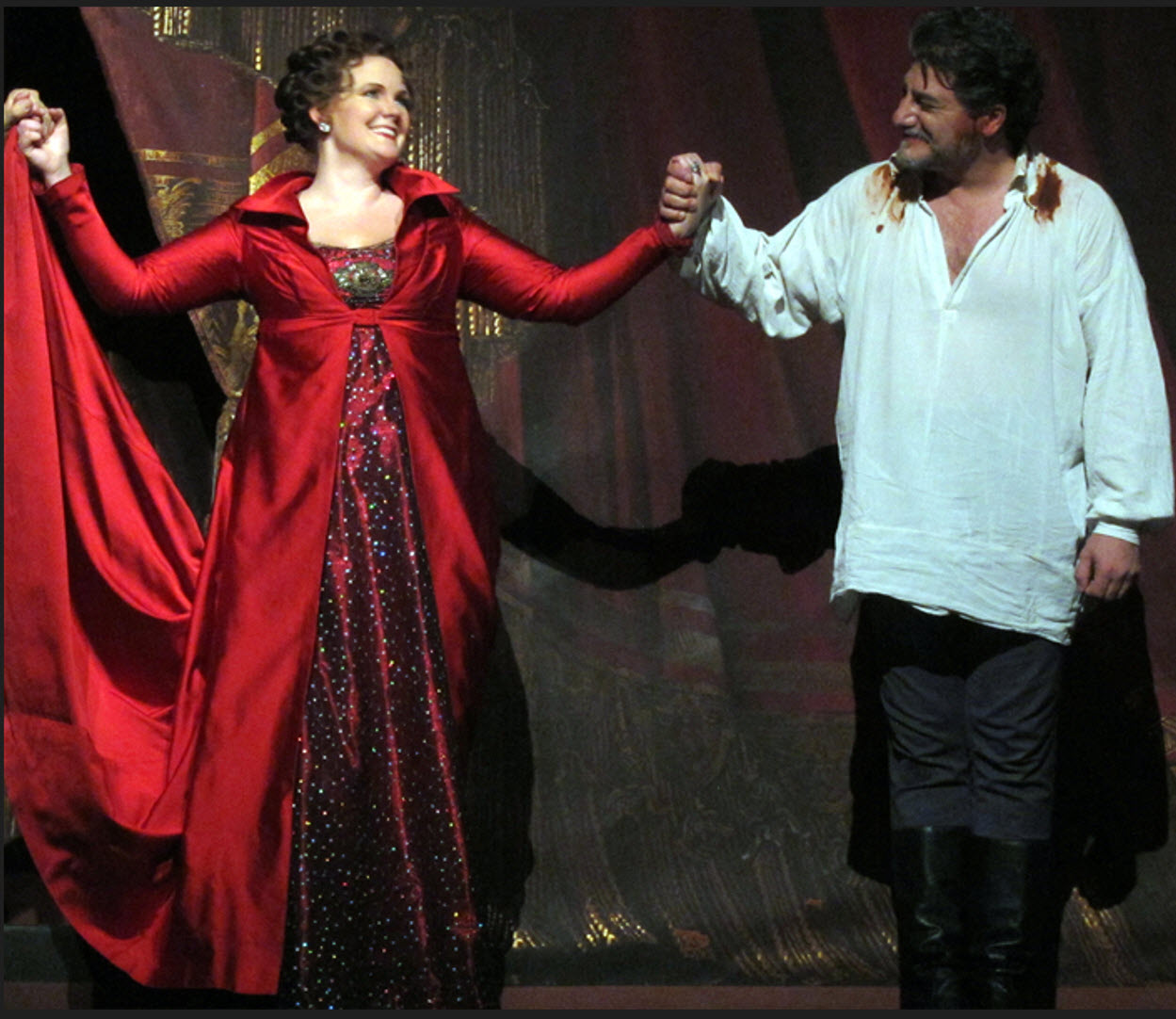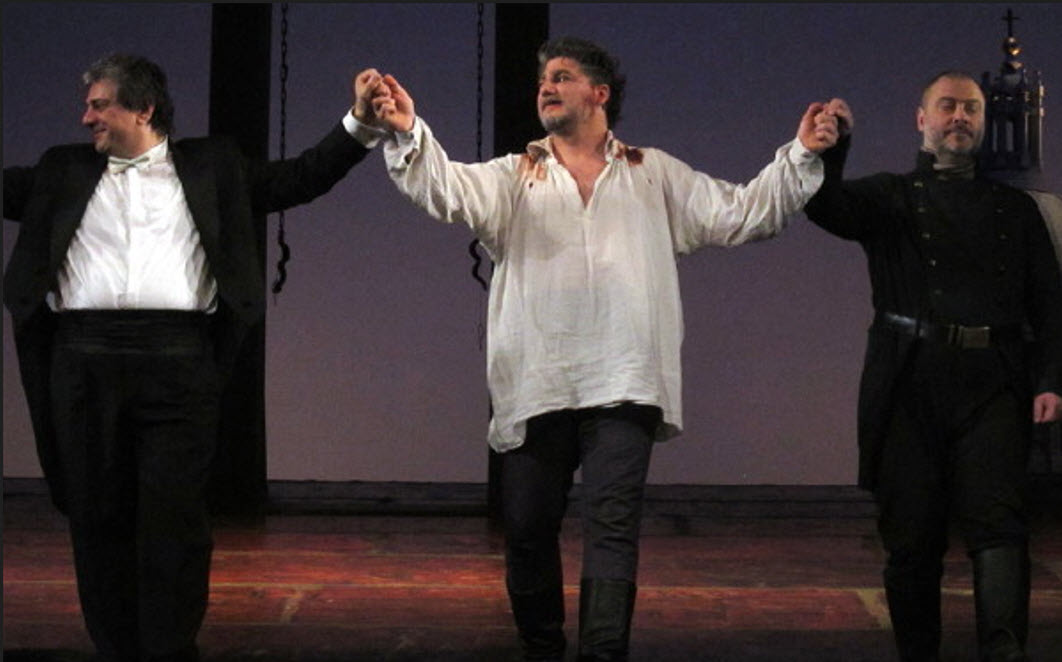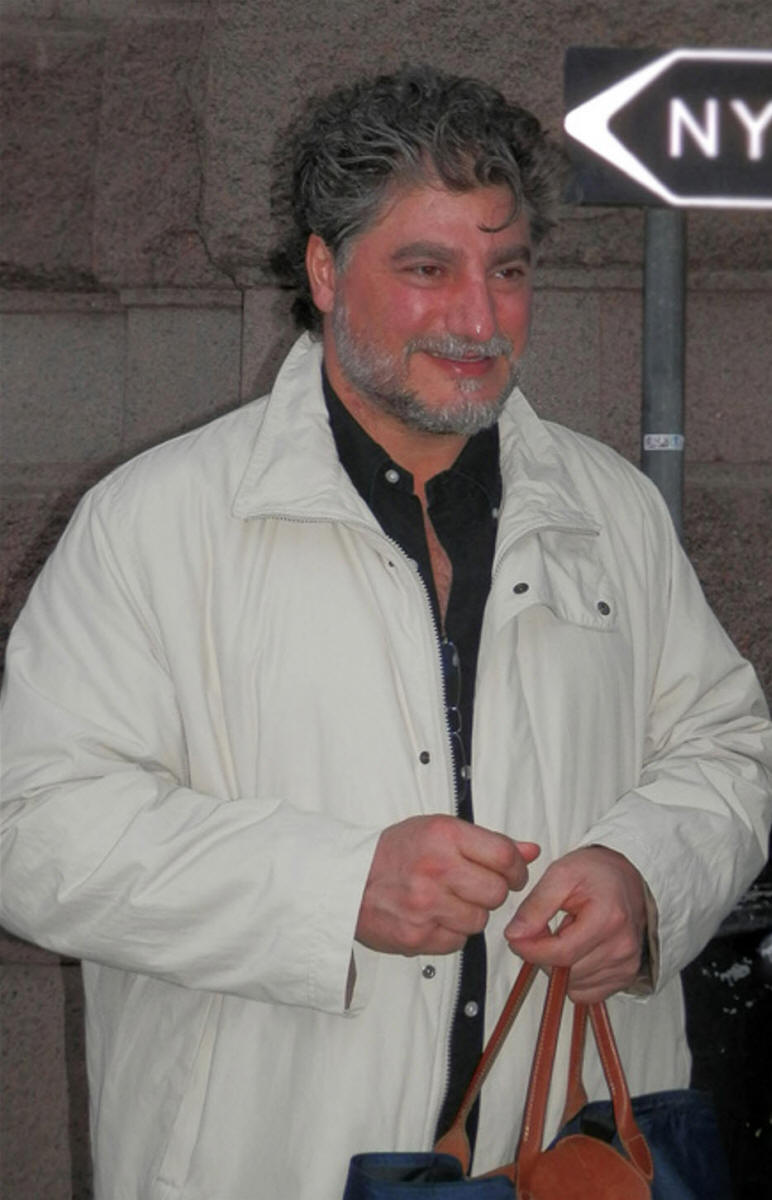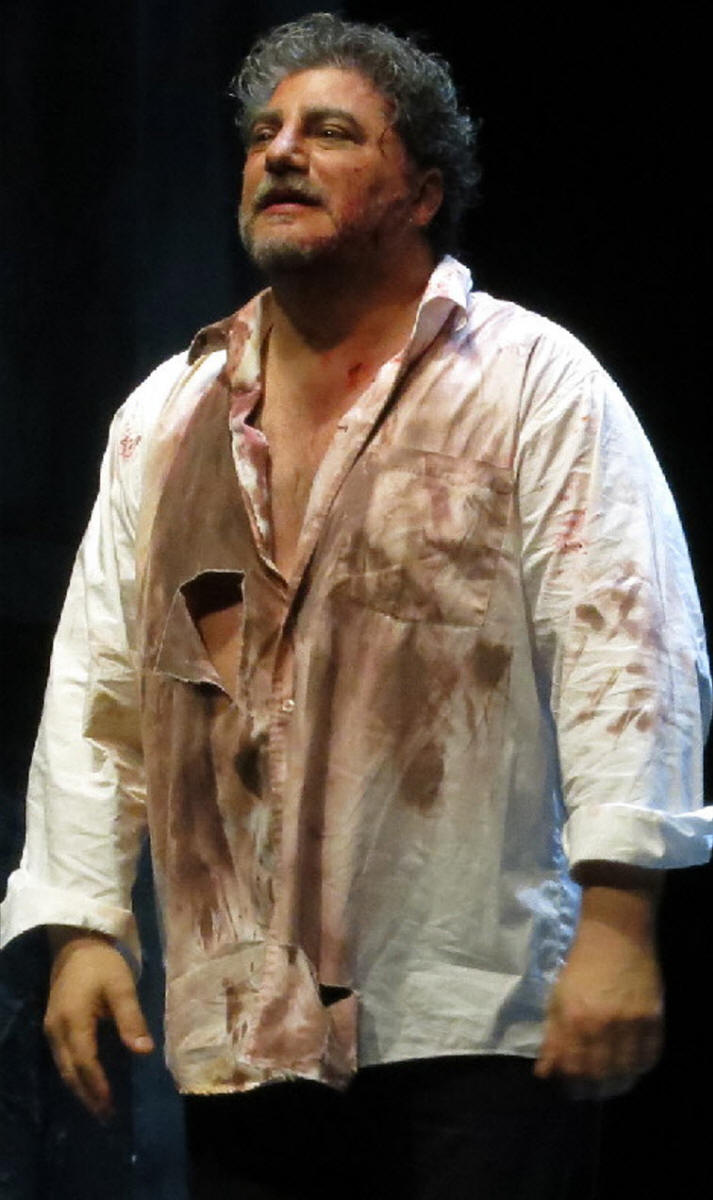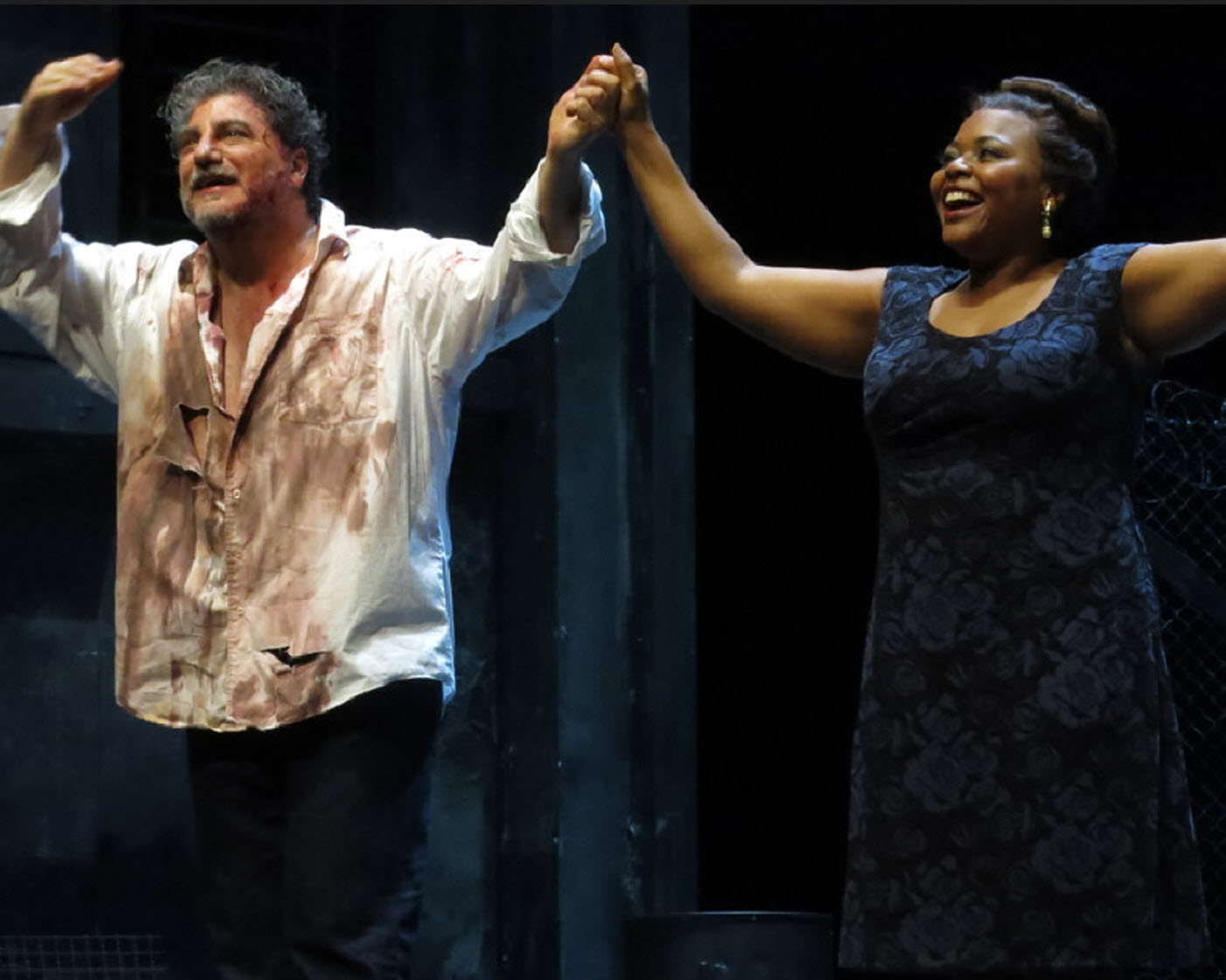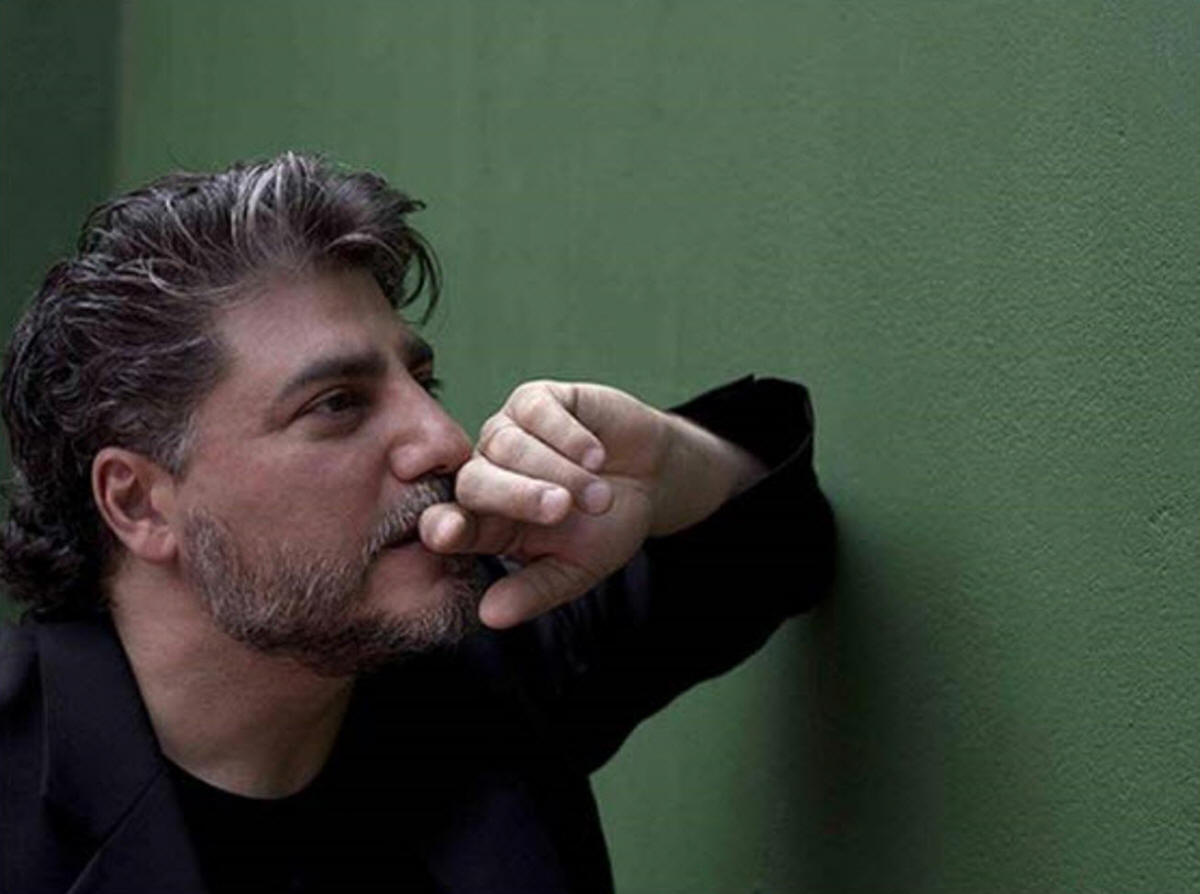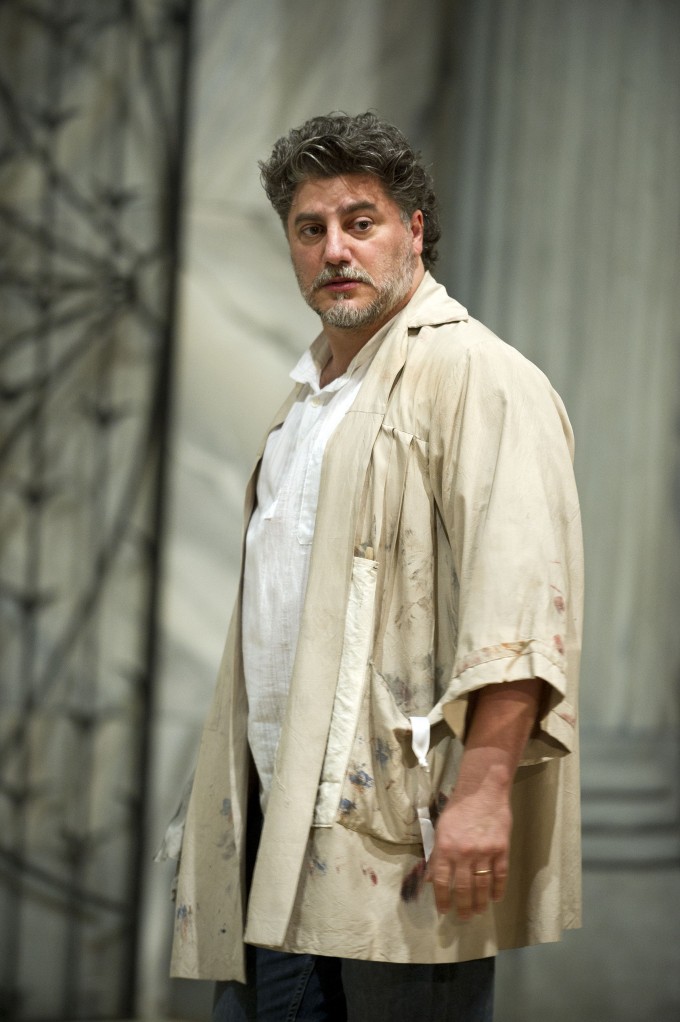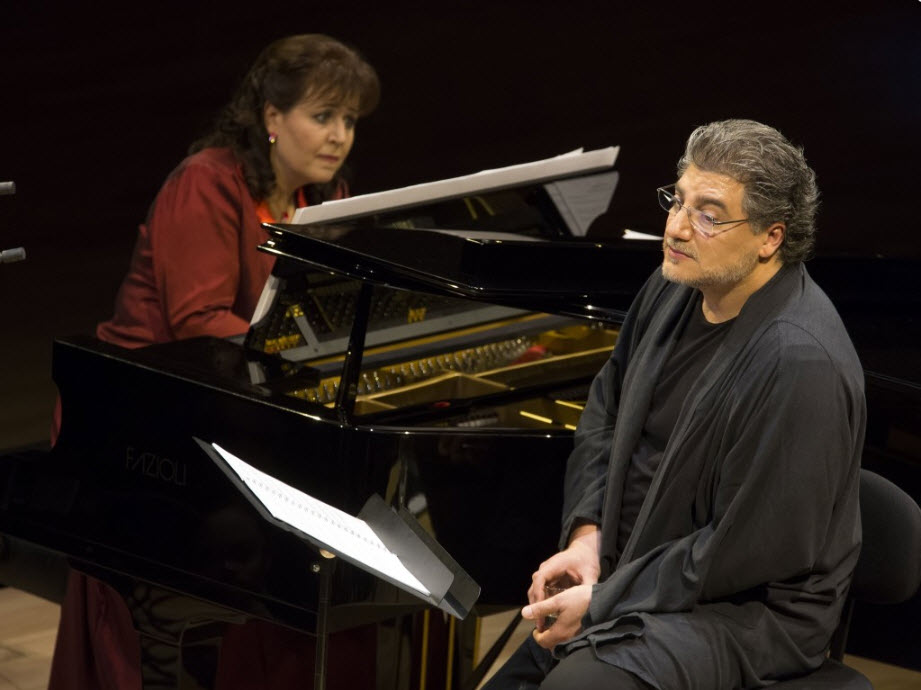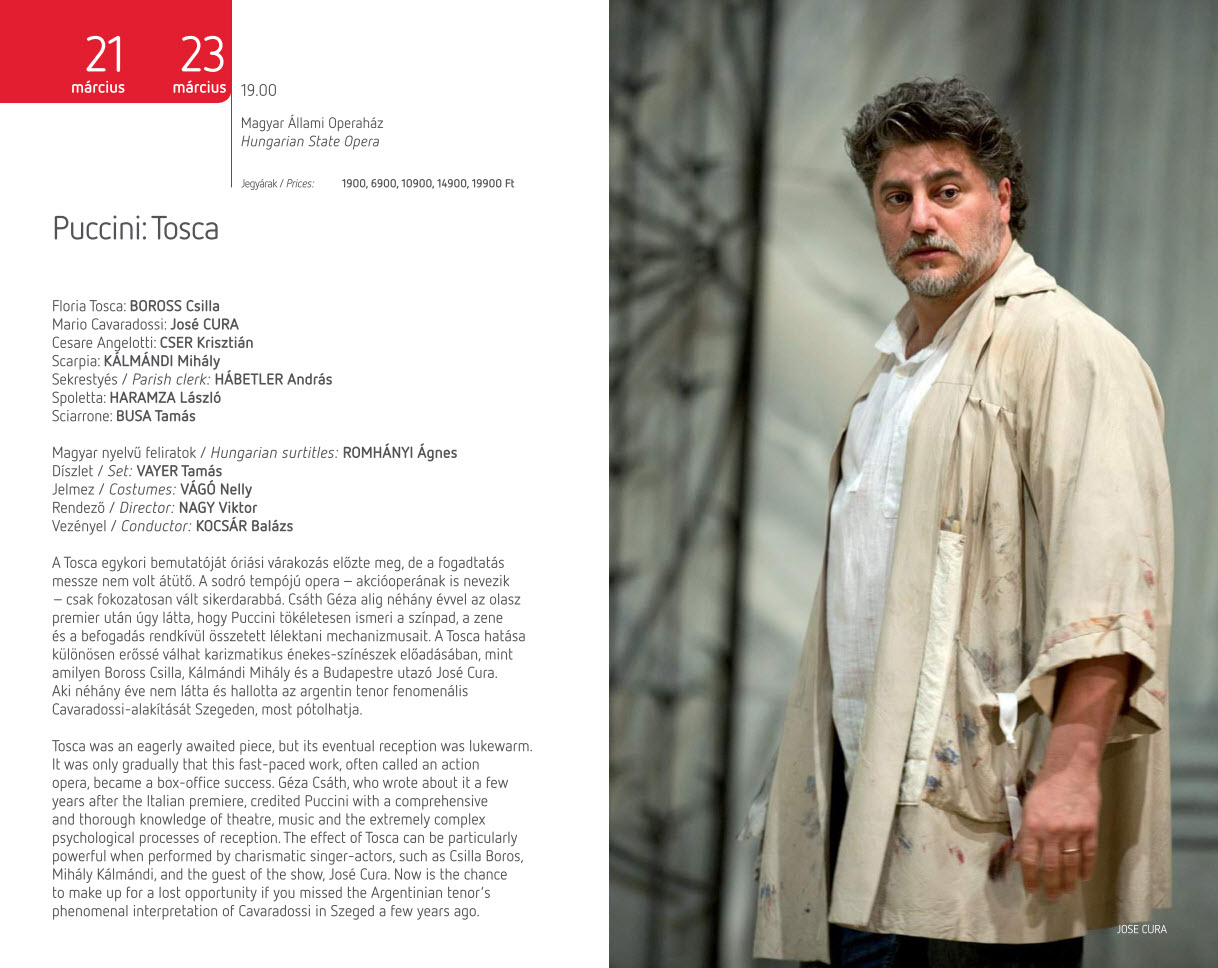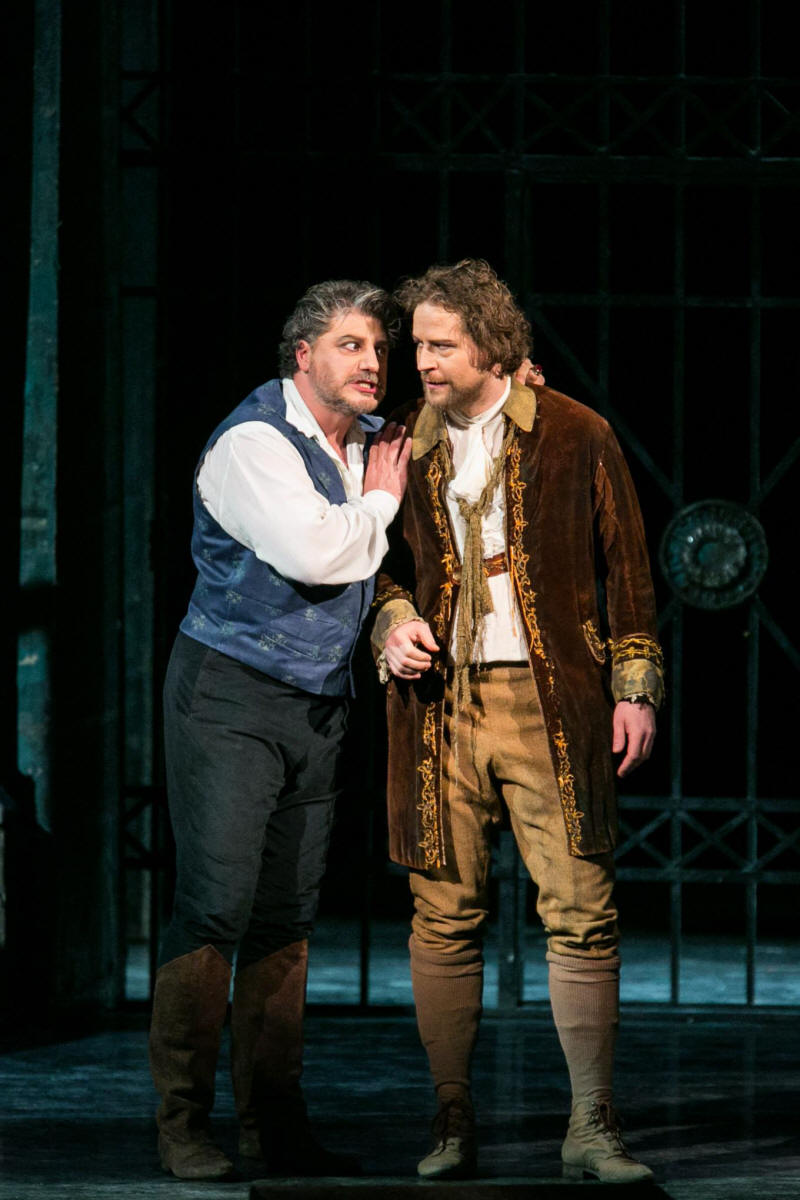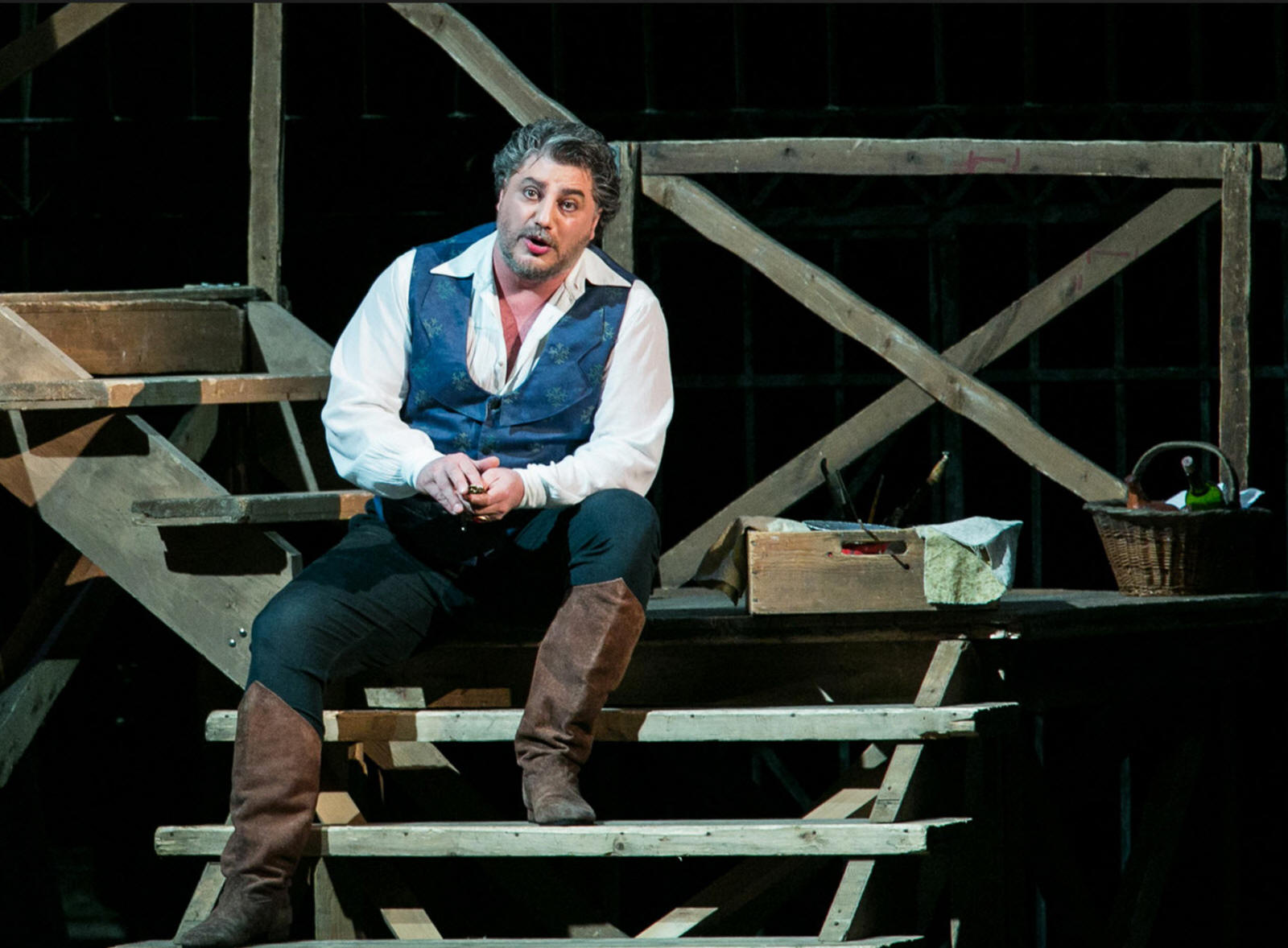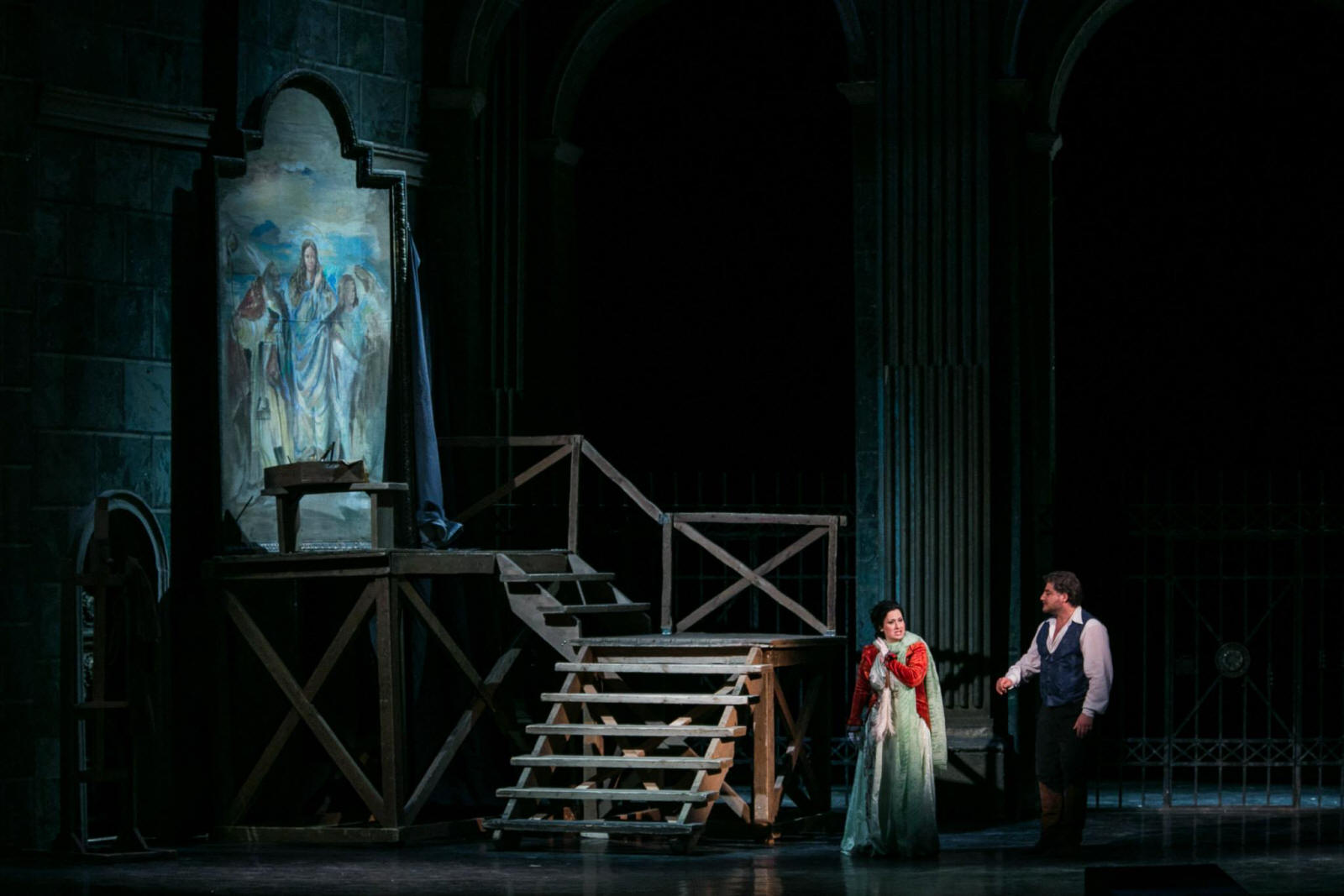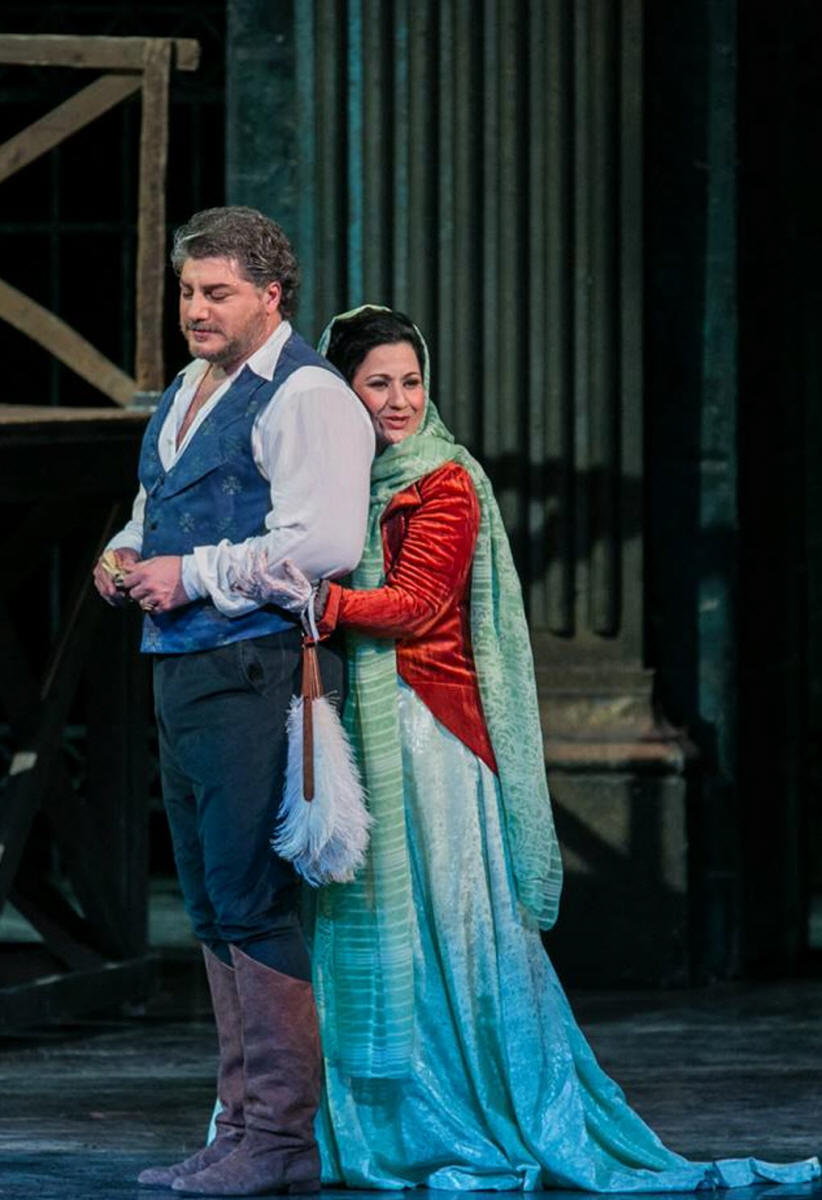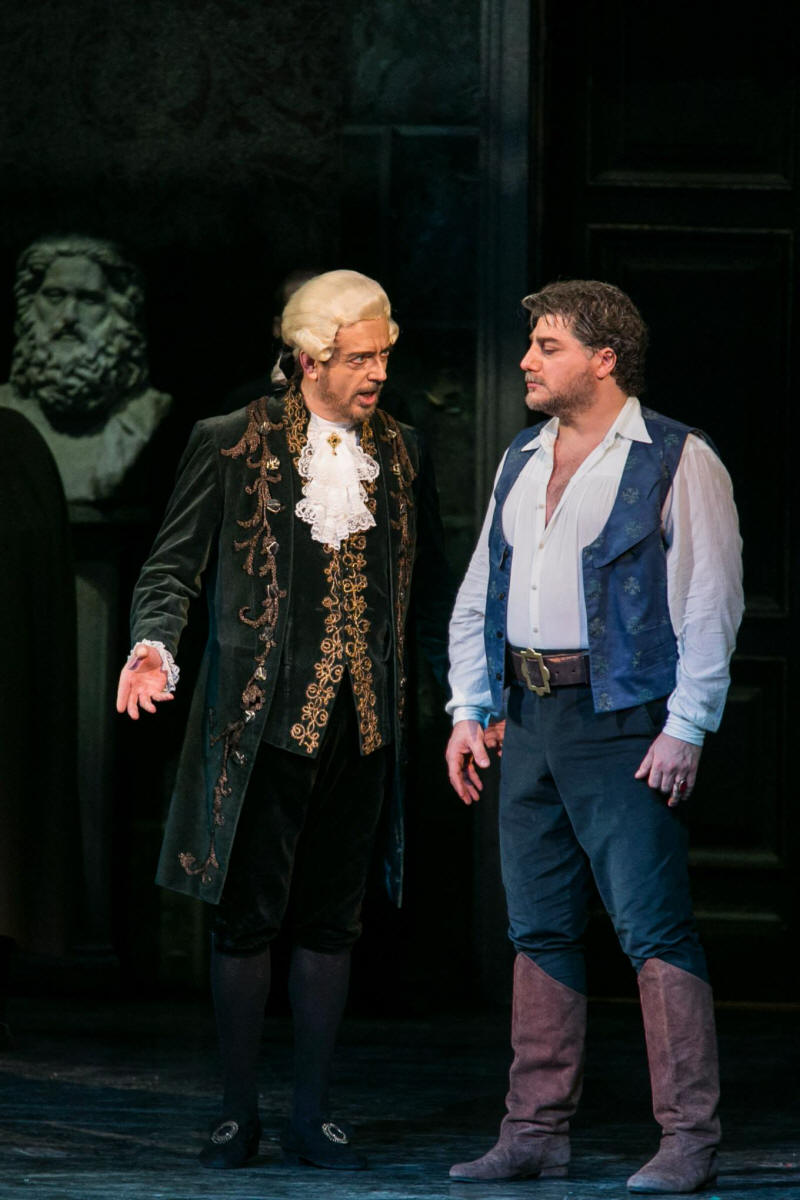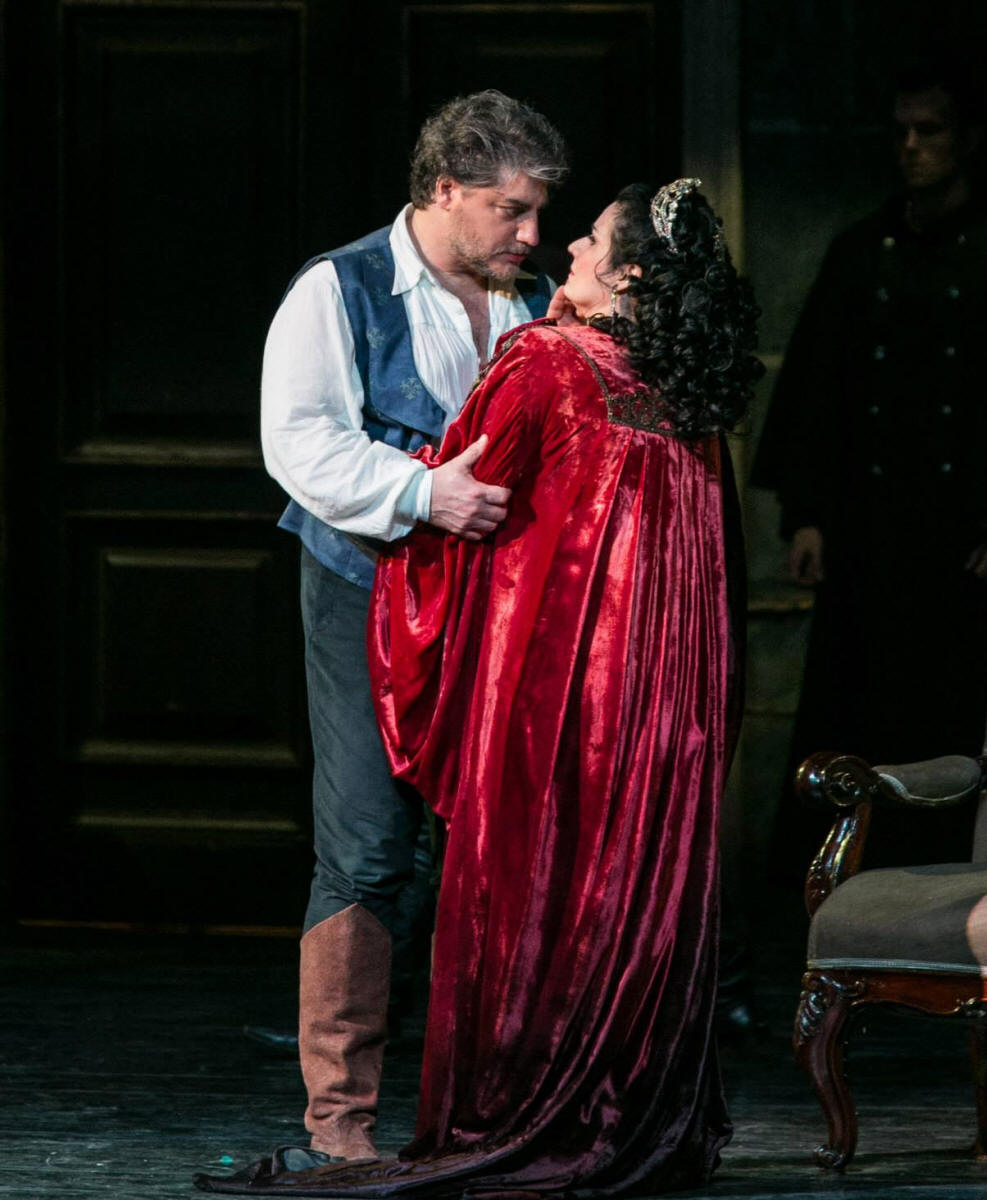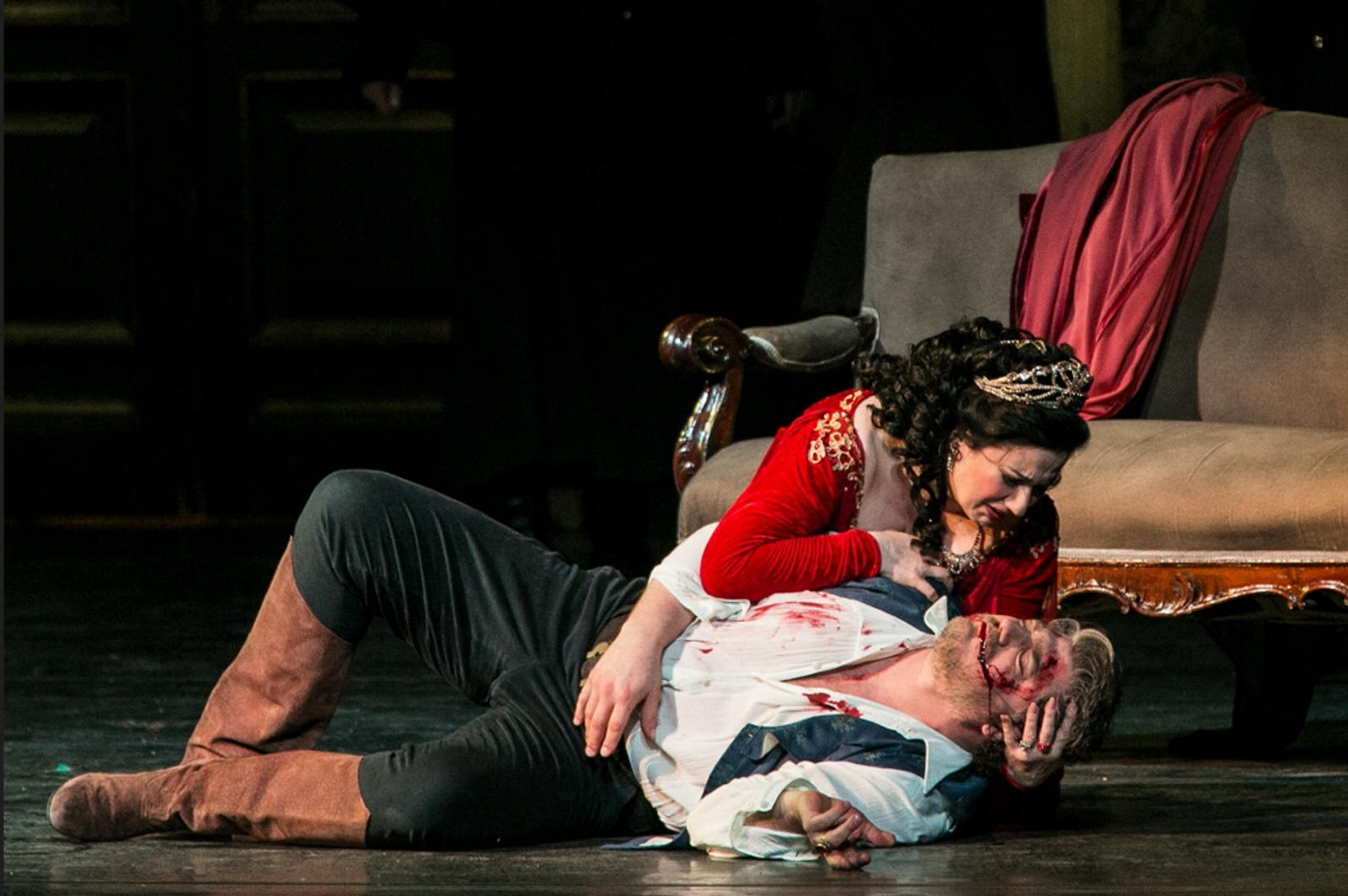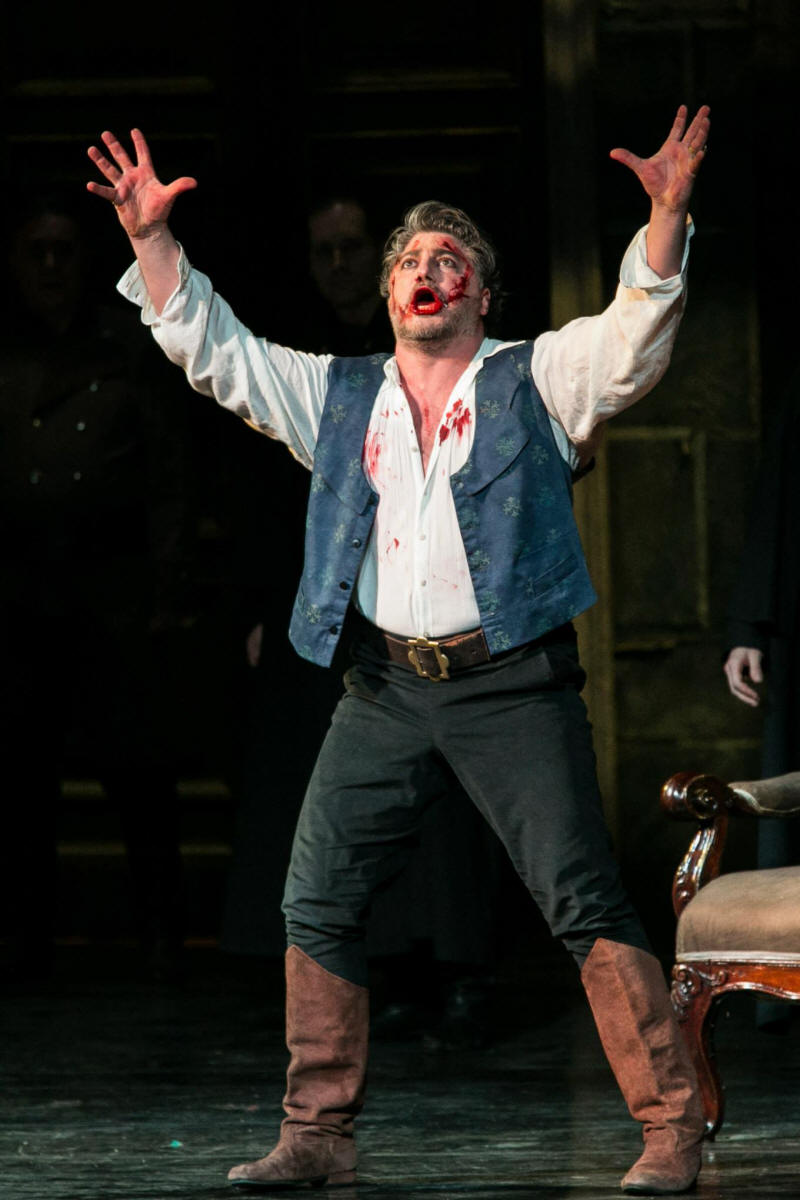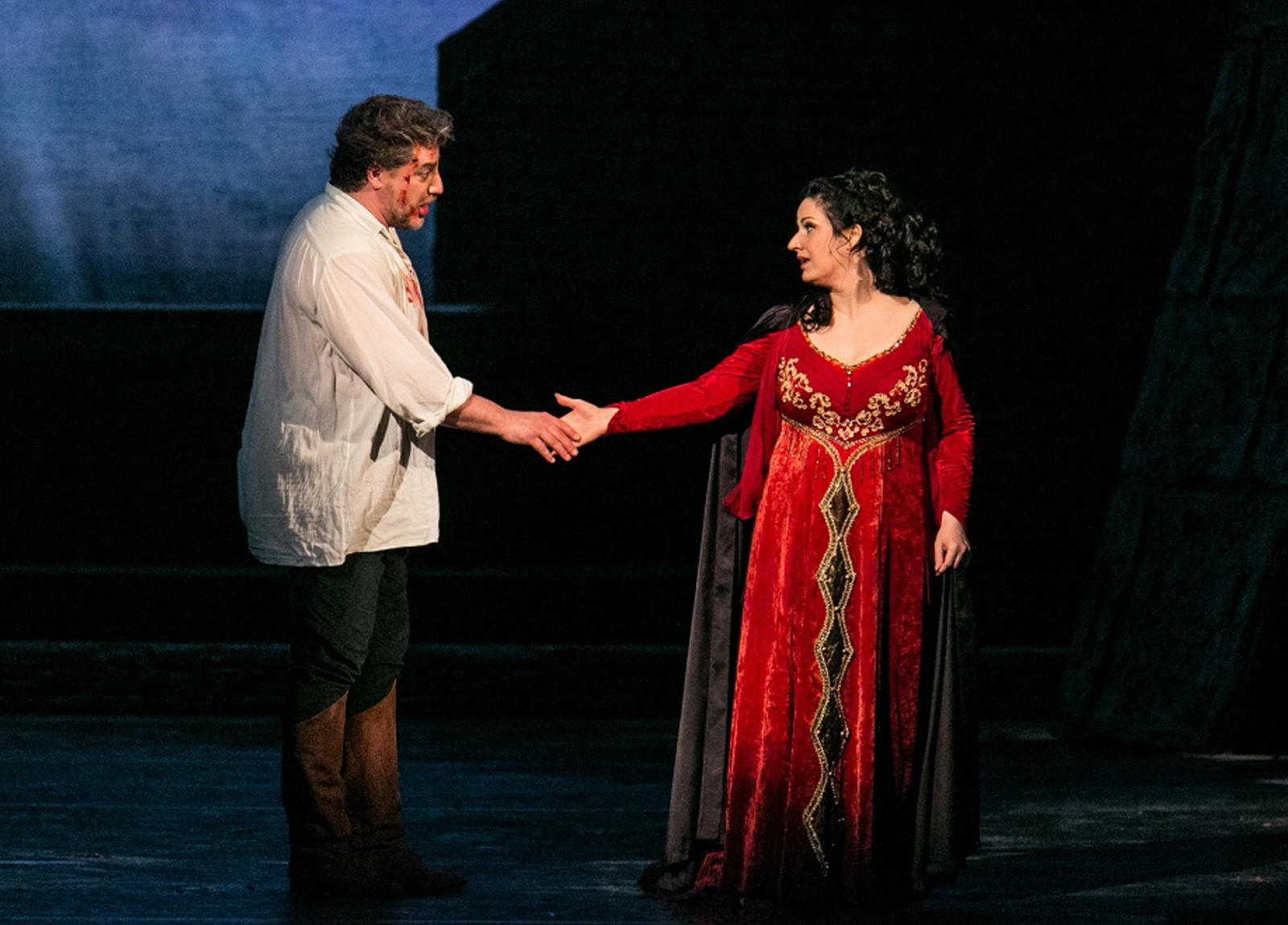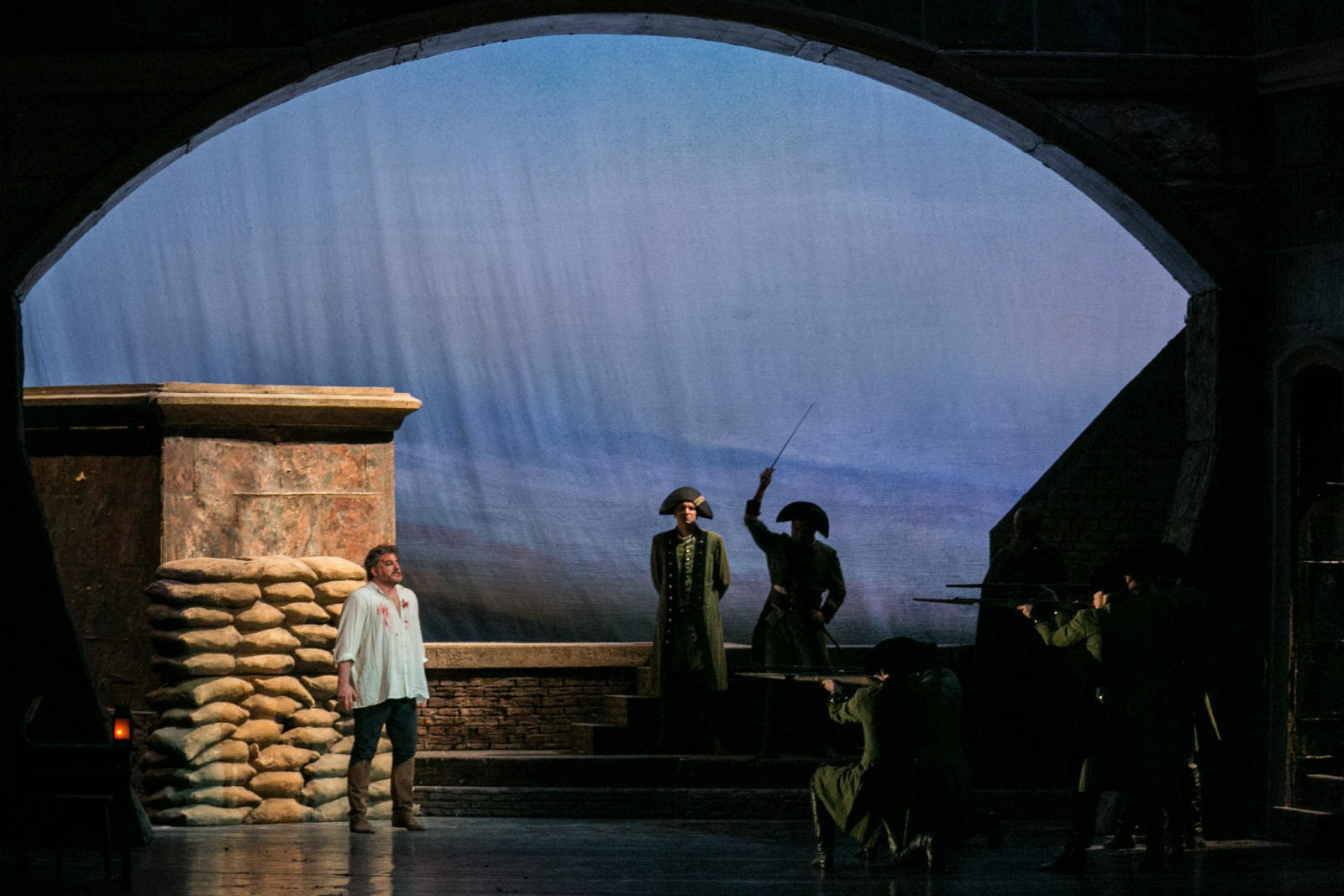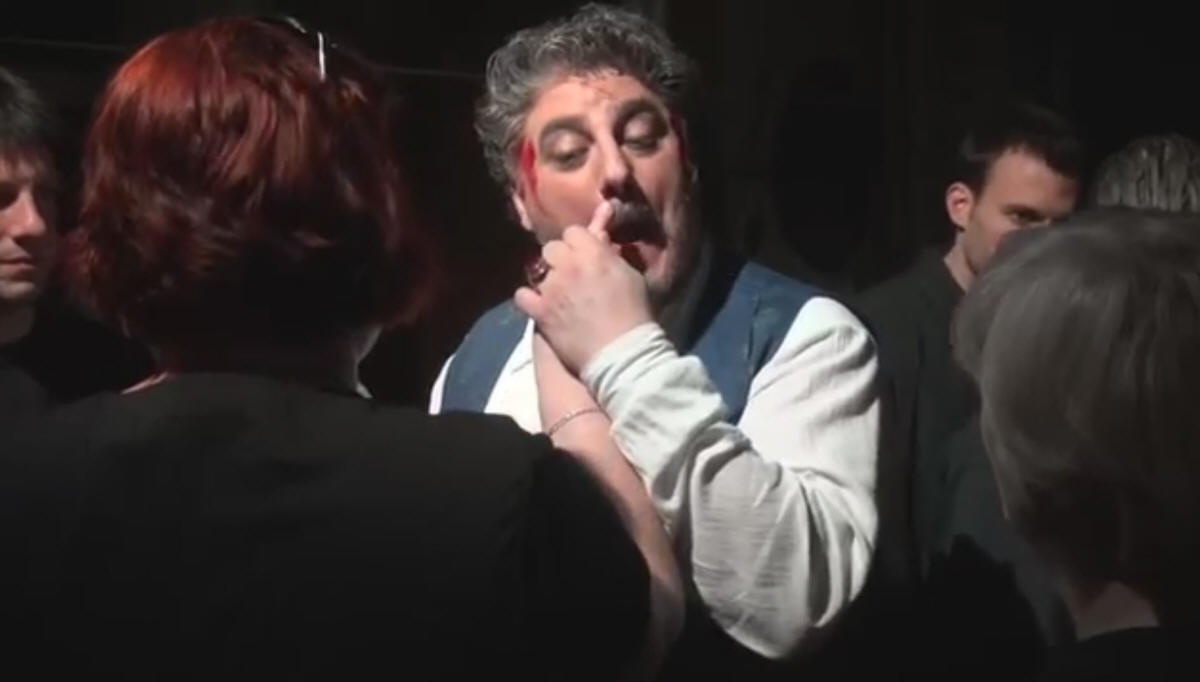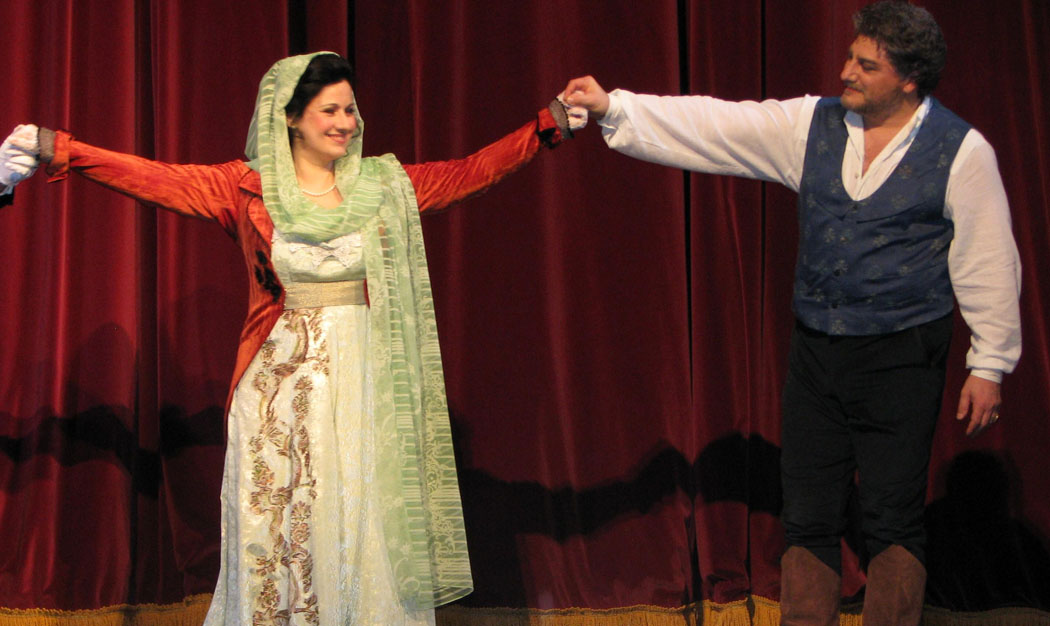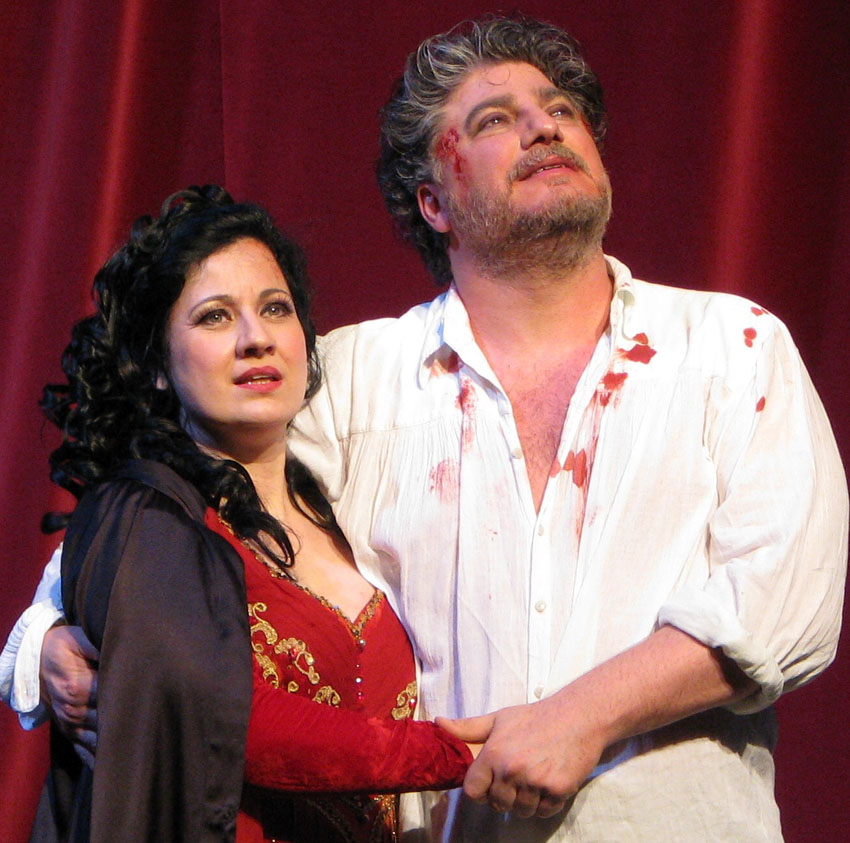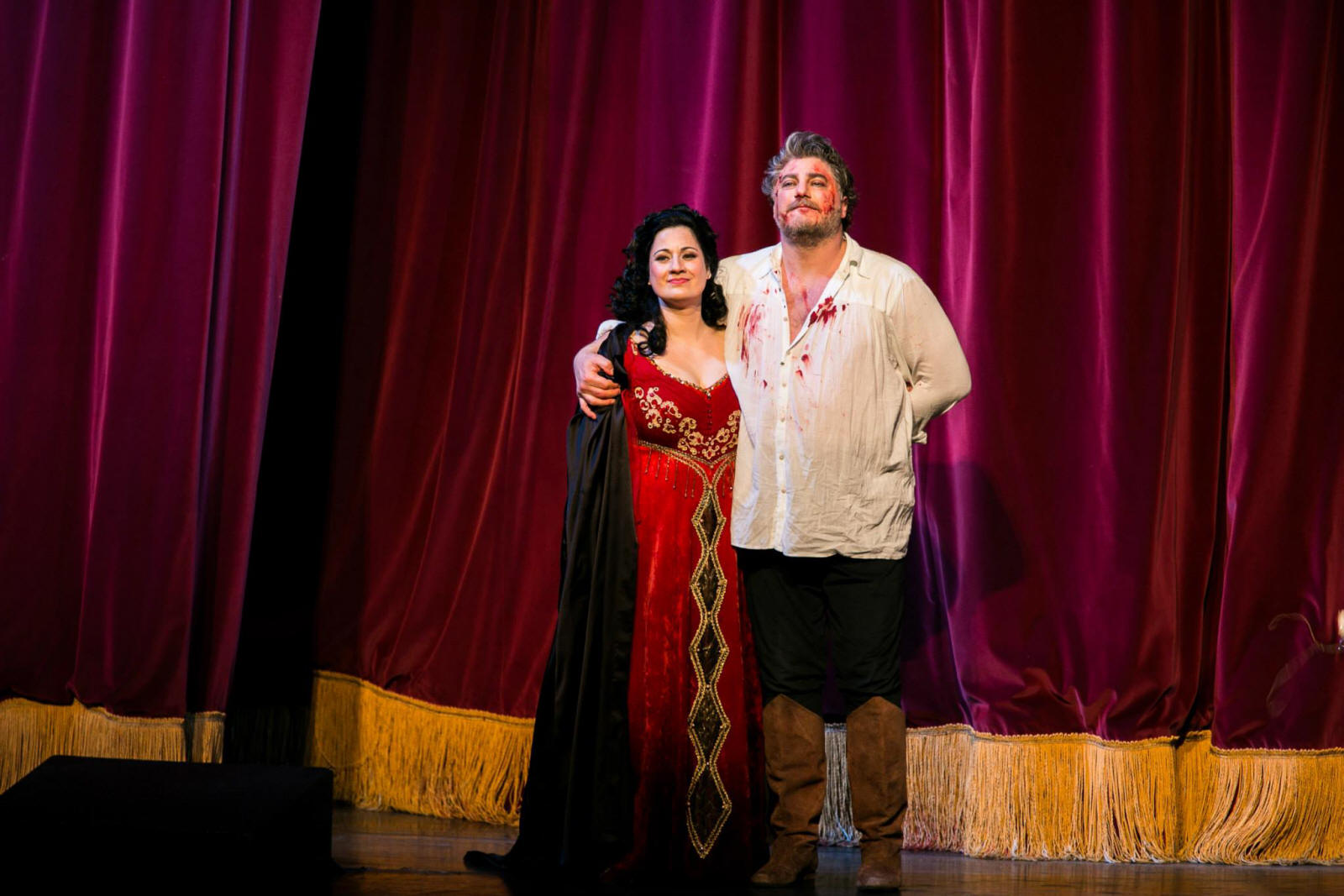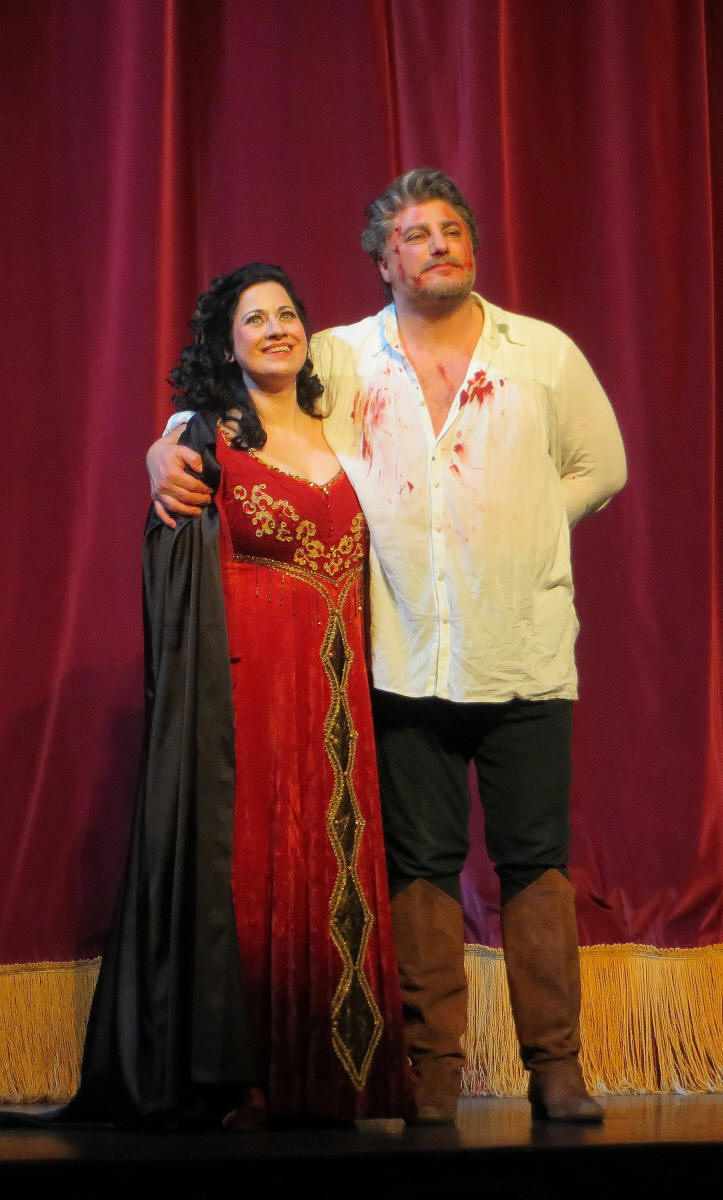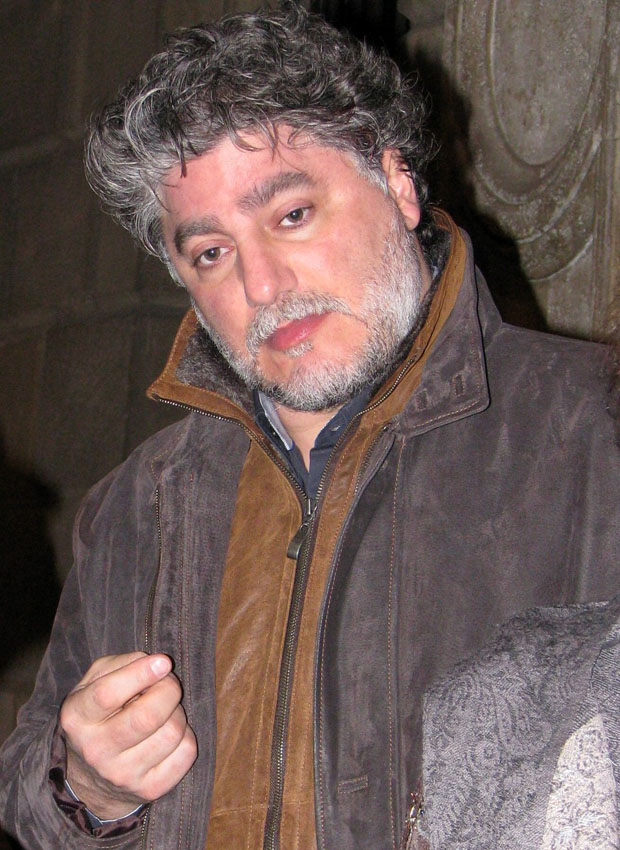|
|
|
A ‘Tosca' Triple Threat
Fred Kirshnit [Excerpt]
Singing the title role was soprano Maria Guleghina, substituting on short notice for the troubled Andrea Gruber, who was ill. Ms. Guleghina had the role two seasons ago, and I wrote at the time in these pages that her acting ability was superb even as her vocalizing was somewhat haphazard. Her instrument is powerful and solid, adept and accurate, but not usually described as beautiful. However, on this night she came close, her "Vissi d'arte" not only moving but lovely as well. Making his debut in the role of Cavaradossi was Argentinian tenor Jose Cura. When I heard him two years ago as Samson in the Saint-Saens, I was disturbed by his bellowing, but this evening he was actually quite good — he maintained a smooth lyrical line while intoning at an impressively high volume level. And he was a natural partner for Ms. Guleghina, who is also a champion projector. Their "Non la sospiri la nostra casetta" has to be one of the loudest ever, but neither sacrificed any intonation for this house-filling sound. Mr. Cura's "E lucevan le stelle," his character's last big number and one of Puccini's most poignant compositions, was really very moving. James Morris returned as Baron Scarpia — a little raspy, but somehow his growl was just perfect for this naturalistic trio of singers. All three were a little grainy in their respective throats, but this only ornamented an altogether earthy performance. The story of the night, though, may well have been in the orchestra pit with the excellent leadership of debut conductor Nicola Luisotti, who grabbed our attention from the first notes and kept up an intensity rare for a non-Levine performance at the Met. Having three such prodigious singers allowed him to let loose the forces of his magnificent instrumental ensemble without worrying about drowning out the stars. He made the most of his opportunity. This was performance number 881 of "Tosca" at the Met. Maybe this wasn't the most beautiful "Tosca" in memory, but it may have been the most memorable for quite some time.
A Valiant Leap into a Title Role after a Canceled Performance
New York Times November 3, 2006
[Excerpt] Andrea Gruber is a soprano who flings herself into roles. And [she] certainly threw herself into Tosca. And there was a kind of violence to her approach, both thespian and vocal, that helped shape a counterintuitively appealing figure, tough yet vulnerable, sending her voice and her character out with a great show of bravado and an underlying uncertainty. Unfortunately, in vocal terms this made for more unevenness than mere dramatic verisimilitude should warrant: there were big sounds, but also ones that didn’t seem quite in control, so the overall impression was patchy, even hollow. There were a lot of effects, but not a strong core to her sound or her performance. As if in response, José Cura sang out more than he had on the first night of the run, matching her loudness. It made for a rough evening, but Ms. Gruber’s Tosca was certainly a valiant effort.
‘TOSCA’ Short shot from New York Times: The news was supposed to be that Andrea Gruber was singing her first Tosca, decked out in the stage jewelry Swarovski created for Callas’s first Met Tosca in 1956. The real news on opening night on Saturday turned out to be the debut of the conductor Nicola Luisotti, who actually conducted this piece as if it mattered. José Cura was a bad-boy Cavaradossi who hid his own light under an air of nonchalance, and whose climaxes seemed to be torn out of him against his will (it worked); James Morris was animated into a semblance of flexibility by all the excitement.
Tosca Four Stars Music OHM Dominic McHugh 28 October 2006 [Excerpt]
Until
the advent of Peter Gelb
as the new General Manager,
a visit to the Metropolitan
Opera guaranteed traditional
production values and starry
casts. Making his role debut as Tosca's lover Cavaradossi, Jose Cura seemed a bit shaky at times, but he warmed up considerably. His voice still possesses much of its beauty, and after a nervous first act – perhaps caused by the late replacement of Gruber – he portrayed the character with increasing conviction. The final duet with Tosca was electrifying, and Cura's behaviour at the curtain call was admirably modest, acknowledging Guleghina's achievement in appearing at such short notice. The only major problem of the evening, and the one which reduced the performance from five stars to four, was the conductor Nicola Luisotti. Making his Met debut must have been nerve-wracking for the young Italian, and it showed in his hyperactive arm gestures and very odd tempi. Because of his lack of control, the orchestra started almost a bar too early in 'Non la sospiri'; many arias were taken too fast whilst the more descriptive passages tended towards a leaden pace. On the other hand, there were some revelatory gestures; the big moments were more exciting than at Covent Garden in June 2006, and I loved his observance of the (fast) semiquaver rhythm in the closing bars of the opera. Nevertheless, this is one of the most gorgeous opera productions in the world, thanks to Zeffirelli's realistic settings (which made me regret that the new Royal Opera production wasn't more impressive). If you're in New York, it's definitely worth a try.
|
|
Artist Talk Held in Association with José Cura's Appearance at Metropolitan Opera in Tosca
|
Tosca - Palermo 2007
|
|
Szeged - 2009
|
José Cura Has Arrived Delmagyar Hollósi Zsolt 27 April 2009
[Computer-assisted Translation // Excerpt]
Szeged - The world-famous tenor star José Cura arrived Vienna yesterday afternoon, and the audience of the National Theater of Szeged will hear him in the role of Cavaradossi on Tuesday and Thursday evenings. José Cura performed in Tosca in one of the world's most prestigious opera houses, the Vienna Staatsoper, on Saturday evening; yesterday afternoon he arrived at his accommodation in Szeged, the Novotel Hotel. Since he decided that rather than getting on a plane in Vienna, he would drive so the sponsor of the theater, Peugeot C-Mobil Kft., provided the Peugeot 607 car with which they picked him up. After a short stopover in Felegyháza, the Argentine tenor asked Péter Butty, the theater's marketing associate and their driver, to let him drive to Szeged to test-drive the car. He subsequently was able to drive on both the highway and in the city and announced his assessment: the car is as sensitive as French women. He left Vienna with satisfaction, explaining enthusiastically: "Saturday was a fantastic evening, one of the best performances of my life. The great Italian conductor Piergiorgio Morandi conducted and Maria Guleghina was my excellent partner as Tosca. I was also happy to come back to Szeged, as I already have a long relationship with the city. I sang here for the first time in 2001, at an outdoor concert. I also have fond memories of last year's Otello performances. Every performance in Szeged is a great experience for me both personally and from an artistic point of view.” On Tuesday and Thursday, Cura will perform in the old, traditional Tosca production, now a classic, directed by Angyal Mária. In contrast, he appeared in a new and modern Otello. “The point is not whether I perform in an old, traditional production or a new, modern one . For me, it is always more important that the staging is good, that the partners are good. I'm also 46 years old so a thirty-year-old production doesn't even seem that old. “I enjoy singing both roles. I feel that Cavaradossi is the white wine and Otello is the red. You can love both at the same time. Although the red is closer to who I am,” said Cura yesterday. He has recently had a great success at the Metropolitan Opera in New York where, in one evening he sang both Turiddu in Cavalleria rusticana and Canio in Pagliacci. It is interesting that Ildikó Komlósi, who started in Szeged, was his partner as Santuzza in the Mascagni opera. They managed to dazzle the audience. “Ildiko and I have been good friends for a long time. She is a great singer. I was pleased we were able to perform together again recently. She has developed into a very interesting and mature artist.” José Cura was received by Sándor Gyüdi, the general director of the theater, and some fans in front of the Novotel Hotel. The tenor asked for nothing special, just a chance to rest before today's rehearsals. He will spend five days in Szeged and then fly home to Madrid on May 1. His next performances will be in Zurich in Puccini’s Turandot.
|
|
Performance
Curtain Call and Backstage
|
Tosca - Wiesbaden Galas
2009 / 2012 / 2015
|
2009 - Wiesbaden
|
|
When Ears Learn to See Tosca... Frankfurter Allgemeine Zeitung Benedikt Stegemann 24 Feb 2009
[Computer-assisted Translation / Excerpt]
Giacomo Puccini's operas have the peculiar ability to let the director's unreasonable demands come to nothing; the dynamics of the work prevail over the imposed. At the Staatstheater Wiesbaden, this could be observed once again in a gala performance of Tosca. With the Russian baritone Boris Statsenko as Scarpia, the Chinese Hui He as Tosca and the star tenor José Cura as Cavaradossi, the house had engaged three top performers, whose appearances appropriately focused the performance on the interplay of relationships between the main characters, which [in turn] is governed by powerful forces. In Sandra Leupold's staging, however, the stage design and the invented action contrasted with the musical statement in such a way that it made sense to follow the events with your eyes closed. [...] Finally, José Cura went beyond what can be expected of an excellent soloist - thanks to his ability to make the orchestra his ally. It is not for nothing that the tenor enjoys working with Mario de Rose, who was a guest on the podium of the State Orchestra that evening. Instead of a sound tapestry saturated with all-encompassing pathos, the listeners were treated to an extraordinarily versatile performance that knew how to alternately envelop and expose the voice and to make the finest nuances effective through sublime dynamic weighting and shimmering of tonal color. Puccini would have been delighted.
Tosca Gala with Argentine star guest José Cura Wiesbadener Tagblatt Axel Zibulski 23 Feb 2009
[Computer-assisted Translation / Excerpt]
Members of the claque wearing white gloves stand at the edge of the stage while Floria Tosca sings her popular aria Vissi d'arte. It is particularly piquant that during Sandra Leupold's rather sparse Wiesbaden production of Giacomo Puccini's Tosca, which keeps the moment of veristic high singing at a distance, this becomes the scene stealing gimmick for an opera gala. With José Cura the announced star guest and the Chinese-born soprano Hui He as the Tosca, the evening was nevertheless enthusiastically celebrated in the sold-out Großes Haus of the Staatstheater. Cura, the Argentine-born tenor whose star could not be set high enough by opera lovers in the opera sky a few years ago, has recently specialized in gala performances, such as the one in Wiesbaden. That he, as the painter Cavardossi, bravely climbed the ladder at the beginning of Leupold's production to bring out the image of a painted beauty at least showed a basic identification with the pale scenery draped with cool emergency exits in which Cura was a guest. Vocally, Cura proved to be a largely irreproachable Puccini singer, capable of suggestively shimmering vocal colors in the piano but also sounding metallic in the forte. If perhaps his aria in the third act (E lucevan le stelle), was perhaps a touch too sobbed, his vocal amalgamation with the Hessisches Staatsorchester, guest conducted by Mario de Rose, remained impeccable… |
|
\\ 2012 - Wiesbaden
|
|
Tosca, Wiesbaden, January 2012: “Here Scarpia [baritone Tito Yu] stood in the shadow of the Argentine José Cura. In his appearance as Cavaradossi, Cura offered much in bright and lively stage presence, as well as ample vocal (tenoral) stability and soundness, in spite of one or two high notes shifted to falsetto and forced notes here and there.” Wiesbadener-Tagblatt, 16 January 2012
|
|
2015 - Wiesbaden
|
|
Tosca is celebrated at a May Day Gala with José Cura and Adina Aaron
Wiesbadener-Kurier Volker Milch 26 May 2015
[Computer-assisted Translation / Excerpt] If [the music] is especially beautiful, my neighbor in seat 36 tends to hum along. During the Gala performance of Puccini’s Tosca at the State Theater, there were all kinds of opportunities to do so, and in view of the fierce passions raging in the orchestra pit and on the stage, one was not surprised at a certain loss of control in the auditorium. It was a rousing evening. Strong-man charms Guest conductor Will Humburg sets the tone: the opening bars rang out in all their power. The force, the ‘violenza’ that Puccini writes into the score, is of course not only a brute outburst in wild syncopations but stretches as a dark primer to the operatic thriller about the painter Cavaradossi and his jealous lover, Floria Tosca, who are harassed by police chief Scarpia. Strong voices are needed to assert themselves in the maelstrom of great emotions and José Cura, prominent as the guest Cavaradossi, soon makes clear that he is not a whispering tenor esthete but a real man with a virile manly timber and powerfully placed top-note brilliance. Under these conditions, he can also find a way to shine in the tenor-confection E lucevan le stelle so ravishing sung that the audience gave him a standing ovation. In any case, rarely have visitors to the Wiesbaden May Festival Games been so collectively inflamed as by the experience of this Tosca, with Adina Aaron in the title role and Samuel Youn as Scapia. The final applause included a standing ovation from screaming fans, shouts of bravo, and broad, enthusiastic agreement which included conductor Humburg, the Wiesbaden State Orchestra and Choir.
|
|
Tosca - Cologne - 2012
|
|
|
|
|
Stockholm - 2012
|
|
Tosca at the Royal Opera was a performance of opera at its best Kulturmagasinet Mogens H Andersson June 2012
[Computer-assisted translation / Excerpts]
No one could complain about the singing achievements. In the first act, the audience was extremely enthusiastic after José Cura first big aria. Truth be told, I think he played a bit too much to the audience and yet didn't sound like he was giving it 100%. The second act was dominated by one of the best Tosca prayers [Vissi d’arte] I have heard recently. In the third act, Cura demonstrated that he is one of the best world tenors today. The entire act was a great stage experience, absolutely magical, one of the best performances in recent memory. Congratulations to Birgitta Svendén who convinced Cura to appear; his contribution helped raise the other singers to a higher level.
|
|
Bonn - 2014
|
|
|
|
José Cura sang Cavaradossi General-Anzeiger Bonn Bernhard Hartmann 28 March 2014
[Computer-assisted translation]
The Argentine star tenor José Cura came to Bonn for a performance of Tosca. He thrilled the audience… When the Beethoven Orchestra toured the U.S. last year, some of the musicians made a brief detour to New York to hear tenor José Cura at the Met. The fact that Cura has now taken on the role of Cavaradossi in a gala performance of Giacomo Puccini's Tosca on Thursday evening in Bonn must have been considered particularly fortunate by those in the orchestra pit. The Argentine Cura is among the best in his field, and he did not hide that in Bonn. His tenor sounds powerful, but never strained. That Cura is a theater person through and through was also felt as he sang the aria E lucevan le stelle, beautifully introduced –especially by the clarinet—by the orchestra under the direction of Hendrik Vestmann: he found here perfectly the balance of theatrical expression and musical beauty. Cura had a great partner at his side in the soprano Yannick-Muriel Noah, who sang the title role with deep feeling and great stage presence. As Scarpia, Evez Abdulla raged on stage. The directorial ideas of Philipp Kochheim were not necessarily liked; for example, he had Tosca strangle her tormentor Scarpia with a telephone cable and Cavaradossi’s head brutally dunked into a water bucket by Scarpia’s men. The fact that Cura, who fit naturally into the ensemble, does not shy away from such scenes, honors him. The frenzied applause for him and his fellow actors was highly deserved on this evening.
|
Tosca - Budapest 2014
|
"Cavaradossi is my alter ego"
Opera Vilag Gabor Boka and Sarolta Fahn 17 March 2014
One of the most famous tenors of our time, José Cura, will perform at the Opera House on Friday and Sunday of this week in the role of Cavaradossi. Before his visit to Budapest, we asked for a short conversation...
[Computer-assisted translation]
Opera Vilag: You have been returning regularly to Hungary for fourteen years. What are your memories of your first performance in Budapest in 2000? José Cura: It's a wonderful experience to meet again and again with the orchestra I've been working with for years and to see how the years go by: with less hair, more belly, but we're the same "kids" who really enjoy creating something together. The other thing I remember is the applause of the Hungarian audience, which always impresses me: there is a very strong unity between the stage and the audience. OV: During your performances in Hungary, you performed with many partners. Do you see any common, specifically Hungarian traits between us? JC: Respect and professionalism. OV: In recent years, you have performed here not only as a singer, but also as a conductor, and we know that you also write music. Which of these is the most important for you? JC: Conducting and composing are my true vocations. Singing is a gift that found me when I was young, when I was studying conducting and composing.
OV: How much time do you spend composing? JC: Much less than I would like. I don't do composition for the money. I do it because I need it intellectually and that takes a great weight off my shoulders. Let's face it, the body of music that others have written before me is so large that it would be foolish to say that the world is waiting for my music... OV: What do you say to the criticisms that have been levelled at your non-singing activities? In general, what do you think of criticism? JC: No critic, professional or amateur, can judge my off-stage activities, because no one can see them; they are my business. In any case, the days of 'professional criticism,' the old craft that linked the artist to the audience, are numbered: the Internet will eventually make it impossible. And it will be missed, because whether the criticism is negative or positive, honest or bought, the professional critic at least 'puts his name' to the criticism, for which he takes responsibility, and does not hide behind a pseudonym, as is the case on the Internet. OV: A singer's role is primarily determined by his or her vocal talents. What other criteria do you take into account when deciding whether to take on a role? JC: The roles are not only based on vocal ability but also on the so-called "physique du rôle." It's true that from this point of view, opera is a bit contradictory, because if someone doesn't have the voice for it it's pointless to try. But within certain limits, the singer must make the effort to fit the role, in terms of the dramaturgy of the piece and the psychological characteristics of the role. OV: Few people know that early in your career you also appeared in works far removed from his current roles, such as Janáček's opera The Makropoulos Affair and an operetta by Oscar Straus (Ein Walzertraum). How did these enrich your view of opera? Would you take on any other roles like this, which are not part of the Italian-French repertoire? JC: For an singing actor, operetta is a very good training. You cannot just sing it, you have to be able to act, speak and dance. I would love to do operetta again. And as for Janáček, although the music is wonderful, I don't think I could sing Gregor in The Makropoulos Affair again, because my voice has become much darker in tone. OV: Tosca's Cavaradossi, with which you are now debuting at the Hungarian State Opera House, is a role you have sung for a long time. Is it possible to find something new in it after so many performances? JC: No role can be comfortable for a committed singer. Every night, every performance is a new challenge. Cavaradossi is a very modern role because it reflects the courage to stand up for your principles and even die for them. From this point of view, I can say that every day there is something new that adds color to Cavaradossi. Just read the news... OV: How is your Cavaradossi different from others? JC: He's romantic, idealistic, but he has two feet on the ground: he's like my alter ego.
OV: To what extent does your role incorporate other directorial guidance from previous productions? JC: Every singer brings the baggage of experiences with them; the good and the bad. It's impossible to ignore them, because they become a part of us. We must use these experiences intelligently, enriching them with "emotional memory," without dulling them, as Stanislavsky said. OV: Do you consider yourself an easy partner? JC: For me, it's like dancing: if the person leading is a good dancer, I let go and be led. But if you step on my foot, I take the initiative: I'm very sensitive about my missteps... OV: Have you ever thought about teaching - in any capacity? JC: I give acting master classes but I have never thought about doing it full time. I believe that passing on knowledge from generation to generation is essential for continuity and the development of society. OV: As a globetrotting artist, how much free time do you have? What is your leisure time? JC: I don't travel as much as it seems. Since I turned 50, I've become much more relaxed, only performing where I feel comfortable and where I can discover new places and new artists. Time goes by and I don't want to look back one day and realize I've always done the same thing, in the same places, for the same people... OV: How often do you get to visit Argentina? JC: Less than I would like. My home country is beautiful and the people are wonderful. As for art, there is a lot of talent and love there. I would love to have a closer relationship with them. But time, distance and political changes don't always go according to my personal wishes... OV: If you could choose, in which role would you perform in Budapest next? JC: It's almost a foregone conclusion: in February 2015, I will be playing the role of Otello.
|
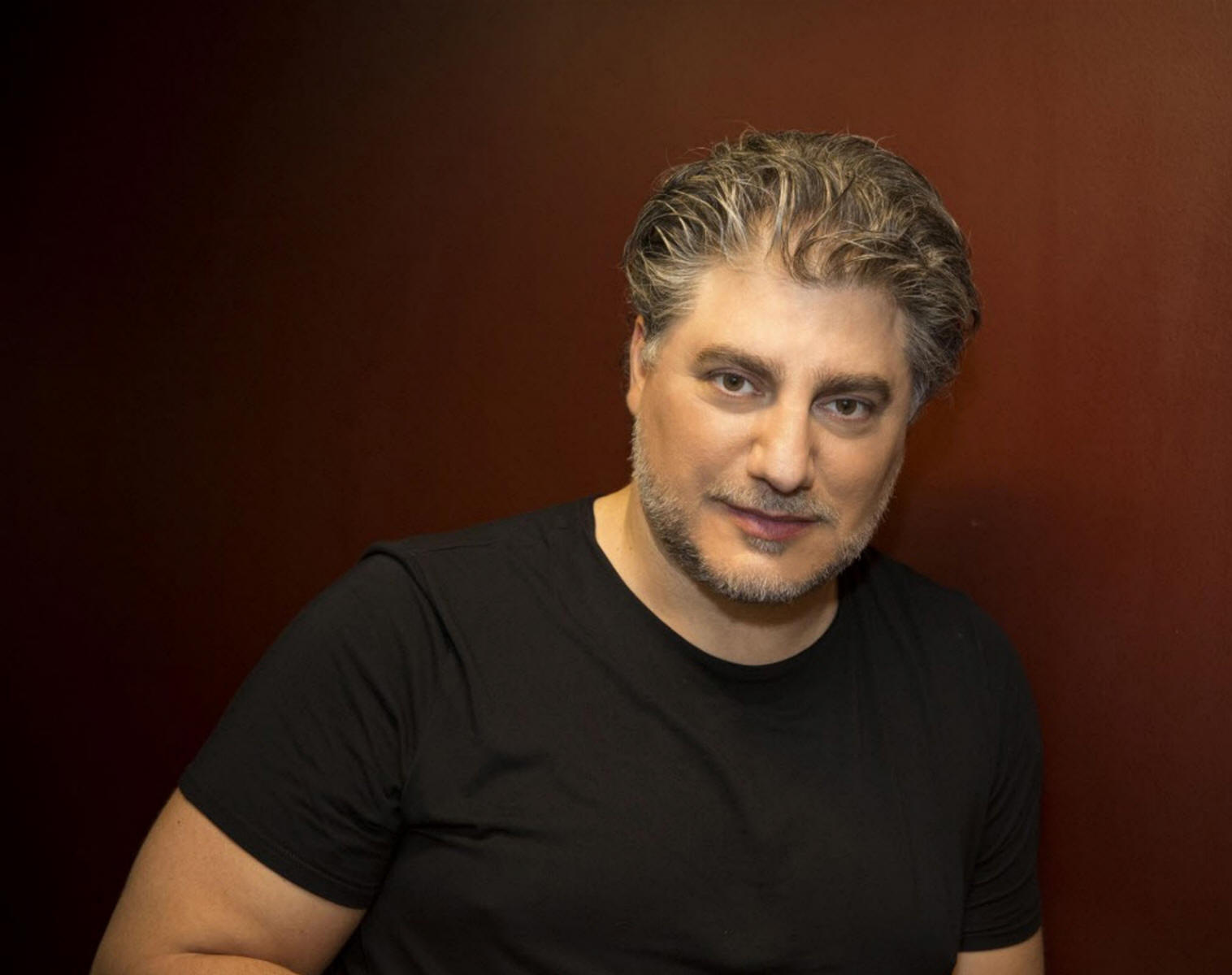
|
'Music is a mystical experience' José Cura's voice is still perfect in his early fifties. He has an unconventional way of connecting with audiences, a versatility and an immense humility in his vocation. He sang Tosca’s Cavaradossi, one of his many successes, at this year's Budapest Spring Festival. Ridikul Magazin Rita Szentgyörgyi 6 June 2014
[Computer-assisted translation / Excerpt]
The world-famous star tenor graduated in conducting and composition from the Buenos Aires Music Academy. He started singing in a self-taught way in the school choir and then joined street musicians with his guitar. "Your technique is bad. If you carry on like this, you'll never be a singer of any value," his conservatory singing teacher told him. The teacher was wrong: José Cura made his debut at Covent Garden in the title role of Stiffelio. The rest is legend... The celebrated Argentine tenor gave us an exclusive interview at the Opera House. RIDIKÜL MAGAZINE: You reacted passionately to the comatose state of the opera genre. Is there really a crisis? JOSÉ CURA: It would be surprising if, in such a chaotic world, which is in crisis not only economically but also morally, art were the exception. The ills of society also reach culture. Mechanization seems to be an unstoppable process and superficiality seems to be everywhere. People who use computer compositional programs think they are composers just by entering four musical notes. RM: How does this relate to the crisis of opera? JC: Today's young singers are not willing to dedicate enough time, energy, and patience to their profession. They get complacent, or they chase after quick successes that can disappear just as quickly. As an artist, I can do one thing: I can set an example, among other things, by achieving after many years of building knowledge. Neither experience nor sacrifice can be spared. Today, the pressure is so great that a singer - and an artist in general – are forced to age physically faster. The other problem is that there are about forty operas in the repertoire of opera houses, mainly Verdi, Donizetti and Puccini. This repetition is killing contemporary music.
RM: Is it also a way of avoiding ageing that you deal with music in a complex way as a conductor, director, set designer? JC: I've been singing for thirty years and although I've had more recognition and media attention as a dramatic tenor, I'm more interested in orchestral and stage work. If it were up to me, I would be content to perform only on special occasions. Singing is more of a private passion for me, to connect with the audience. But as a conductor I can share my experience with young musicians. RM: A defining moment in your [professional] life is the role of Otello. Perhaps the biggest challenge of your career so far is that you were booked as director, title role and set designer last year at the Teatro Colón. How has your vision of the Moor of Venice changed over the years? JC: Otello has never been a victim for me. Through my studies in psychology and my reading, I realized that Iago was actually the other face of his personality. Otello is a traitor to his own faith, to his Muslim brothers. There is nothing heroic about him. RM: Do you "read" an opera differently as a singer and a director? JC: I always read an opera through today's eyes, because a libretto that is a hundred and fifty years old has nothing to say in itself. Take Tosca, for example, in which Tosca [Floria] is only the 'window.' The real theme is the struggle against oppression between Cavaradossi and Scarpia. For me, the essence of opera is the tragedy of a person seeking freedom, fighting for ideals and desires and sometimes failing. I strive to create real, flesh-and-blood characters, who have both negative and positive aspects. I avoid the usual clichés about the tenor being a hero, the soprano a suffering lover, the baritone a cuckold, the bass an old man and the mezzo-soprano a whore. RM: When you lead an orchestra, what do you consider to be the most important aspect of conducting? JC: If we're just playing a piece only for the beauty of the music, we're like employees who go home at night and forget about their work. Instead, we must think about the depths and philosophical content of a piece in a larger context. When I conducted Bach's Mass in B minor, I called the orchestra and choir together beforehand and said, 'You are playing one of the most beautiful works in the history of music, and you must be at peace in your soul to hear it. So please, if you have a conflict with anyone, call them and apologize. Otherwise, the music of Bach will weigh heavily on you." Music is a mystical experience that makes you a different person. RM: It's no secret that you have turned down several artistic directorships in recent years. JC: I would find it strange to hold a position that involves so little artistic freedom and so much administrative work. I would prefer to be music director. I am guest conductor of several orchestras and sometimes teach. RM: How is your relationship with your homeland these days? JC: The most I can offer my country is to move around the world as a cultural and musical ambassador of Argentina. I promote Argentine music and song heritage whenever I can. RM: Are there any roles you miss from your repertoire? JC: My career has never been guided by opera house directors or managers. Who else would be more aware of my vocal talents in relation to role than myself? Veristic opera is my passion. If I had the courage to learn Russian, I would love to sing Hermann in Queen of Spades. RM: Do you mind being identified with Latin masculinity? JC: It's not particularly significant. Passion is important as is artistic authenticity. To have the courage to be yourself, with all your shortcomings as well as your gifts. That's what I strive for in everything I do.
|
|
|
|
Tosca at the
Hungarian State
Opera
Momus
21 March 2014
[Computer-assisted translation //
Excerpts]
Theatres have no
luck with their
tenors and tenors
have no luck with
critics. True, there
has been a
long-standing
tradition of
complaining the
tenor shortage, but
it is still more
than
thought-provoking
that even the
big-name tenor stars
of the Vienna
Staatsoper are
receiving worse and
worse reviews one
after the other.
On the Merker
website in Vienna,
there are often
three critics
writing about the
same performance
which is why you so
often read
contradictory
opinions, but lately
there seems to be a
great deal of
consistency. Rolando
Villazon's remaining
voice is struggling
with Onegin's
not-so-difficult
Lenski, and one is
happy when he
reaches the end of
the performance
without any
problems, three of
them write about
three different
performances.
Massimo Giordano
essentially fails in
the
Tosca series, earning the
rating of one of the
weakest Cavaradossi
ever, which of
course does not stop
the theatre's
management from
casting him in the
lead role in the new
Lecouvreur
production. As for
Charles Castronovo,
the question is
asked: how is it
possible that such a
voice can be on the
Staatsoper stage?
I thought I would
have to discuss the
twilight of the
tenor in the context
of José Cura's
appearance at the
Staatsoper, but no:
Cura surprised me,
and very pleasantly
so. As many know, I
am not a Cura fan.
Since 1998, I have
had the opportunity
to see and hear him
in numerous concerts
and opera
performances in
various roles. I
have heard his
recordings and DVDs
and, with a few
exceptions (Aida
in Tokyo,
La forza del destino in Milan, Otello in Buenos Aires), I
have had to express
my serious
reservations about
him. I am now happy
to declare I have
never found him so
convincing.
Cura was reborn, on
this night anyway.
Whether this form
and singing will be
permanent or a
one-off phenomenon,
only time will tell.
The fact is that
the Cavaradossi he
sang lacked all the
negatives that had
been so
characteristic of
him. He has
abandoned a rather
unpredictable
singing style that
was more reminiscent
of a kind of marking
than of singing
opera in full voice,
so often accompanied
by the terrible
attitude that
"you'll see what an
artist I am, that I
can perform the role
without singing!"
He sang beautifully
throughout, with a
clear line, only
very rarely did he
sing with more
restrainy than
necessary, with less
voice, "sparingly",
and at the climaxes
of the role he
really used his
voice intensely,
almost lavishly. The
voice is now in a
much better
position, higher and
more forward than
before, much less
throaty, less dark.
But he still retains
that unique Cura
timbre - which, in
my humble opinion,
has always been the
secret of his
success - and it
makes his high notes
much more assured
and bright. His
earlier strong
portamentos are
barely noticeable,
and though he still
uses the rhythmic
masking technique he
has always used for
high notes, it is
not as distracting
so that the key
notes of the role
are heard with an
intensity rarely
heard. Among these,
the B of the
magnificently played
and sung Vittoria
scene should be
singled out, but the
dreaded high B flat
of the first act was
absolutely spot on.
For me, the
highlight of the
performance was the
almost trite letter
song, sung with
infinite simplicity,
without getting up
from the table,
almost motionless,
but with an
incredible inner
glow and wonderful
phrasing.
Unforgettable.
Cura's presence in
the first act was a
great impulse for
all the performers.
You could feel it in
the air that
everyone knew they
were contributing to
something important.
Unfortunately, this
positive tension
died down in the
second act, probably
due to the
conductor, Balázs
Kocsár, who could
not keep it alive,
or even intensify
it, in the second
act. Kocsár is not
usually the
steady-handed,
inspired conductor
who can really heat
up a performance,
but it should also
be noted that the
theatre's otherwise
excellent orchestra
does not usually
play with such
imprecision under
other hands. The
orchestral low point
of the performance
was the introductory
music to letter
scene; it is a
wonder that Cura
could sound as he
did after such a
prelude.
Another likely
reason for the drop
in tension may have
been the struggle of
Cura's partners with
their roles from the
second act onwards
and the resulting
vocal fatigue.
Csilla Boross has
gone from being a
light lyric
coloratura soprano
to an
internationally
renowned dramatic
coloratura with
persistent study,
but hers is not
essentially a Tosca
voice because of her
weakness in the
middle register and
lack of a low
register; she had
difficulty
overcoming Tosca's
mid-range, broadly
flowing melodic
lines.
[…]
I had similar
impressions of
Mihály Kálmándi's
Scarpia, who sang
the role for the
first time in
Hungary. His
character did not
feel ready, as if he
had not yet decided
whether he wanted to
play the elegant
gentleman or the
great villain; as a
result his
performance was a
little off-color,
both in acting and
in voice. He managed
the Te Deum
surprisingly well,
his difficulty
coming more in the
second act. All in
all, Kálmándi is a
good Scarpia but
will be considerably
better with more
experience in the
role. All in all, this Friday night Tosca was in many ways rare experience. The Sunday repeat, which I did not attend, was reportedly even better… |
|
Cura's presence in the first act was a great impulse for all the performers. You could feel it in the air that everyone knew they were contributing to something important. Unfortunately, this positive tension died down in the second act, probably due to the conductor, Balázs Kocsár, who could not keep it alive, or even intensify it, in the second act. Kocsár is not usually the steady-handed, inspired conductor who can really heat up a performance, but it should also be noted that the theatre's otherwise excellent orchestra does not usually play with such imprecision under other hands. The orchestral low point of the performance was the introductory music to it is a wonder that Cura could sound as he did after such a prelude. |
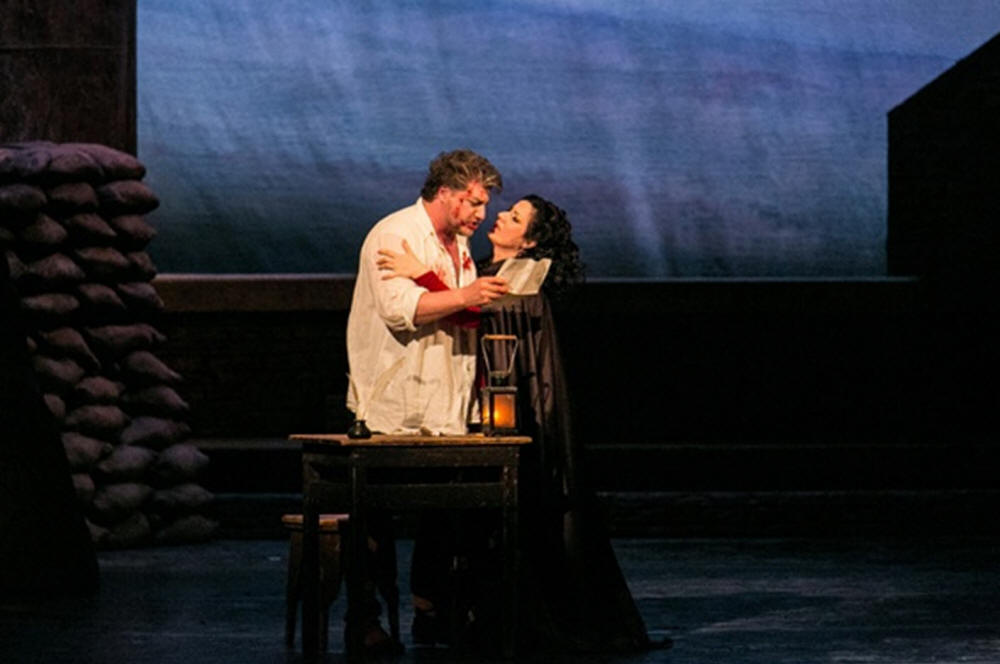
|
Compulsory completed Tosca with José Cura at the Opera House
Opera Portal Csák Balázs 23 March 2014
[Computer-assisted translation / Excerpt]
A legendary tenor singer, Jose Cura, sang the role of Cavaradossi in Tosca at the Opera House on 21 and 23 March. Cura has been one of the biggest stars on the international opera stage for two decades now, and his appearance was understandably highly anticipated (he has sung here before, including in Szeged in Otello). Cura's performance was a disappointment for me. […] His rather weak performance was most evident in Act I. The voice was uneven, sometimes sounding downright unpleasant in color. During the Recondita armonia the tenor rushed through the aria as if he wanted to get it over with, the orchestra barely able to follow him (he only improved on this with the final aria, which I think was the main reward for the audience's applause). Of course, it is possible for a singer to have a bad day, but it is less forgivable that Cura was clearly not trying very hard to give his best. At times he seemed downright apathetic, moody, with hardly any facial expressions, and at times I thought he had dozed off. What I did like, and for me it was a new color in the line of Cavaradossi interpretations, was the way he approached Tosca in the love duet. Instead of overwhelming romance, he urged her on with affection and understanding, but impatience, making it clear that, although he was happy for her, it was time for Tosca to go - he had to settle the affairs of Angelotti, the political fugitive. (“Ancora?” "Still?" He looked up at the sky with an ironic smile as Tosca asked Cavaradossi for one last confession of love before leaving. ) Vocally, Cura was not much better in the second act but his acting seemed more sincere. The torture scene was authentic, Cavaradossi came on stage spitting blood, visibly genuinely tormented, and although the "Vittoria!" didn't really soar, I wasn't left feeling anything was missing. It was in the third act that the tenor found himself. He sang E lucevan le stelle with softness and beautiful legato and triumphed with the aria. In the closing duet, Cura was genuinely passionate. The scene of Tosca and him embracing for a long time as the soldiers were all coming into the firing line was touching. Cura gave a good sense of how Cavaradossi was conflicted at the news of freedom: he suspects that in Scarpia's castle it cannot be so easy... Cavaradossi's solos are a rewarding task, full of beautiful melodies but the role gives less opportunity for acting than the character of Scarpia or Tosca. [To compensate] a tenor should be present enough that he can rise above the other two in this opera. Cura was far from that on this night. Still, this was one of the better performances of Tosca in the house….
|
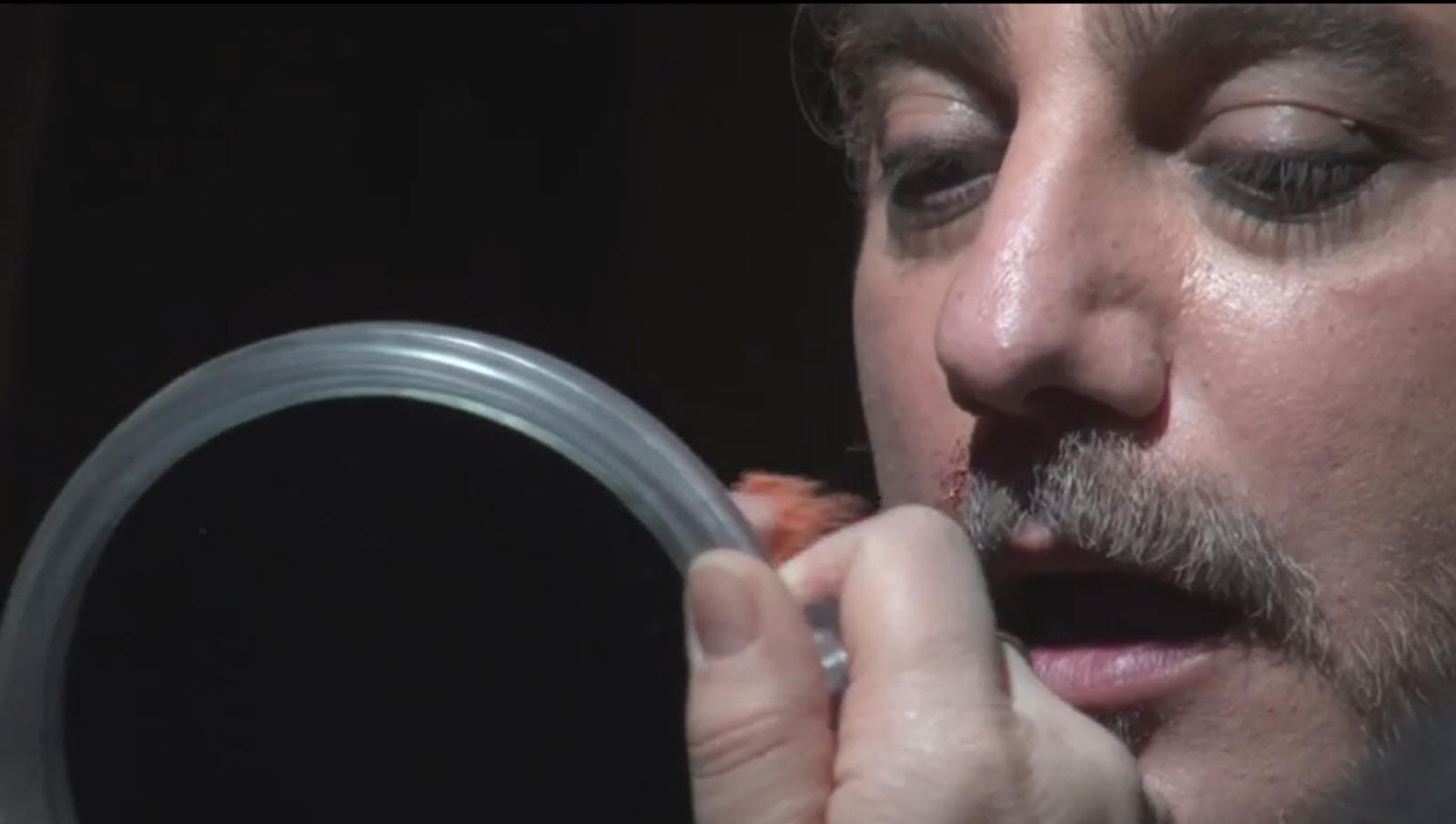
|
The Tosca Cure
Opera Vilag Károly Fülöp 24 March 2014
[Computer-assisted translation / Excerpt] We need performances like this! As many as possible, as soon as possible, to smooth out the wrinkles of the tortured soul, to lift it a little above the ground while ruthlessly confronting it with how cruel and evil the world is. Friday's Tosca was a spectacular performance, with three excellent protagonists, a raging orchestra with sweeping momentum, and thanks to the baritone and the excellent performing choir, an ecstatic Te Deum. It was a celebration in more ways than one: the production was enhanced by its status as a spring festival event; guest José Cura, one of the world stars of our time, sang the role of the painter Cavaradossi; and it marked the first appearance of Csilla Boross, another world traveler. An outstanding evening - but let me be clear: I am not here to write a paean for Cura. There is no need for it, and on the other hand, it would be unfair if I highlighted the values of the present performance against the Tosca I had seen before, since we can always produce this opera with confidence from the familiar home team. Let's say it better: this time the production has been enriched with new colors, and the history of the interpretation of the work in this country has perhaps been enriched with a new legendary evening, one which we can talk about later and wax nostalgic about. […] José Cura seemed a little unsure of himself on stage at the beginning but later, as the stage play progressed, his confidence helped him through. Cura coughed several times, so it is possible that he arrived in Budapest not entirely healthy. But it was no matter that I heard his voice a little scratchy at the start of the performance, a little sparing in the dialogue of the exposition; no matter, either, that his tone is baritone tenor or tenor baritone, if he sings so beautifully. His two arias were beautifully sung, the letter scene made unique with Cura's sorrowful, weeping timbre; the lack of applause at the end of the aria was the result of catharsis. I have never heard Vittoria so performed so passionately live before; it was a tremendous scene. But the important thing is a big-name, world-star singer was singing in 2014 at the Hungarian State Opera House, in a main stage role for the first time for a Budapest audience, in front of a packed auditorium, at the height of his career and success. The success continued here, and during the applause at the end of the evening he was even available for a bit of fun as a Latin "macho," when he offered Csilla Boross a bouquet of flowers while on his knees. Yes, it is not the first time that we have seen a world star, a serious artist and a showman in one person. Such is José Cura. Friday's Tosca was an captivating, magical night. Among its many merits, of course, was that it José Cura's evening: Cura came, saw and conquered.
|
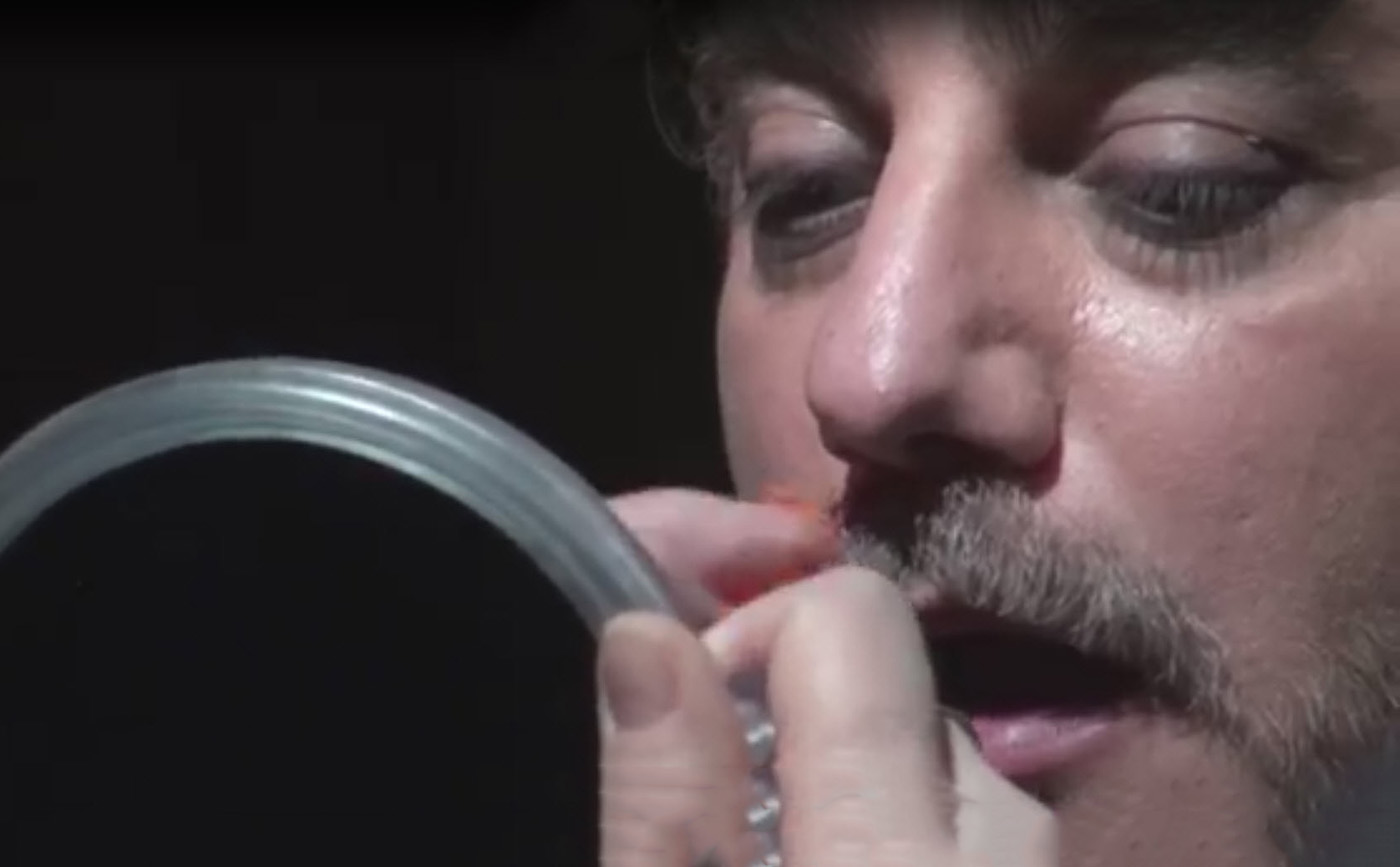
|
Italian Opera with Argentine Flavour in Hungary
Opera-Világ Dániel Móna 26 March 2014. [Computer-assisted translation / excerpt] The star tenor of our century delighted the audience of the Hungarian State Opera as Cavaradossi. While José Cura's name alone attracted a full house, the success of the evening had rarely been seen. I am highly sensitive to the worship of celebrities as idols and it is an unusual pleasure for me when I can find fault in any of the singers' performances. I would enjoy saying that the ovation was really only for Cura's name but I have to admit it was the tenor’s voice that was celebrated by the audience. The Argentine singer took to the stage with a simple performance in the noblest sense. Instead of the heroic tenor figure who overplayed his role, with exaggerated soft and offensively heavy voice, we saw and heard a naturally passionate and effortlessly commanding vocal artist. Cura trusted in Puccini and in his own talent, so he did not try to inflate the role with pseudo-artistic mannerism; he simply sang the music and let it flow... His voice was free from any unnecessary vibrato or harsh, sharp high notes. Although I think it is a bit unnatural to hold the frenetic, standing ovation for one minute after the aria E lucevan le stelle, I cannot deny the exceptional beauty and expressiveness of his farewell to his sweetheart. […] But more importantly, Cura was a good influence on the others in the play. His unconventional style of performing may have inspired his fellow performers, who adopted some of the tenor's naturalness both in voice and stage presence. […] Mihály Kálmándi’s Scarpia at the beginning of the piece was irritatingly prim, but later he became impressively prim ... As if he also would have taken from Cura’s magic power, he became more and more disgusting and creepy during the ever-increasing scenes of actions. His unwavering and rock-solid voice authenticated his unquestionable power. The Orchestra of the Hungarian State Opera led by Balázs Kocsár gave an uneven performance. The woodwind section produced some inaccuracies and was not the most convincing in terms of the expression on that evening, but ensemble’s fortissimo sounds were impressive. The music just soared, and perhaps the musicians "captured" this soaring from Cura. I wonder whether Cura will bring a similarly motivating role to us in the future; I can only hope. His presence definitely had a good effect for this Tosca performance.
|
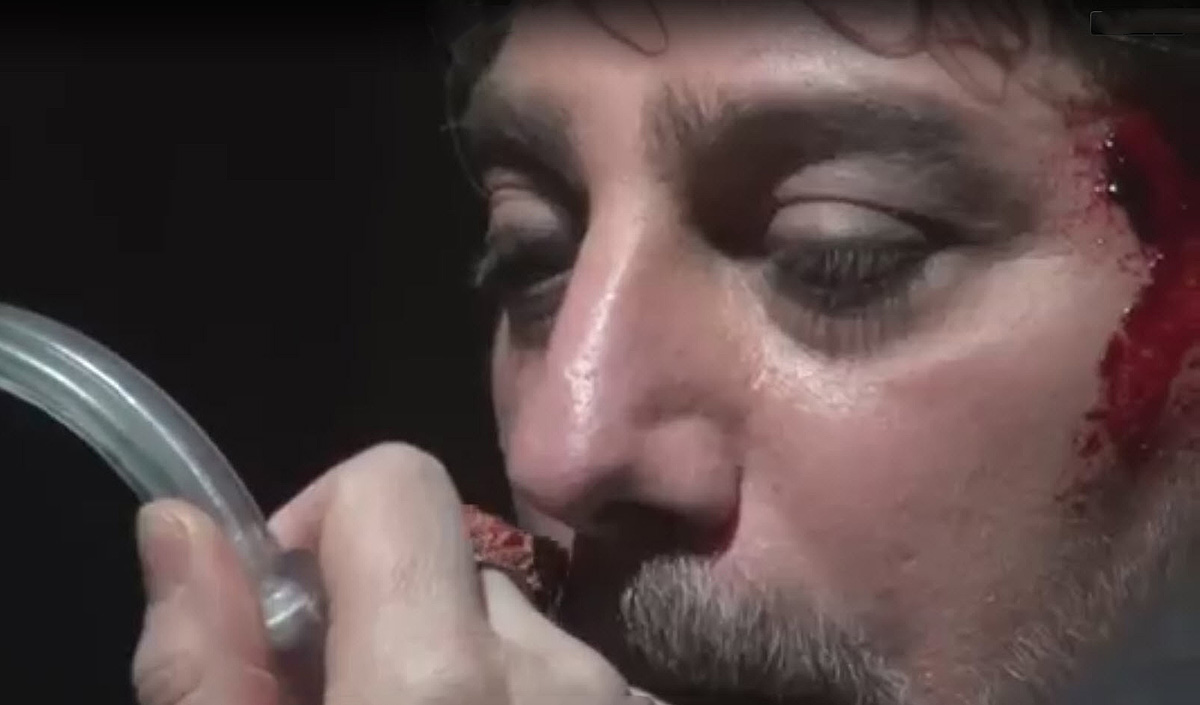
|
Tosca in Budapest
ResMusica Patrick Georges Montaigu 31 March 2014
[Computer-assisted translation // Excerpts]
The Hungarian State Opera programmed Tosca as part of the Budapest Spring Festival, repeating a production that has already been performed by several casts. If the cast was strongly Hungarian, the presence of the Argentinean tenor José Cura gave the international color expected for this festival. Built on the model of the Vienna Opera but smaller by the express order of Emperor Franz Joseph, the Budapest Opera House takes advantage of its reasonable size to offer the public a very appreciable acoustic and visual proximity. Thus, and contrary to some other opera houses, there is no need here to push the sound volume to be heard and the singers have all the latitude to nuance their expression without risk of not being heard by the audience. However, it seemed this was not the musical card that was going to be played this evening but more a virile and muscular vocal engagement pushed by an equally powerful orchestral support. It was therefore necessary to have a physically fit cast to come out on top of these generous decibels and it must be admitted that both Tosca and Cavaradossi were masterfully served from this point of view by Csilla Boross and José Cura, with an indestructible courage this evening. The counterpart of this heroic conception was a lack of nuance and subtlety though taken as a whole it was a first class performance. Vocally, the cast was strong and clearly dominated by the two lovers, whose musical duets were undoubtedly the highlights of the evening. […] José Cura put more commitment into his voice than his acting; that vocal performance fortunately compensated for his going through the drama that would cost him his life with nonchalance…
|
|
|
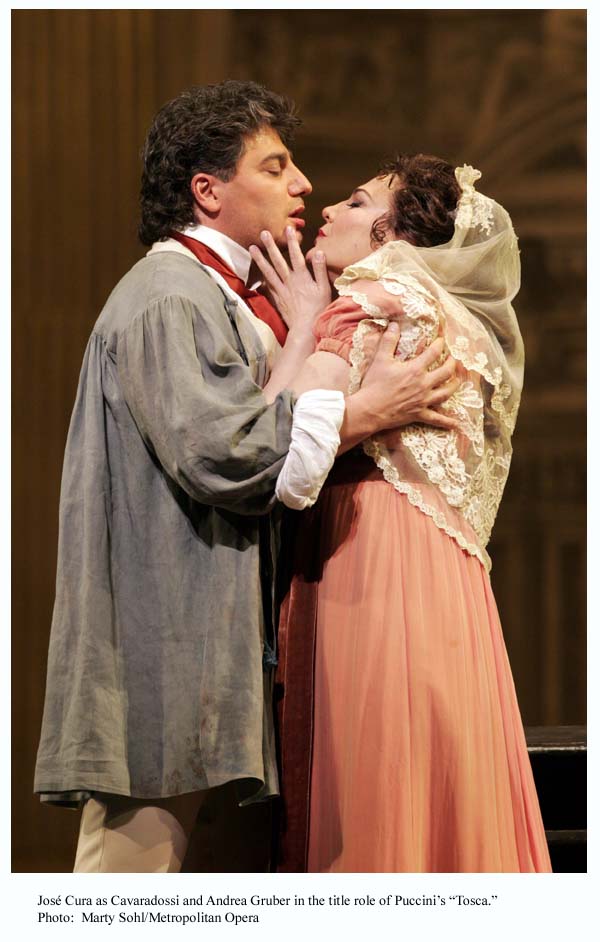
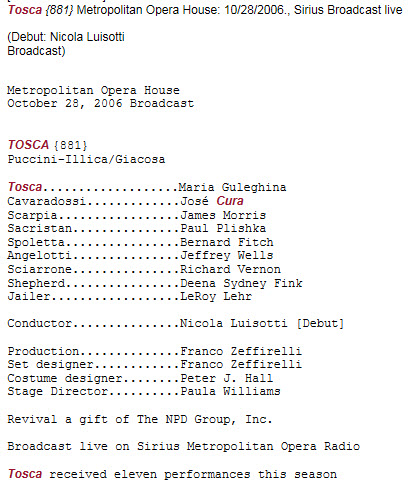
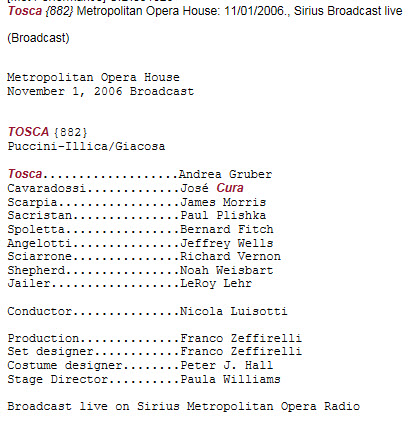
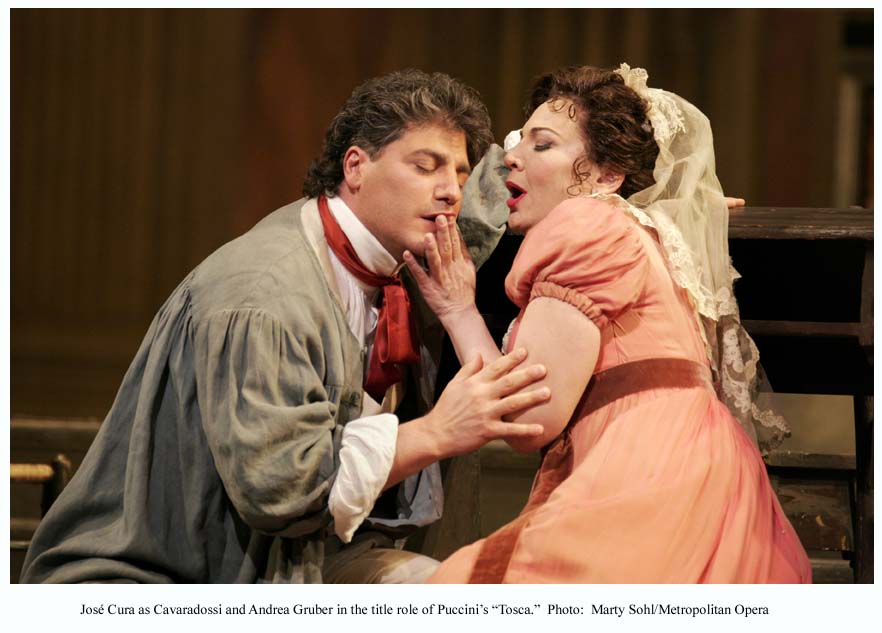
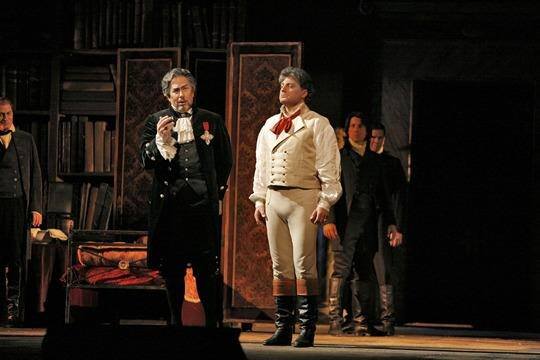
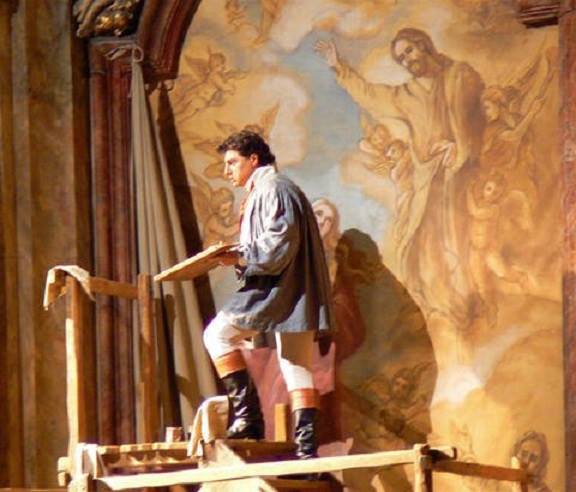
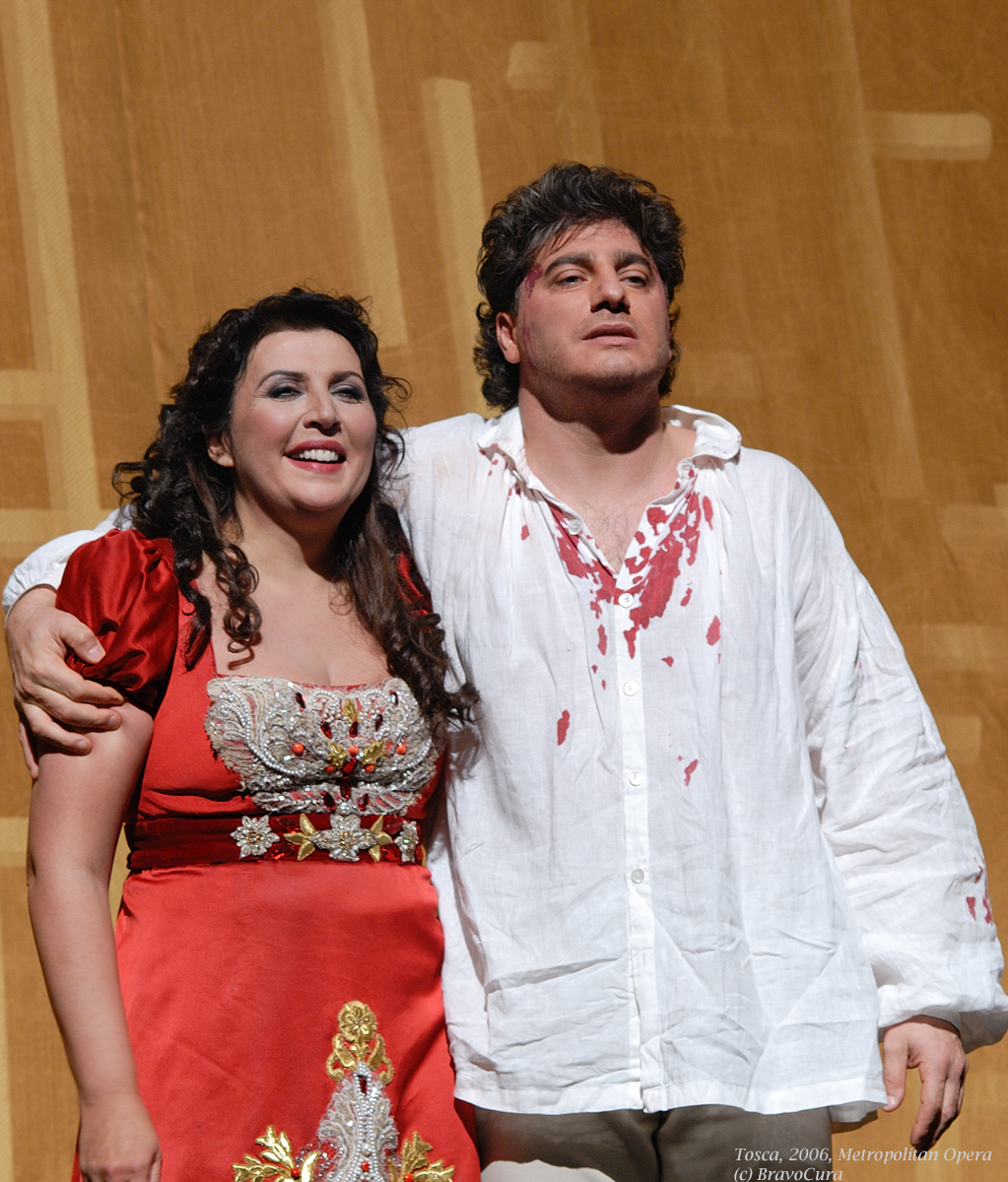
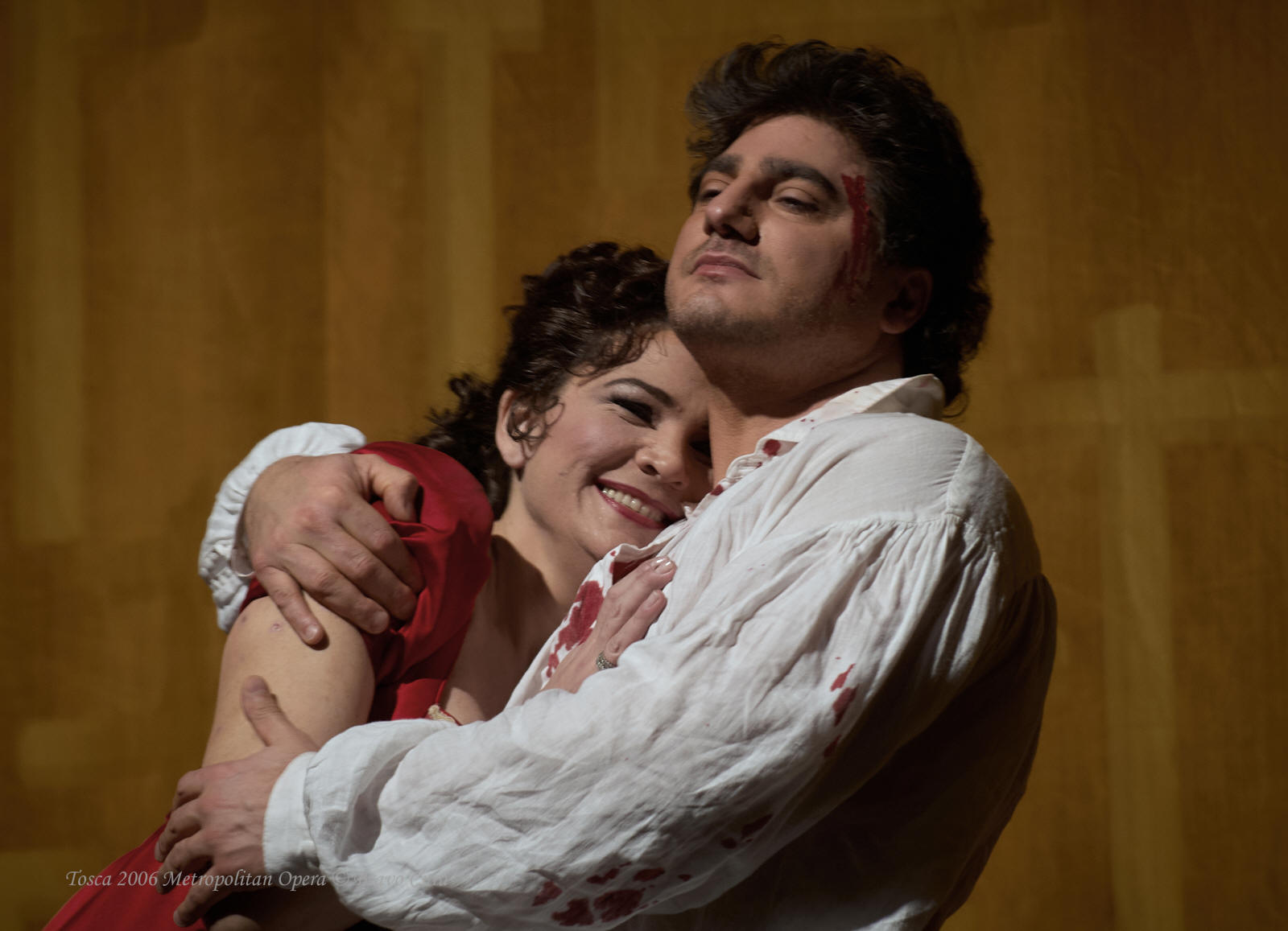
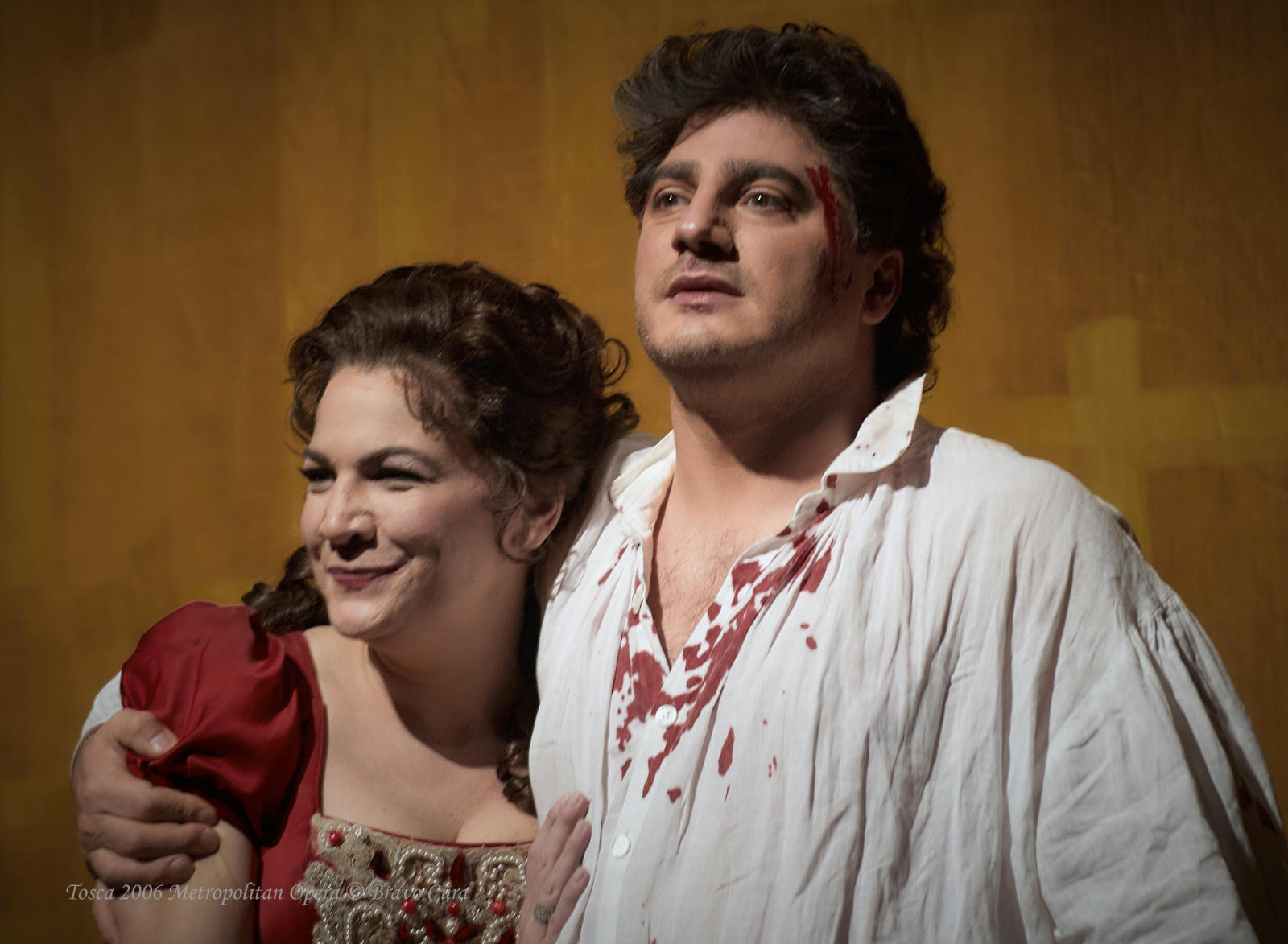
.jpg)
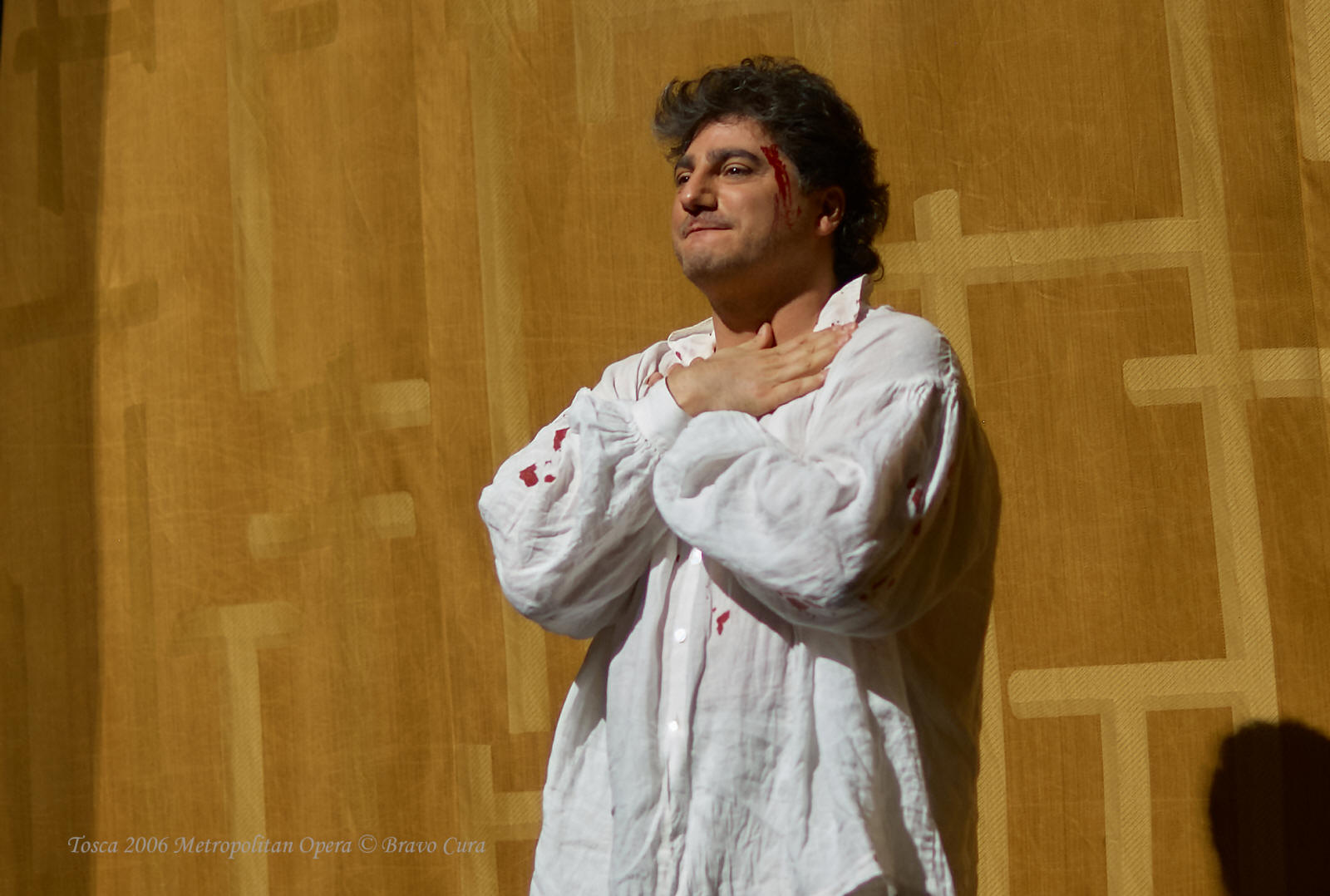
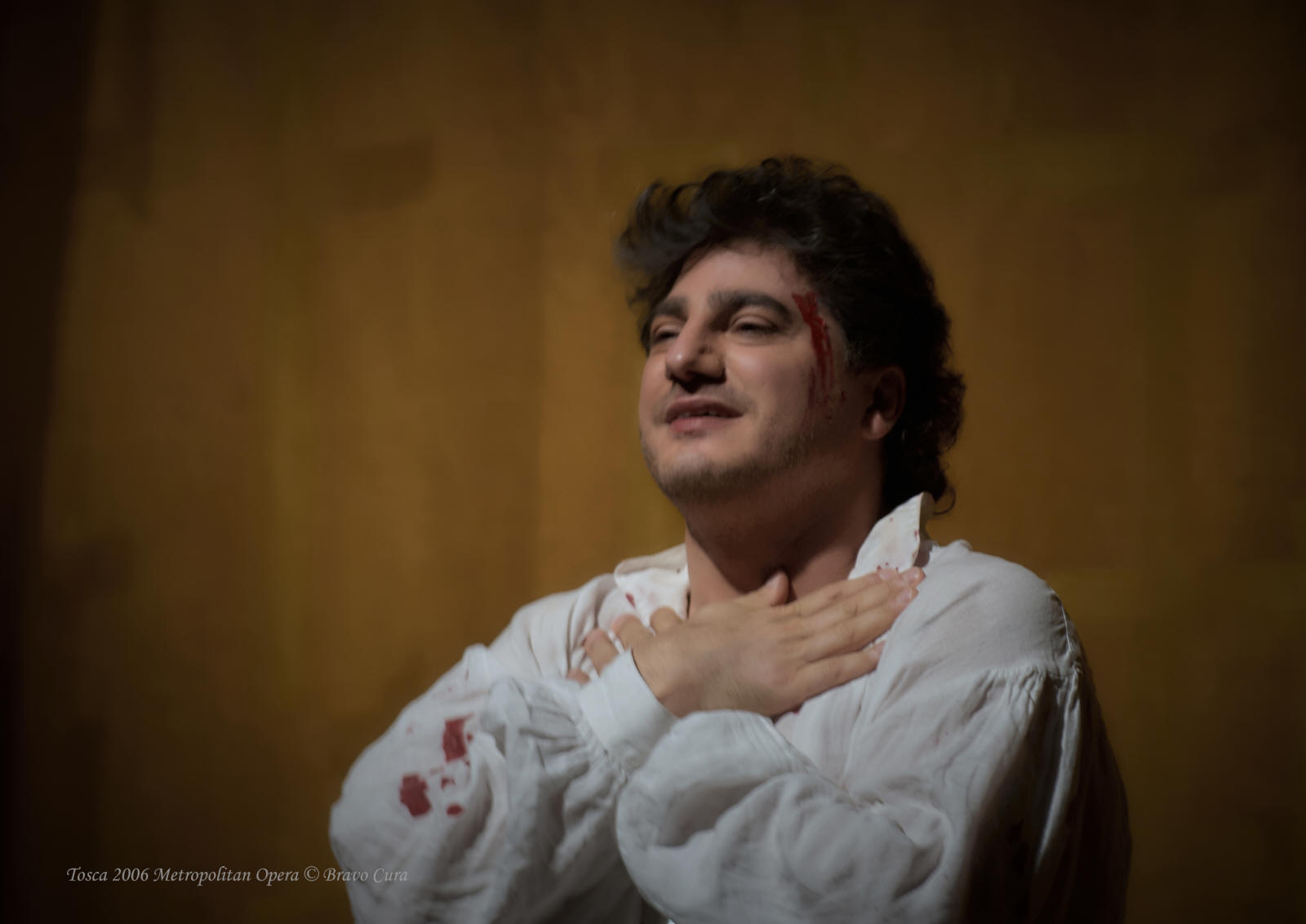
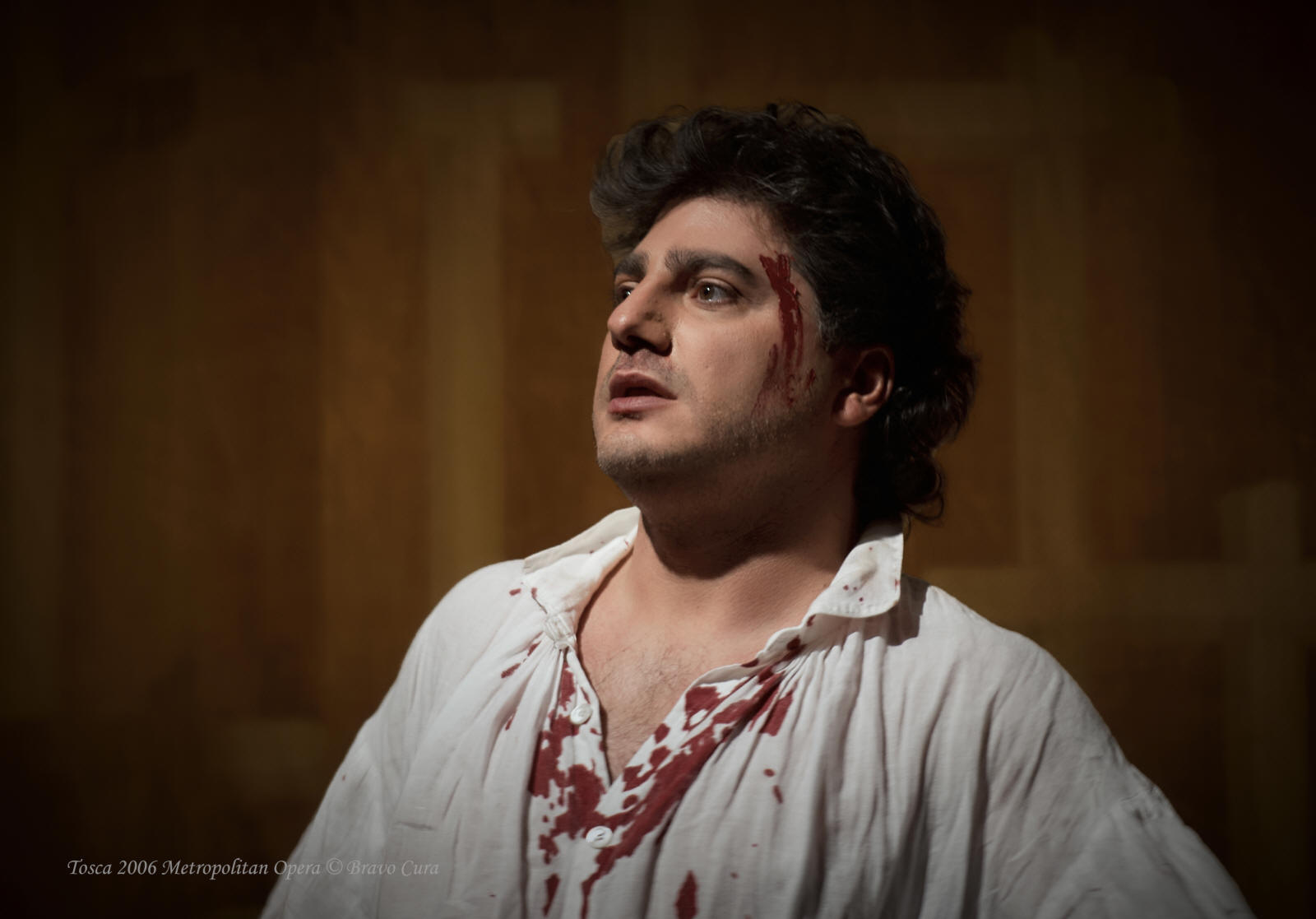
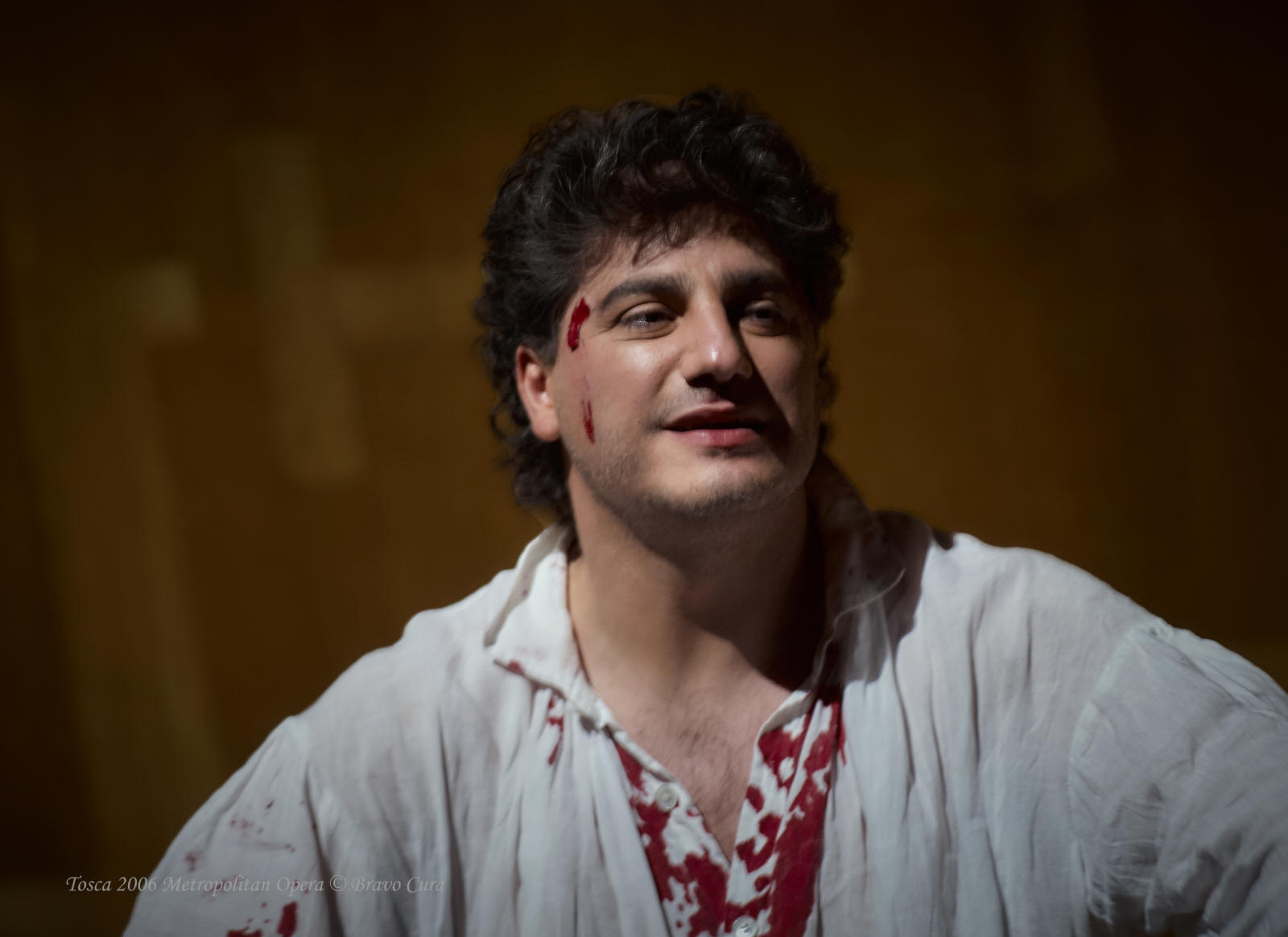
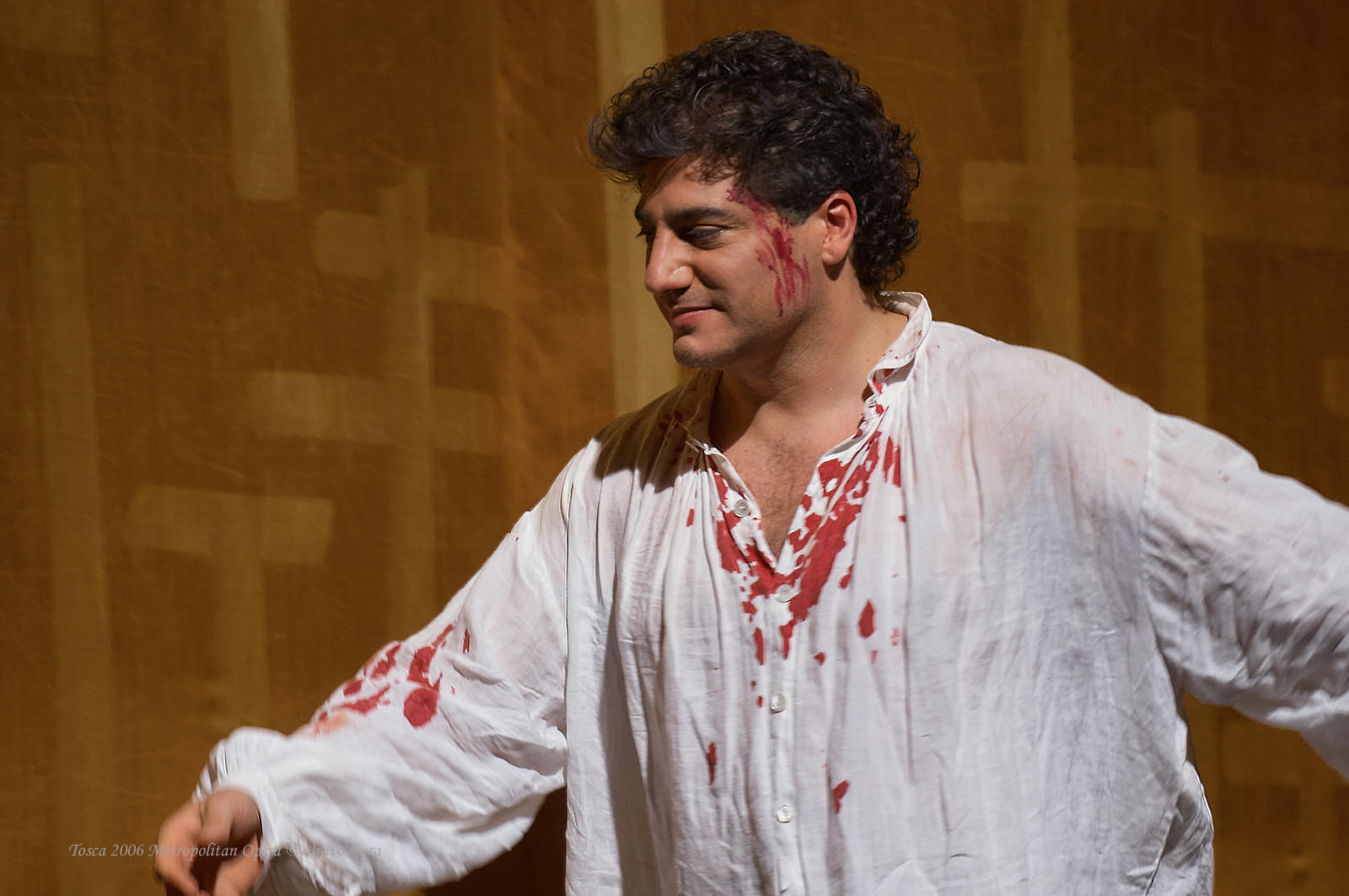
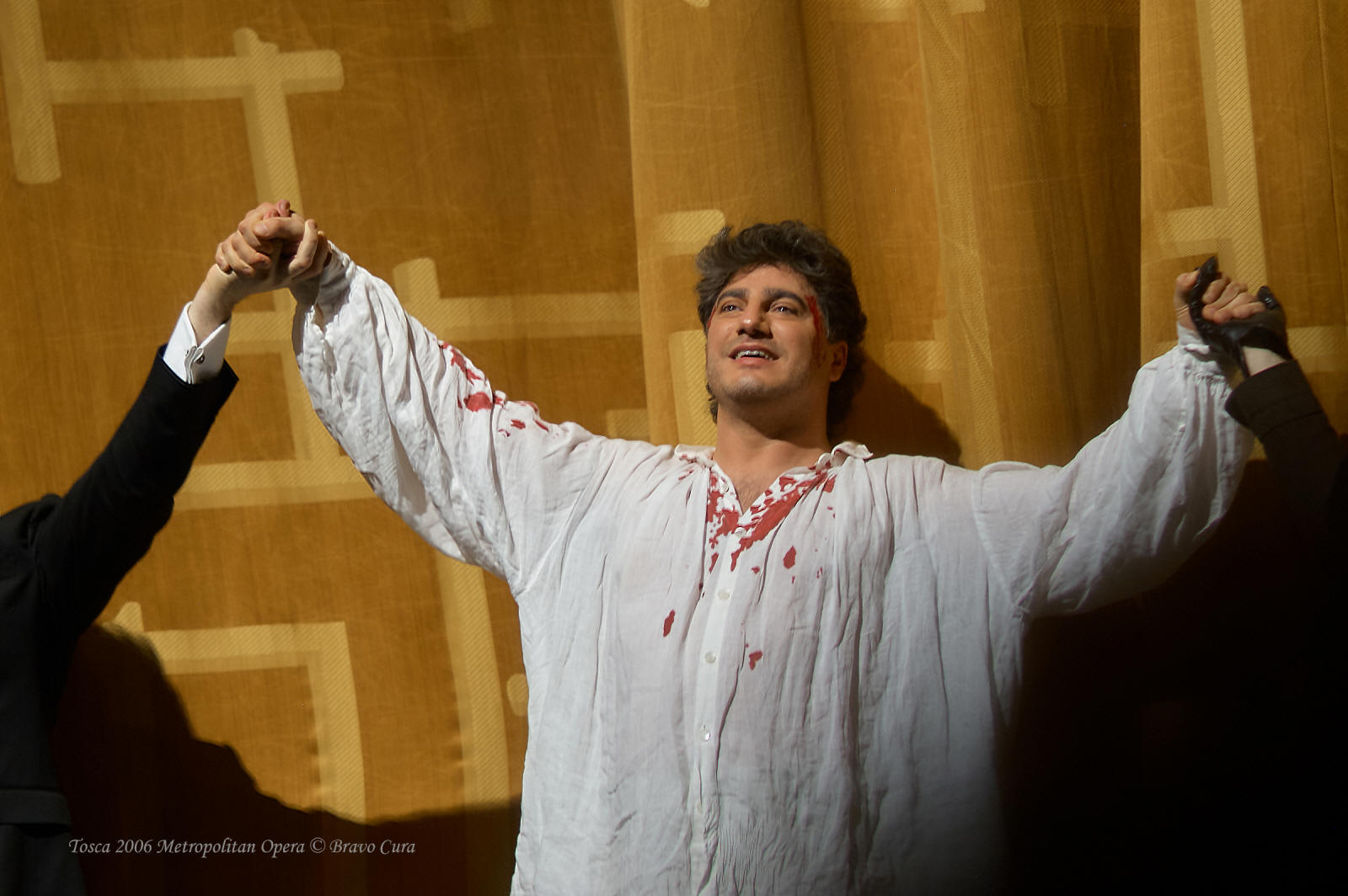
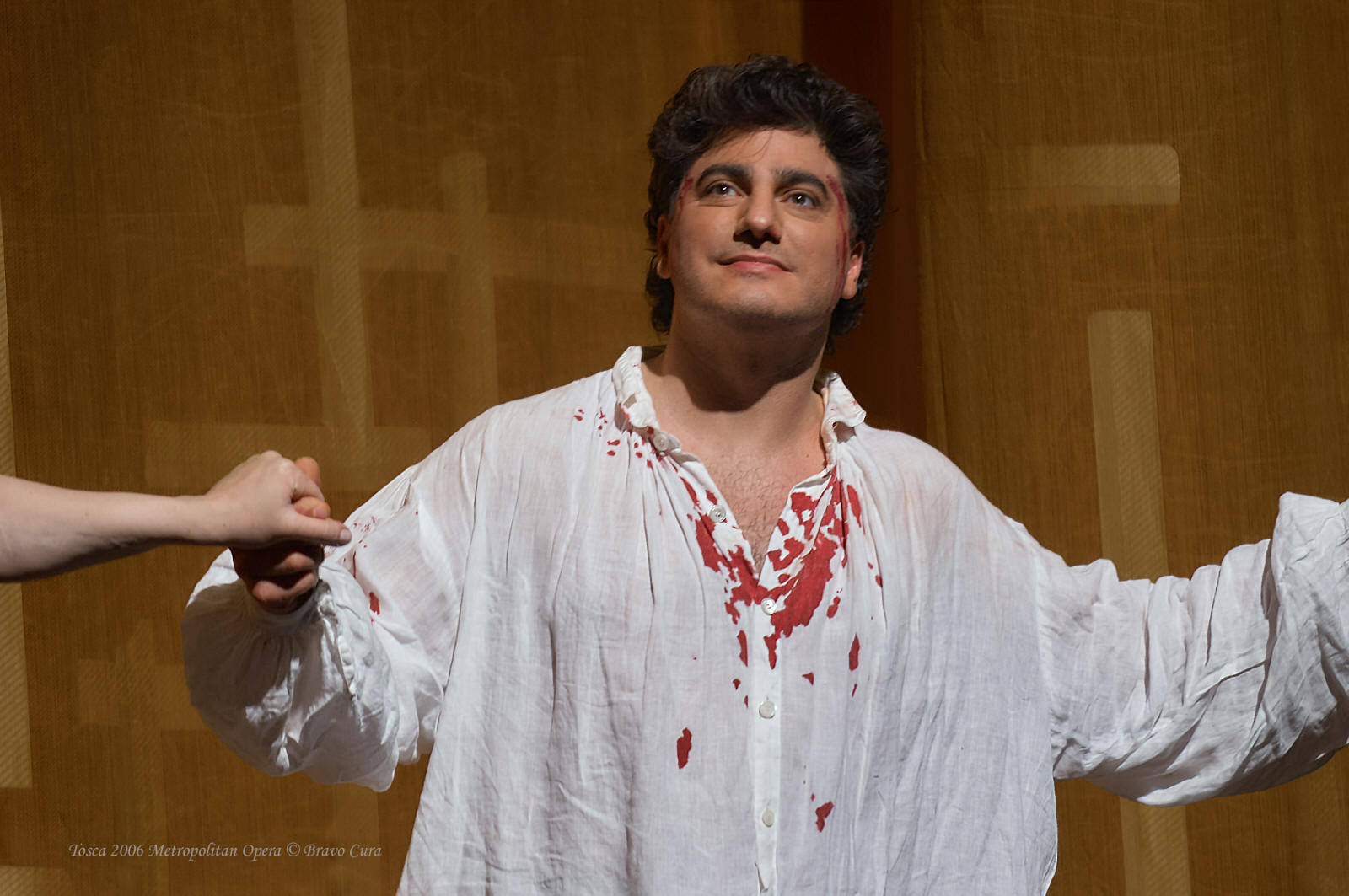
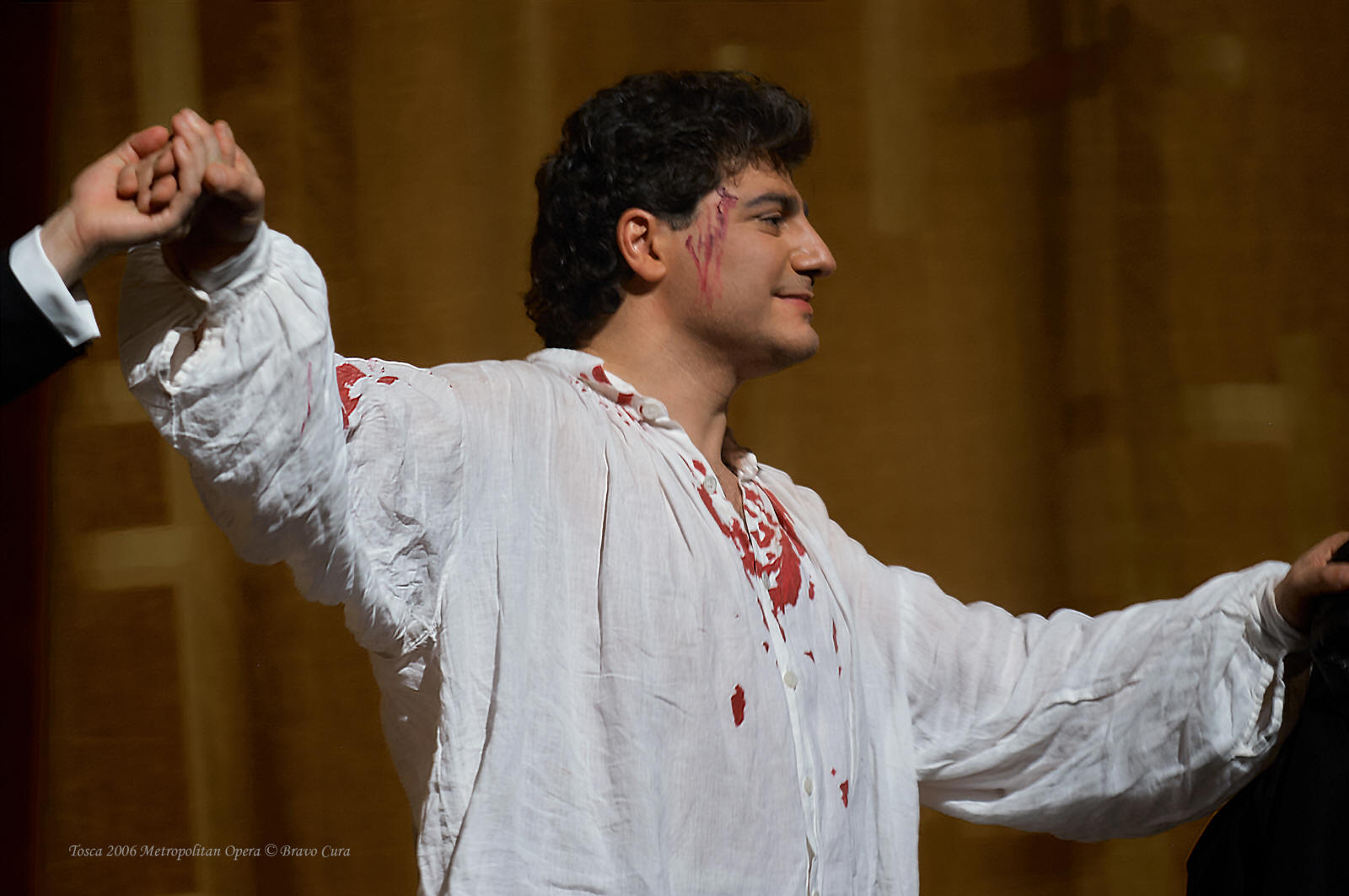
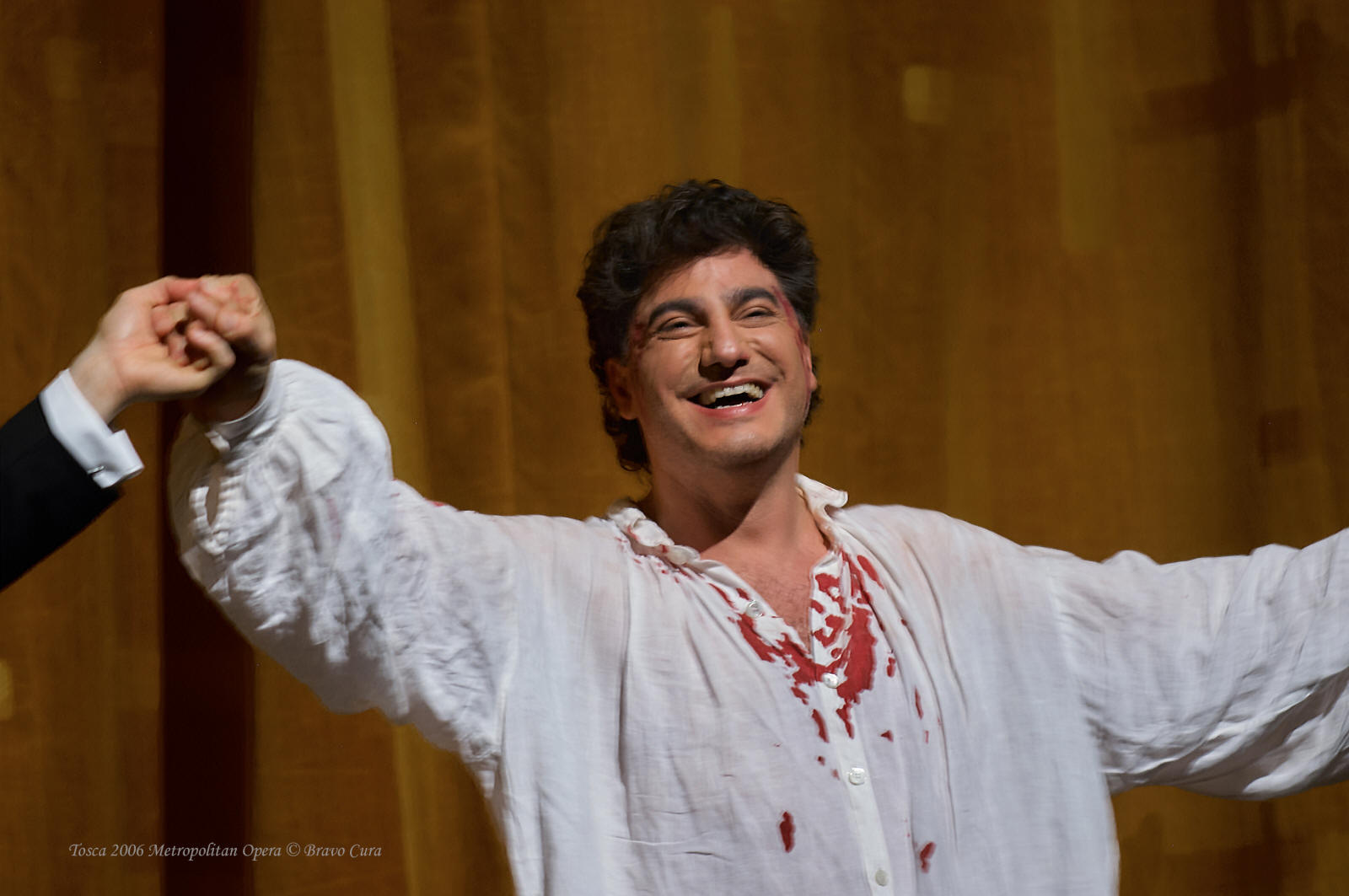
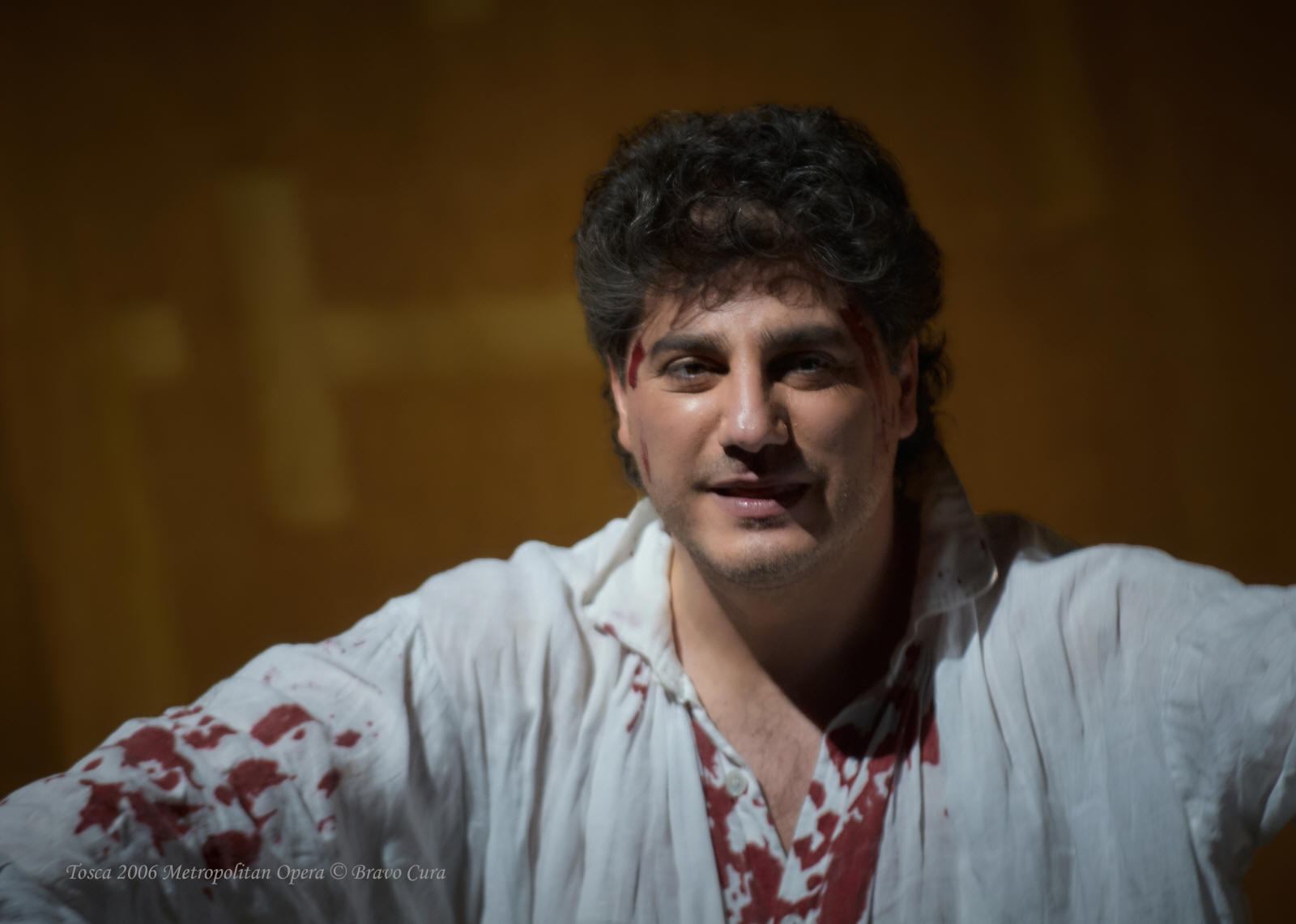
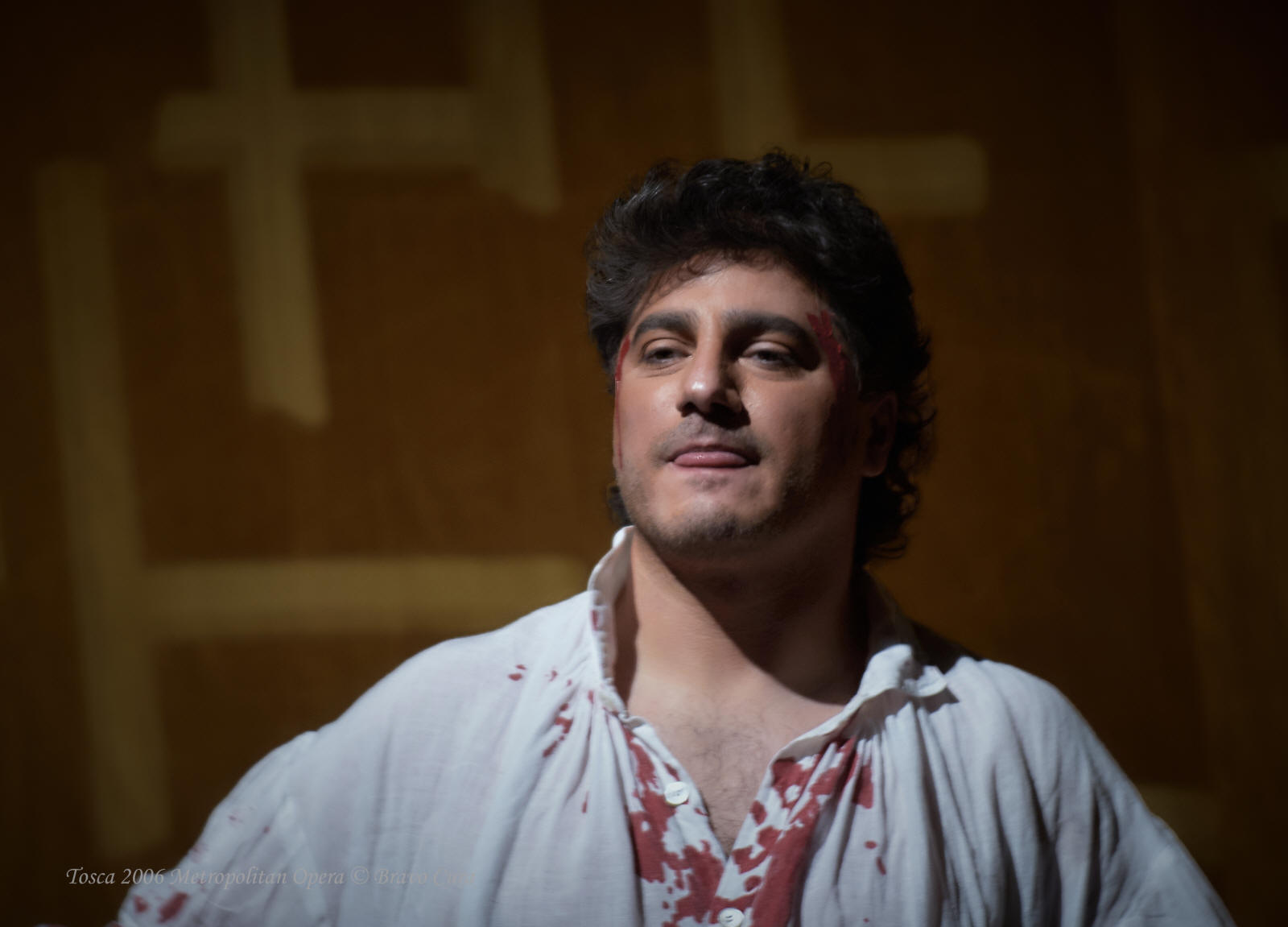

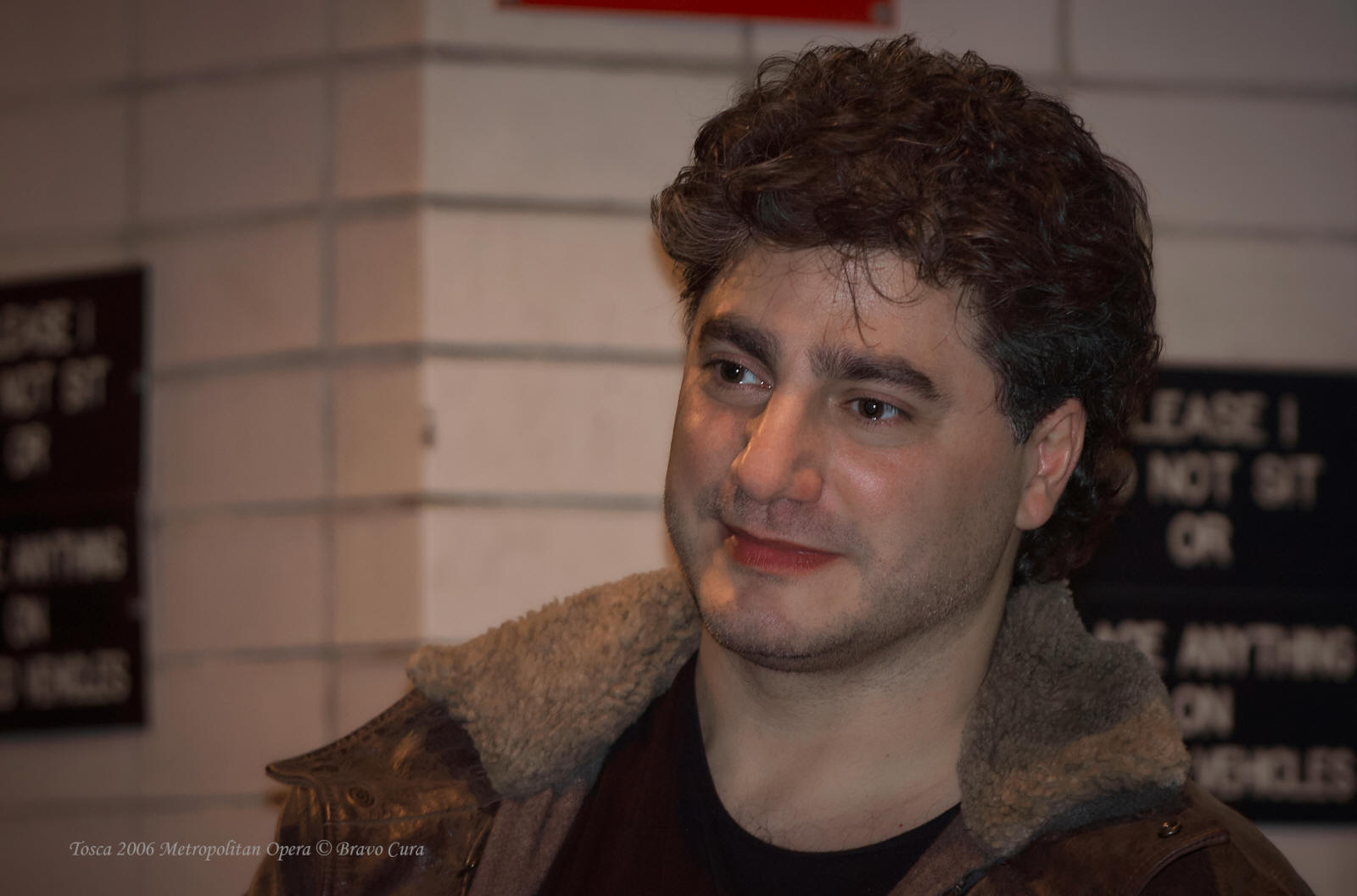
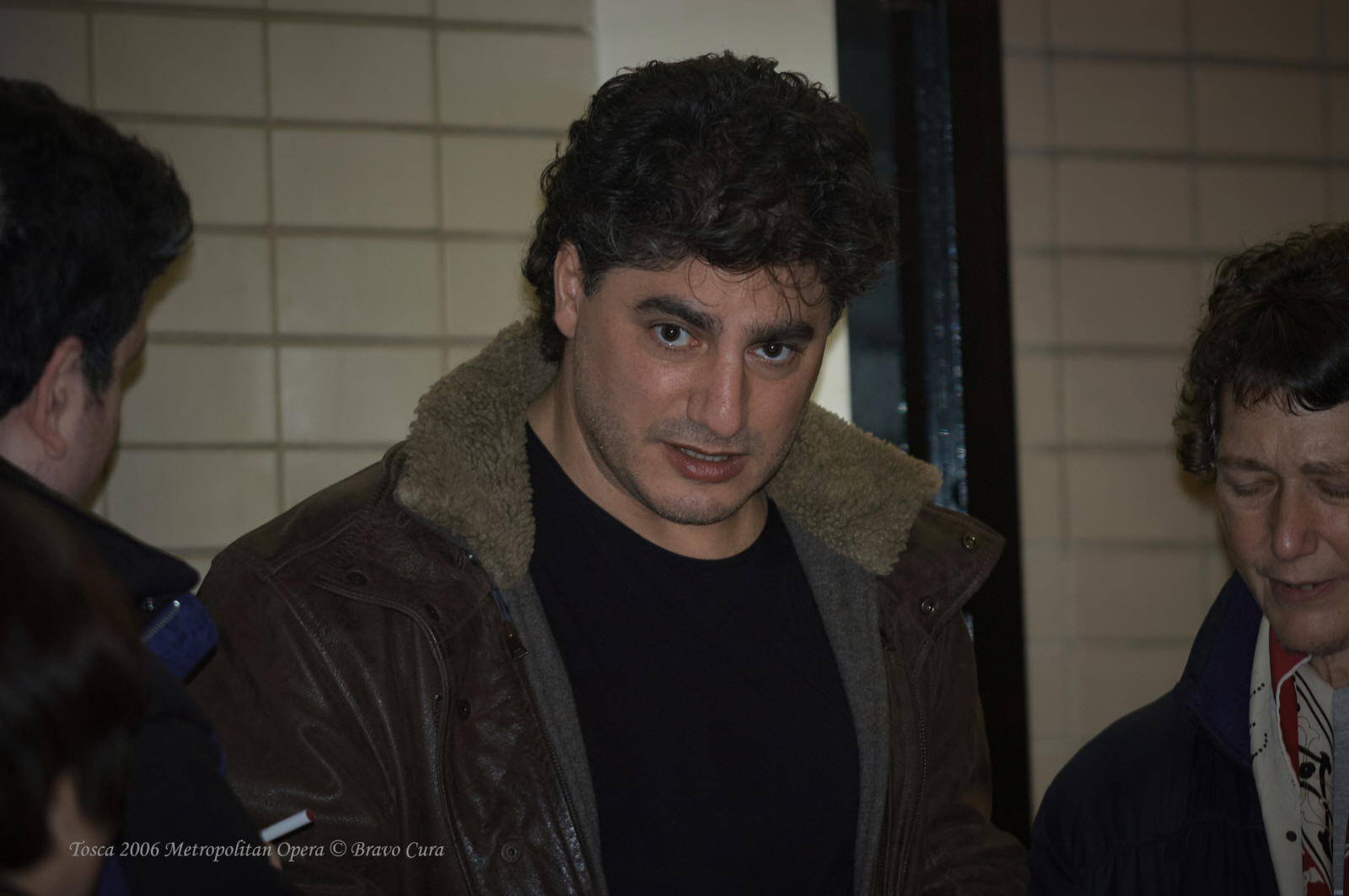
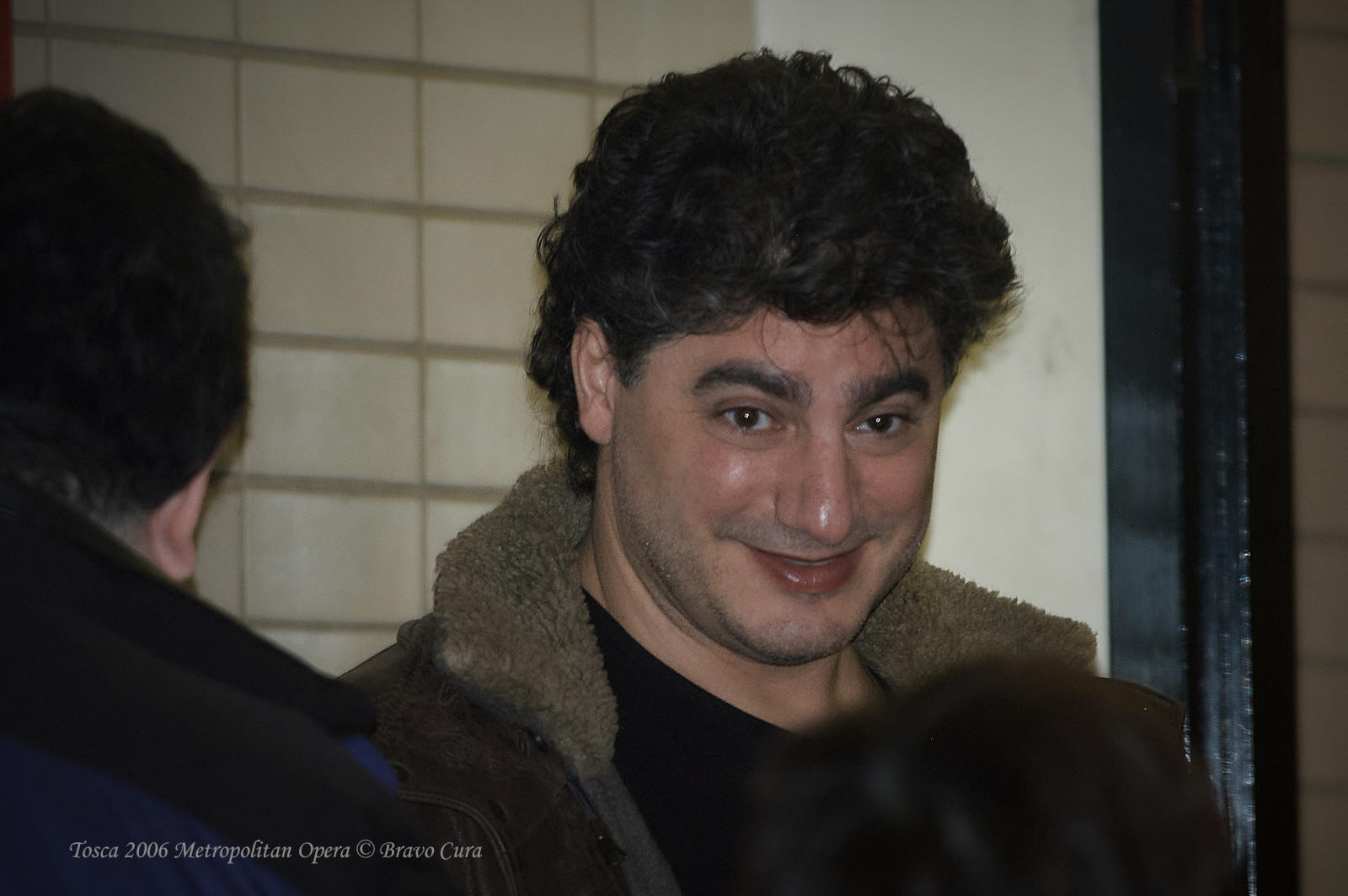
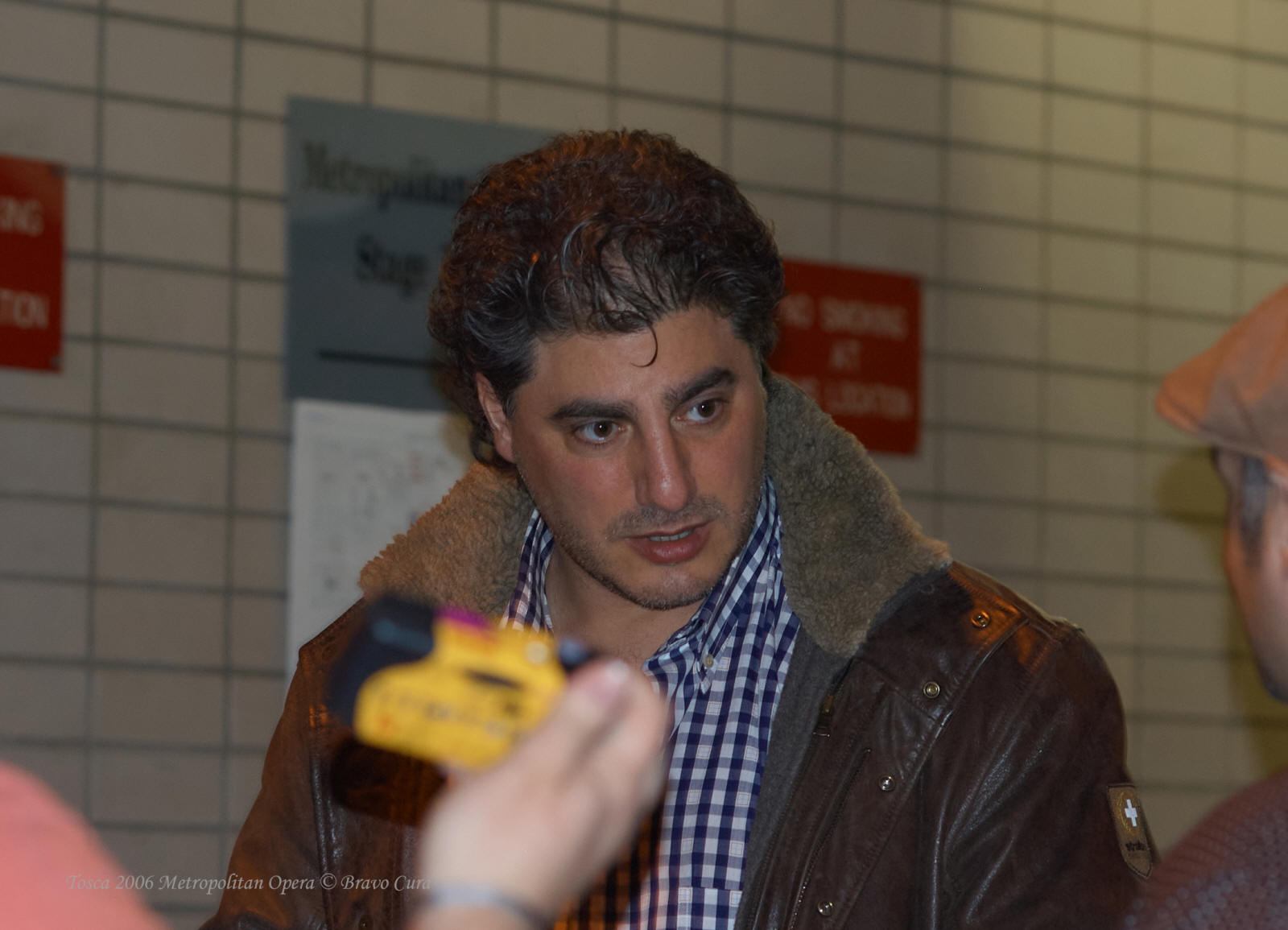
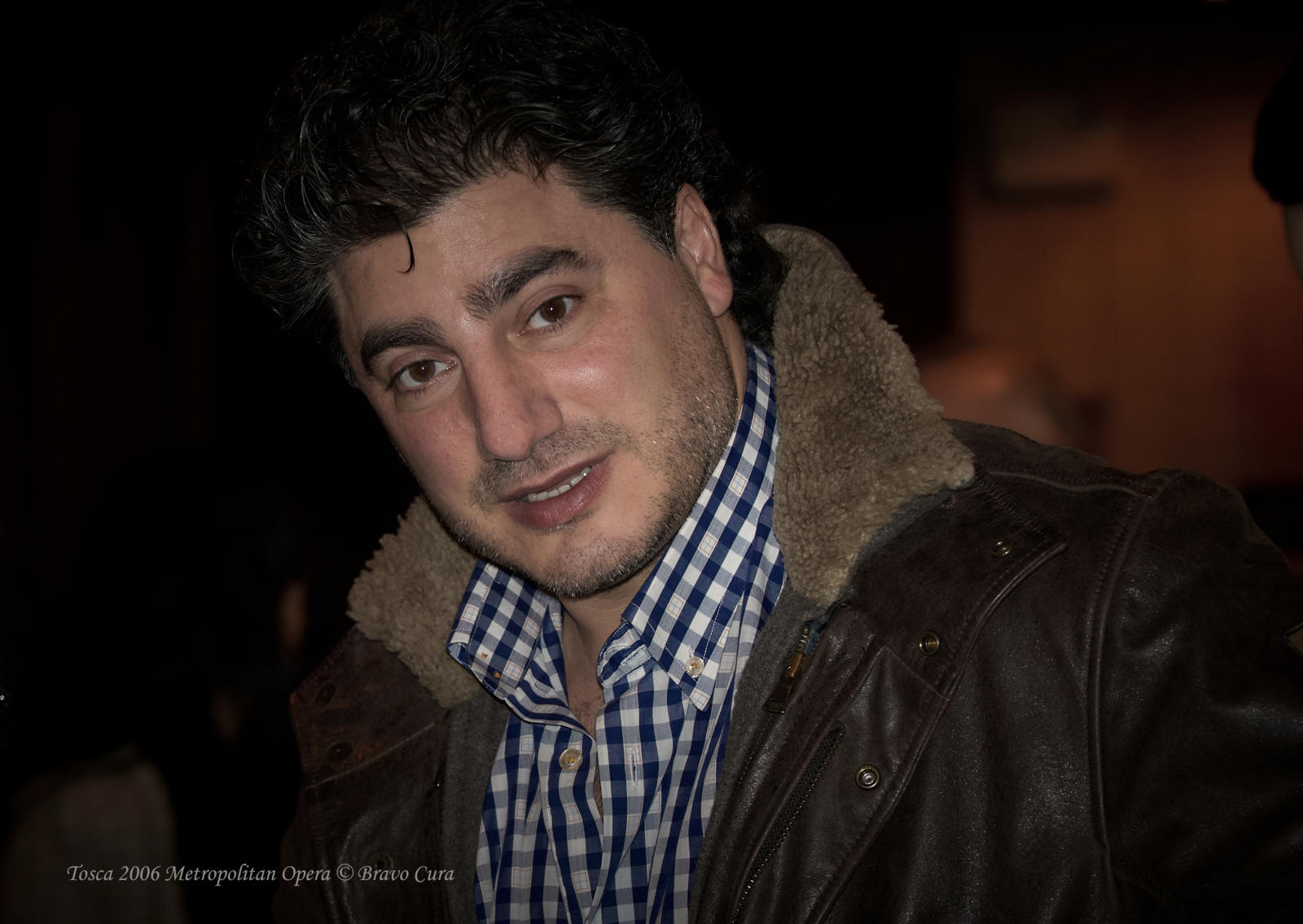
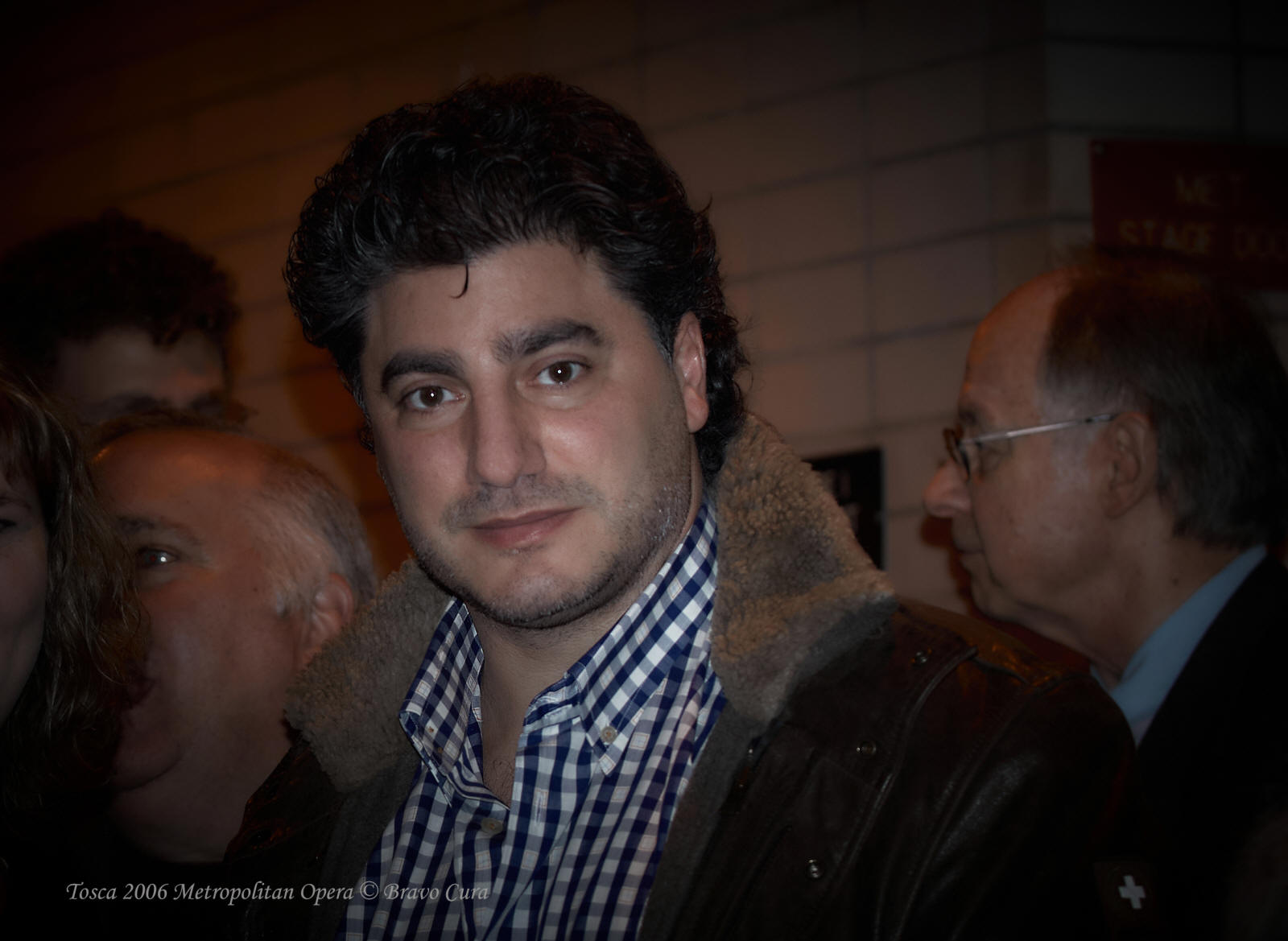
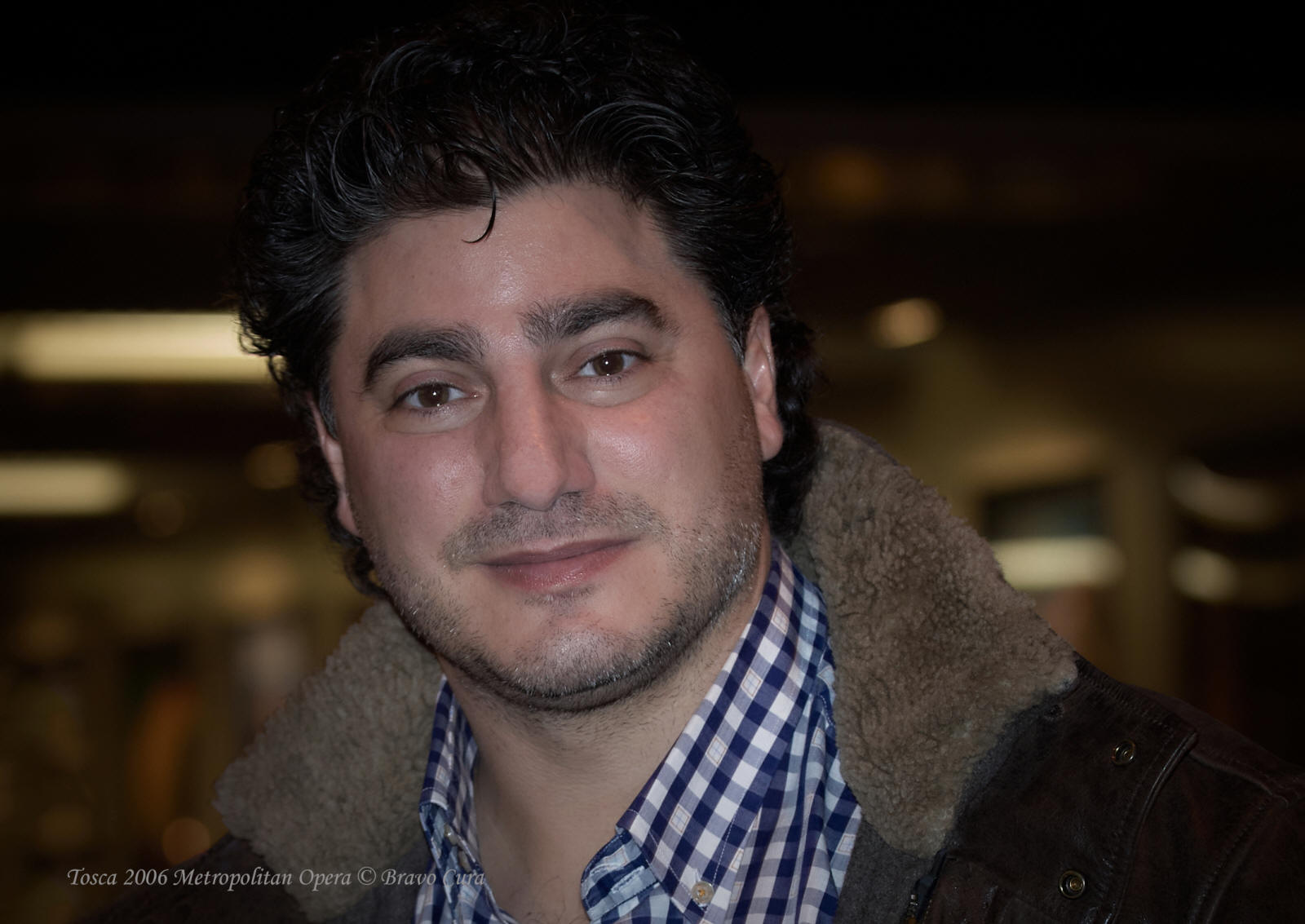
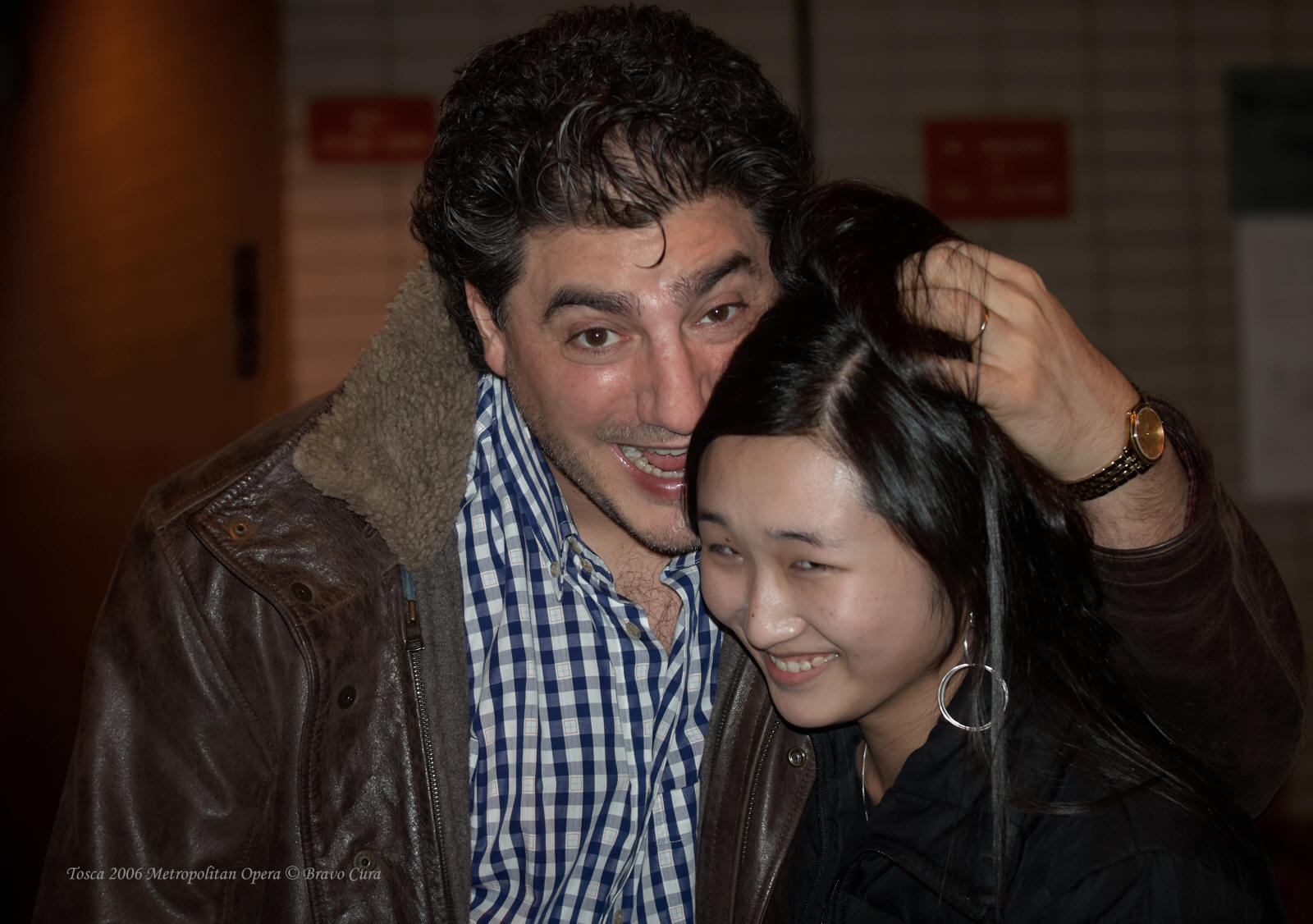
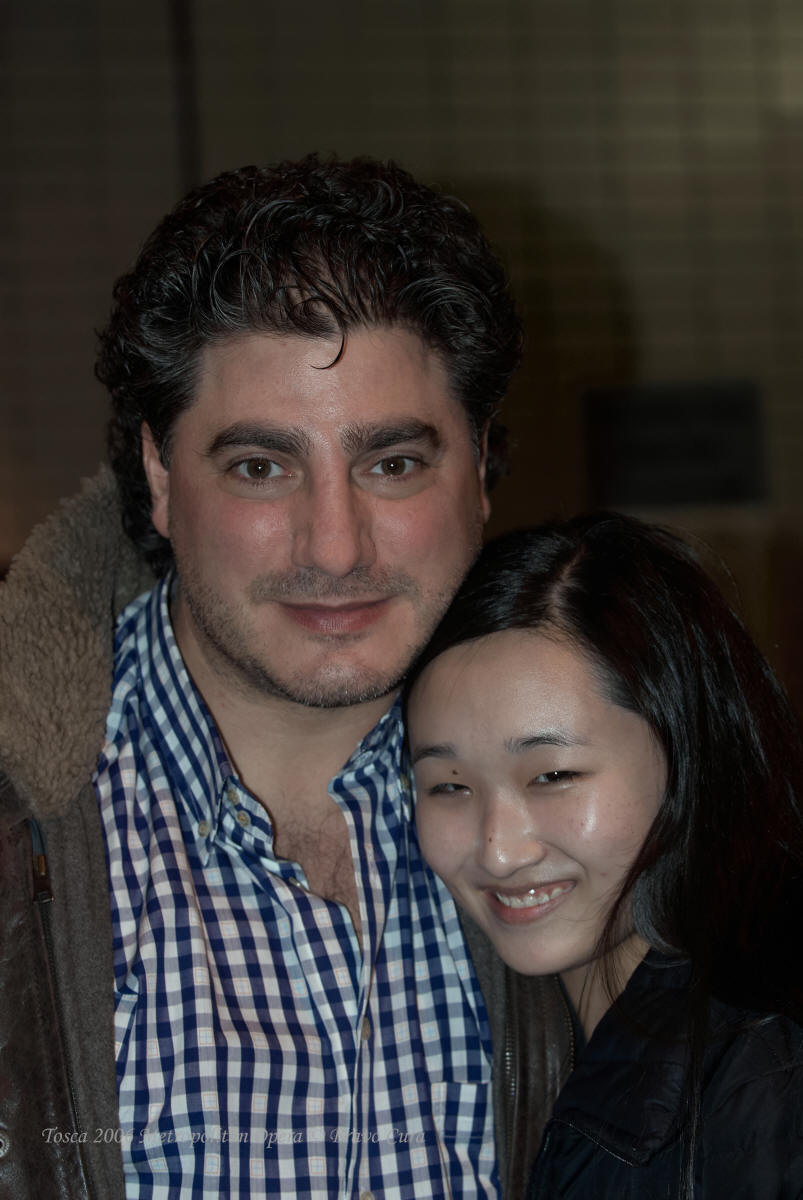
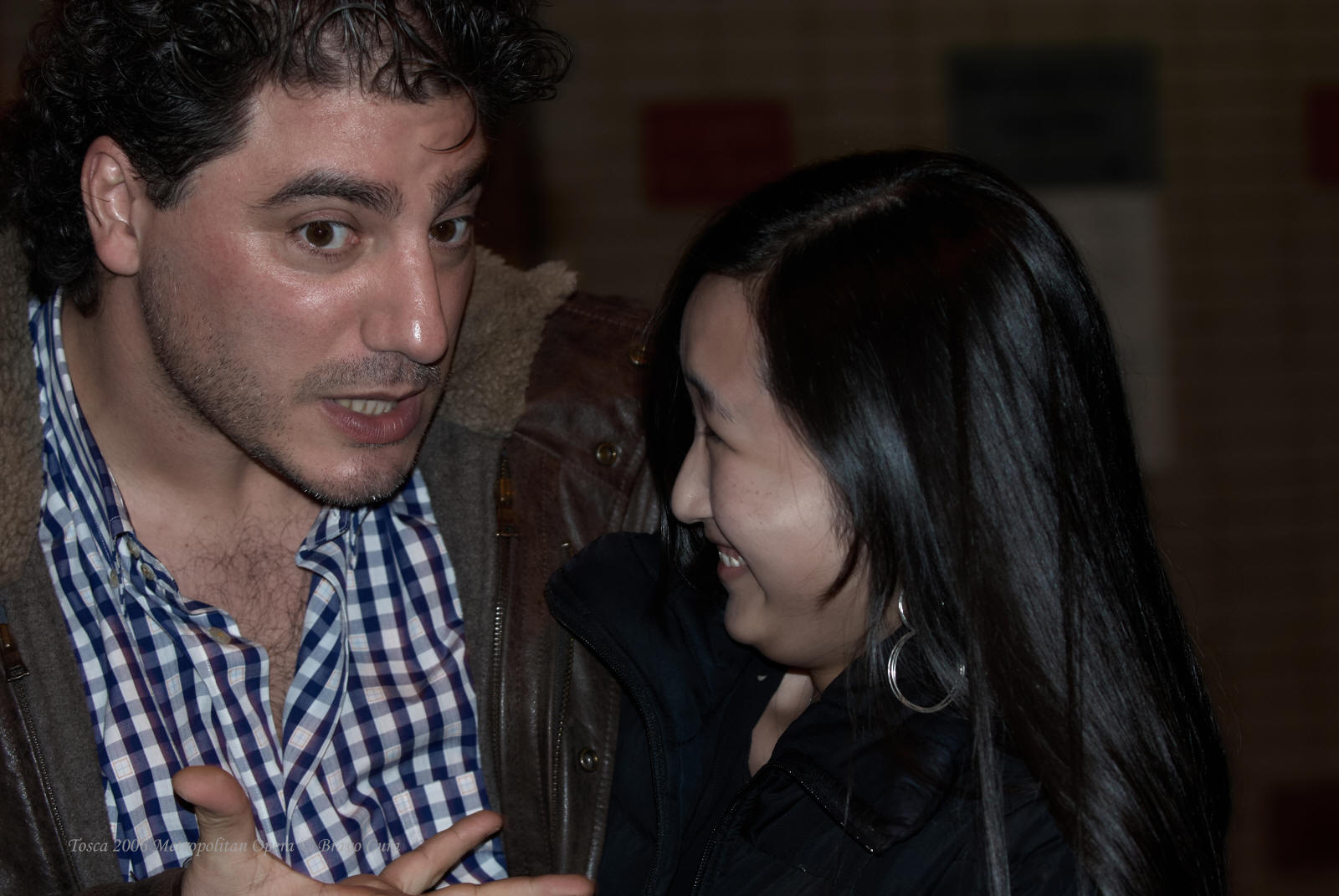
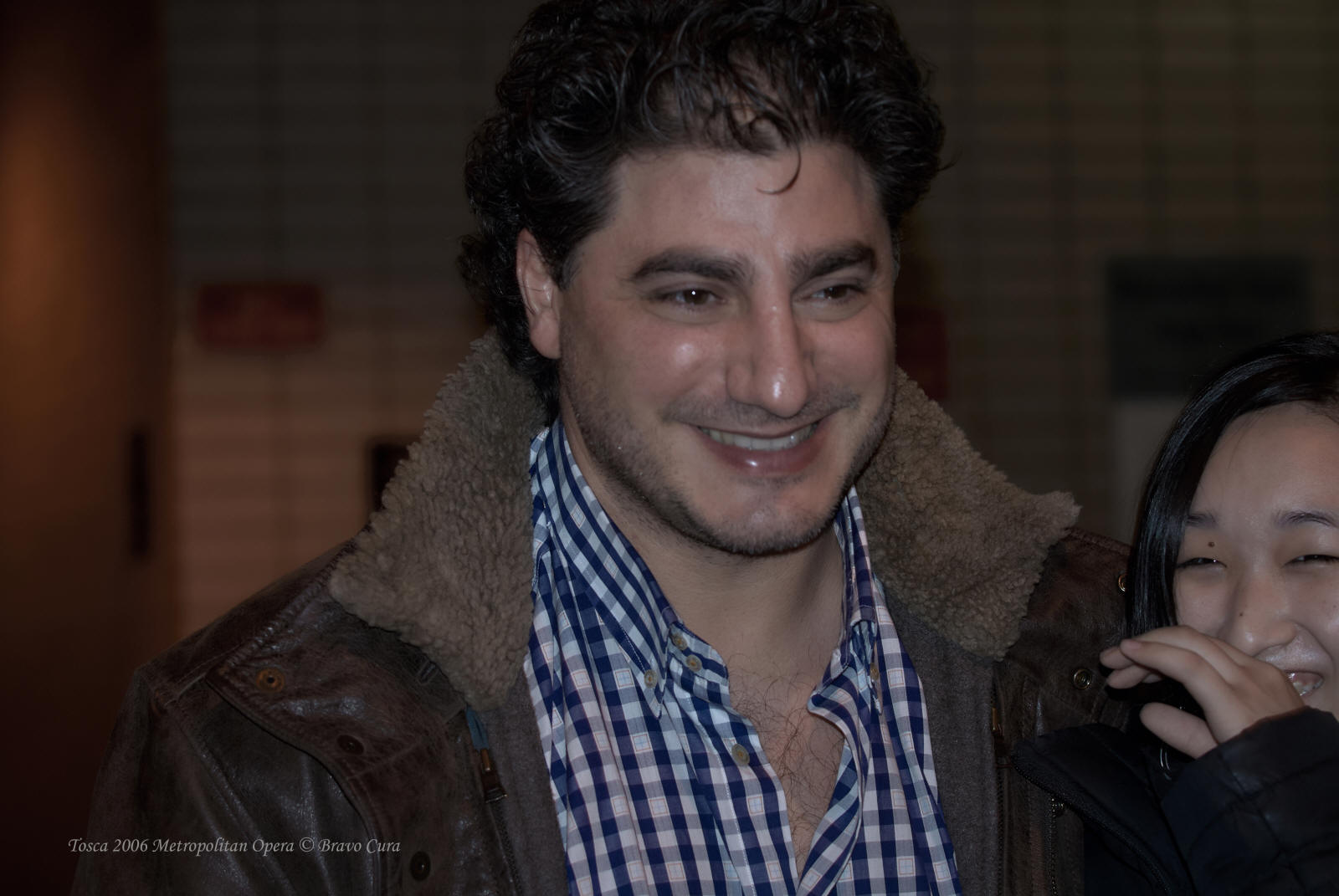
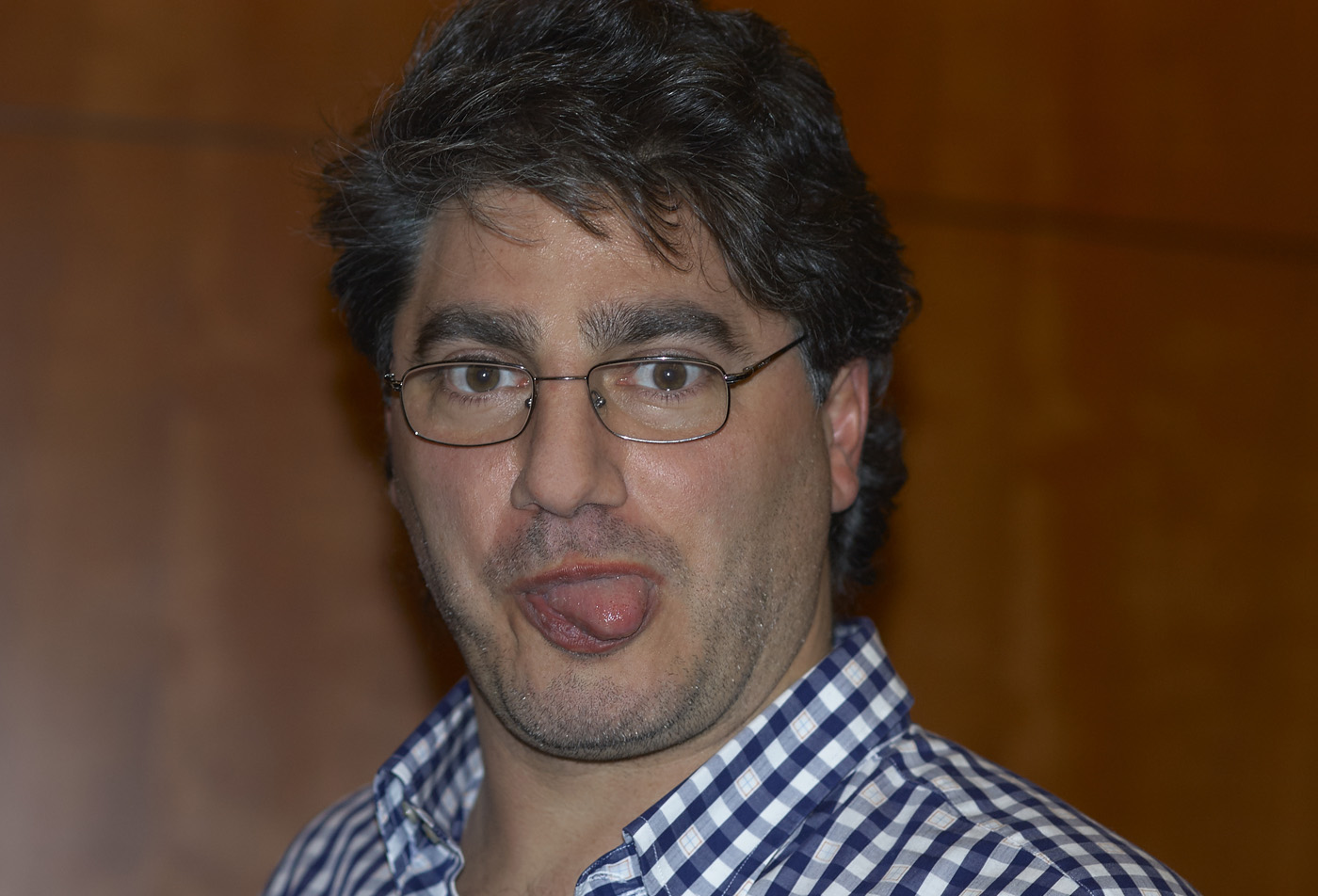
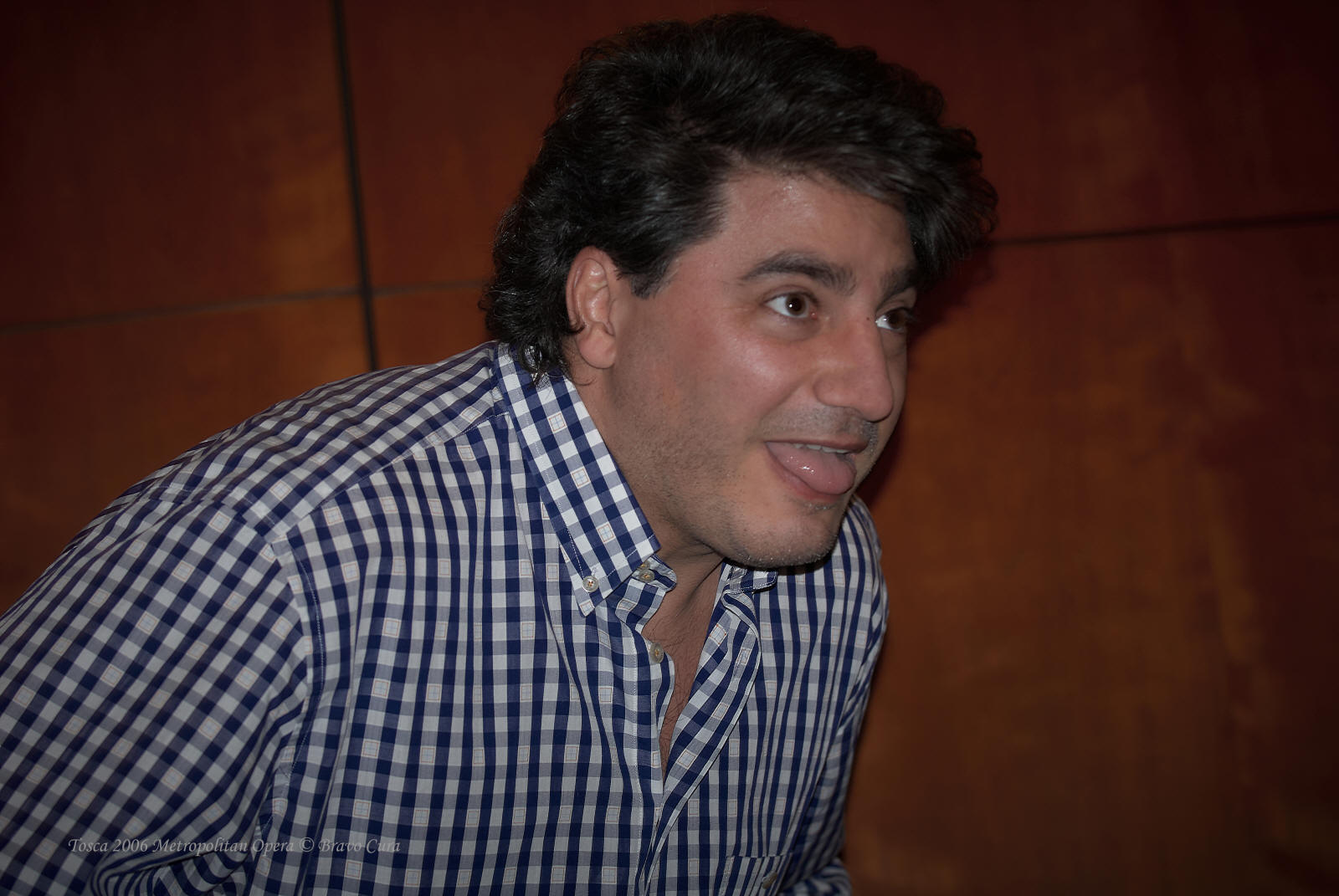
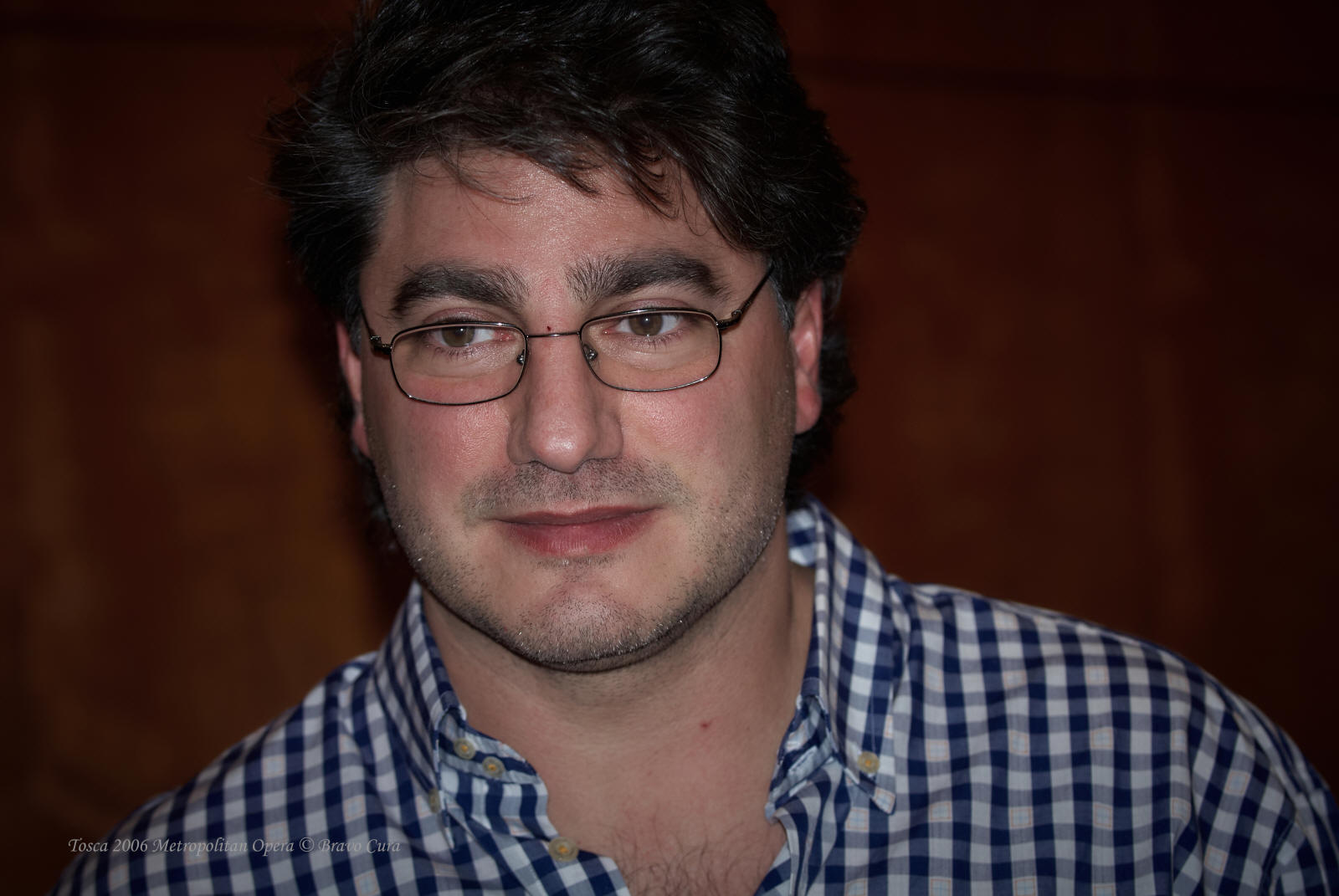
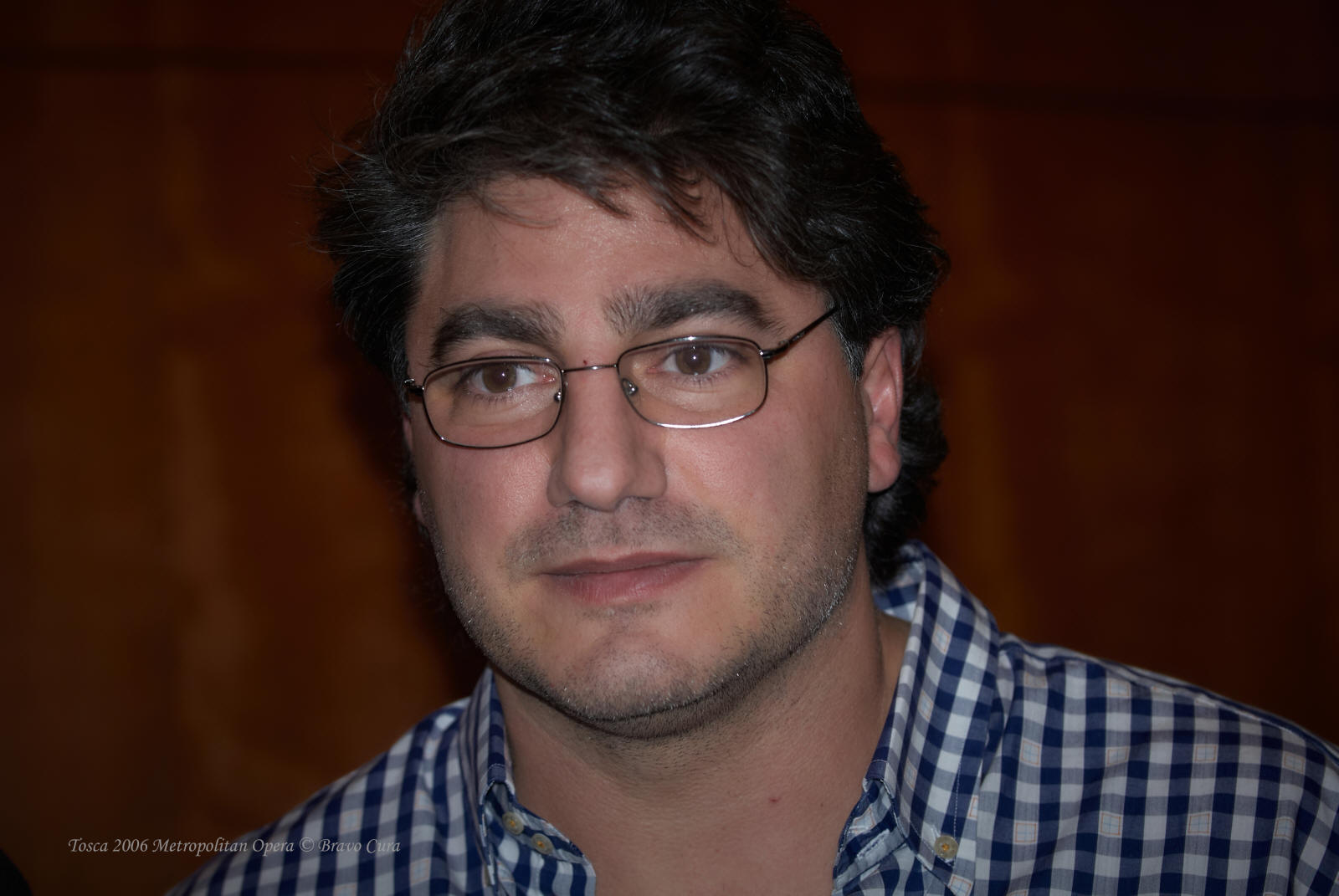
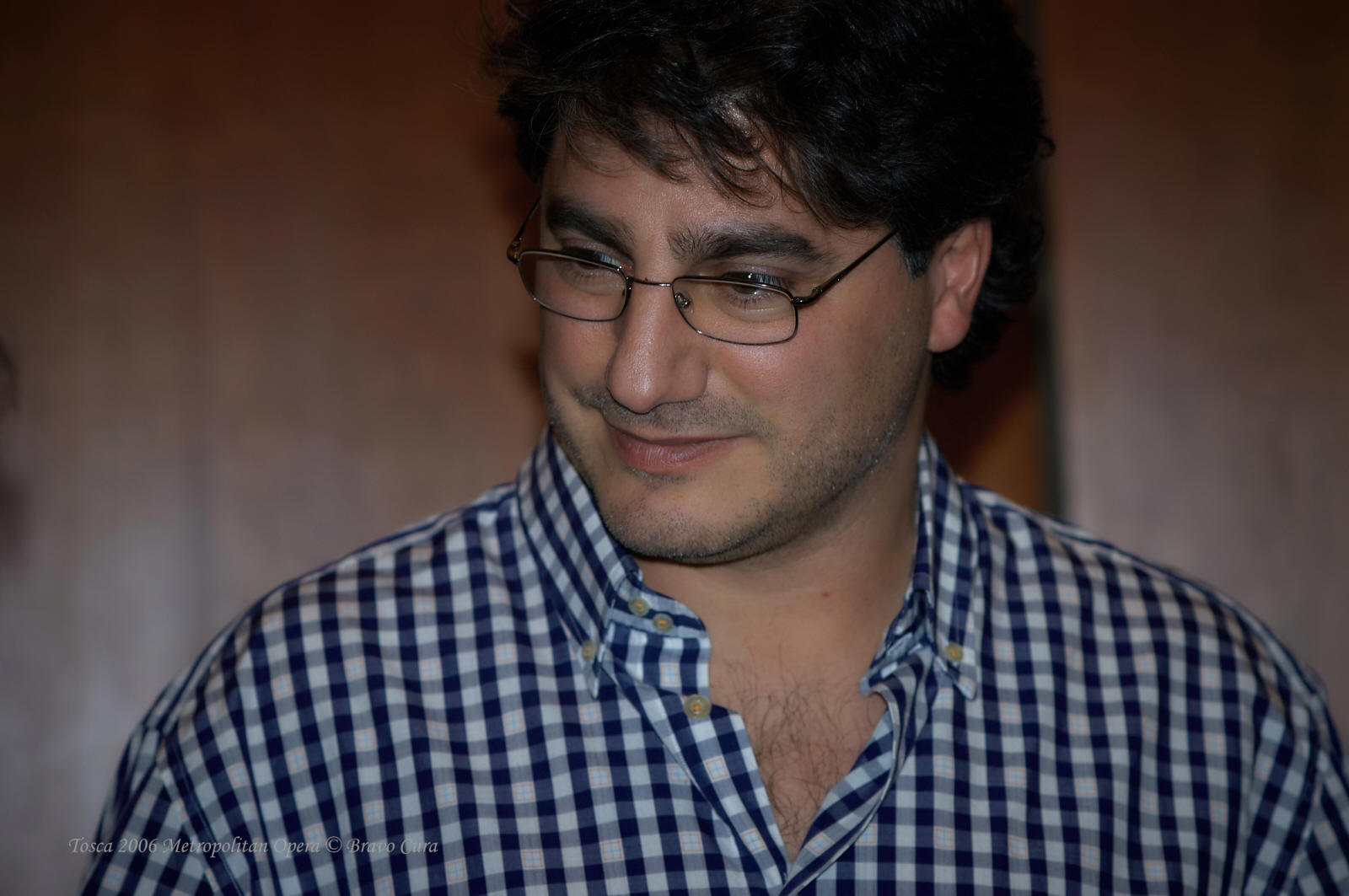
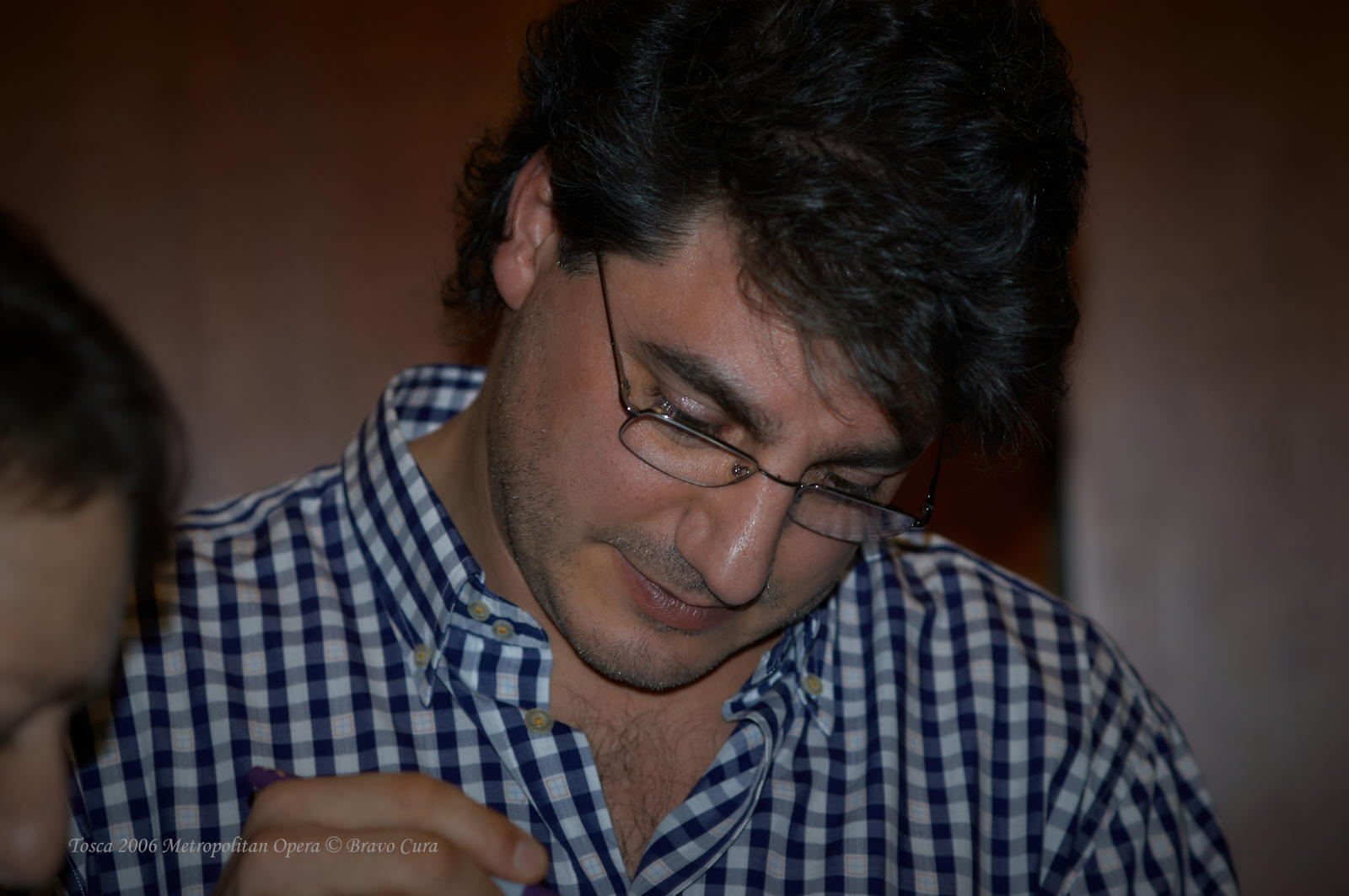

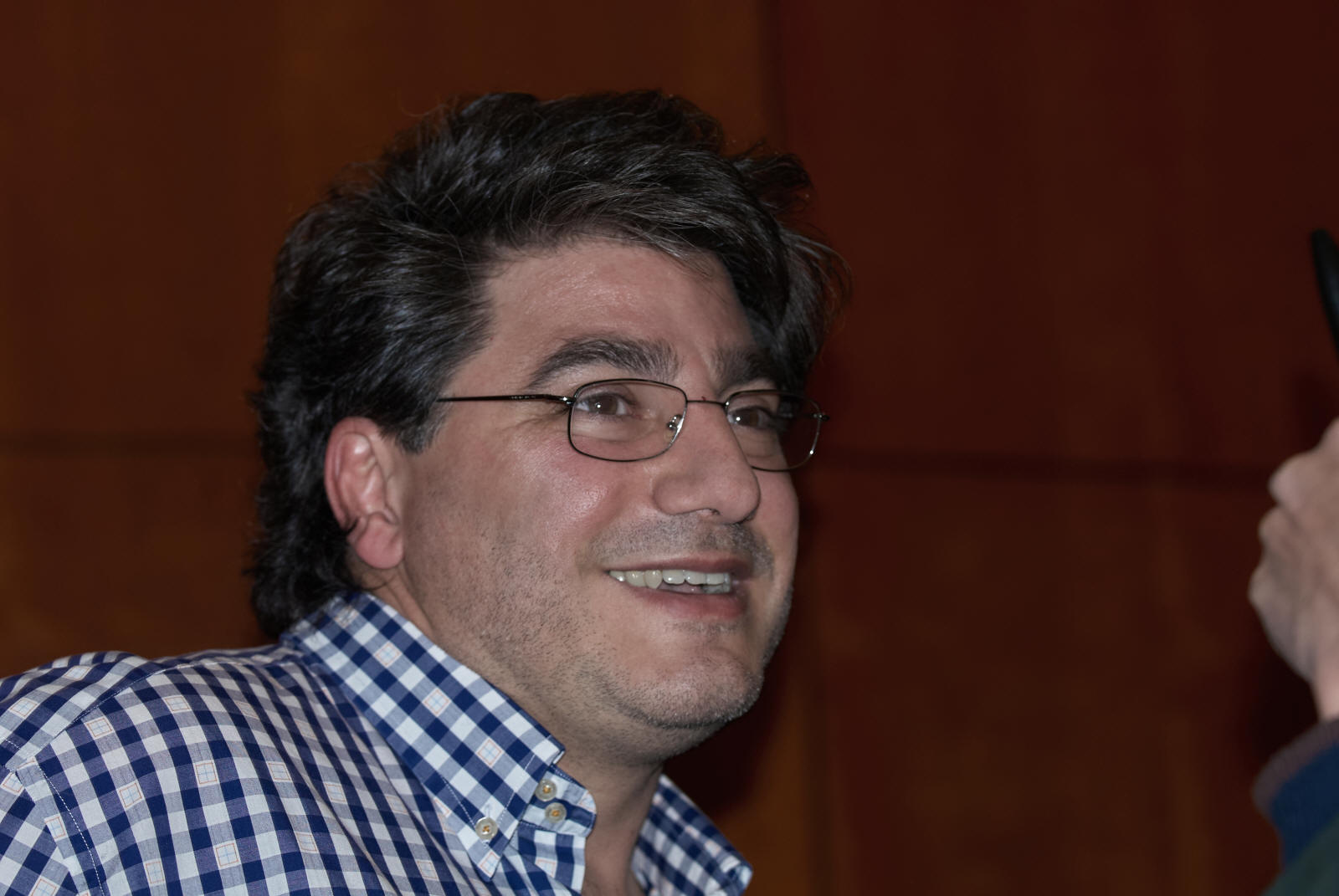
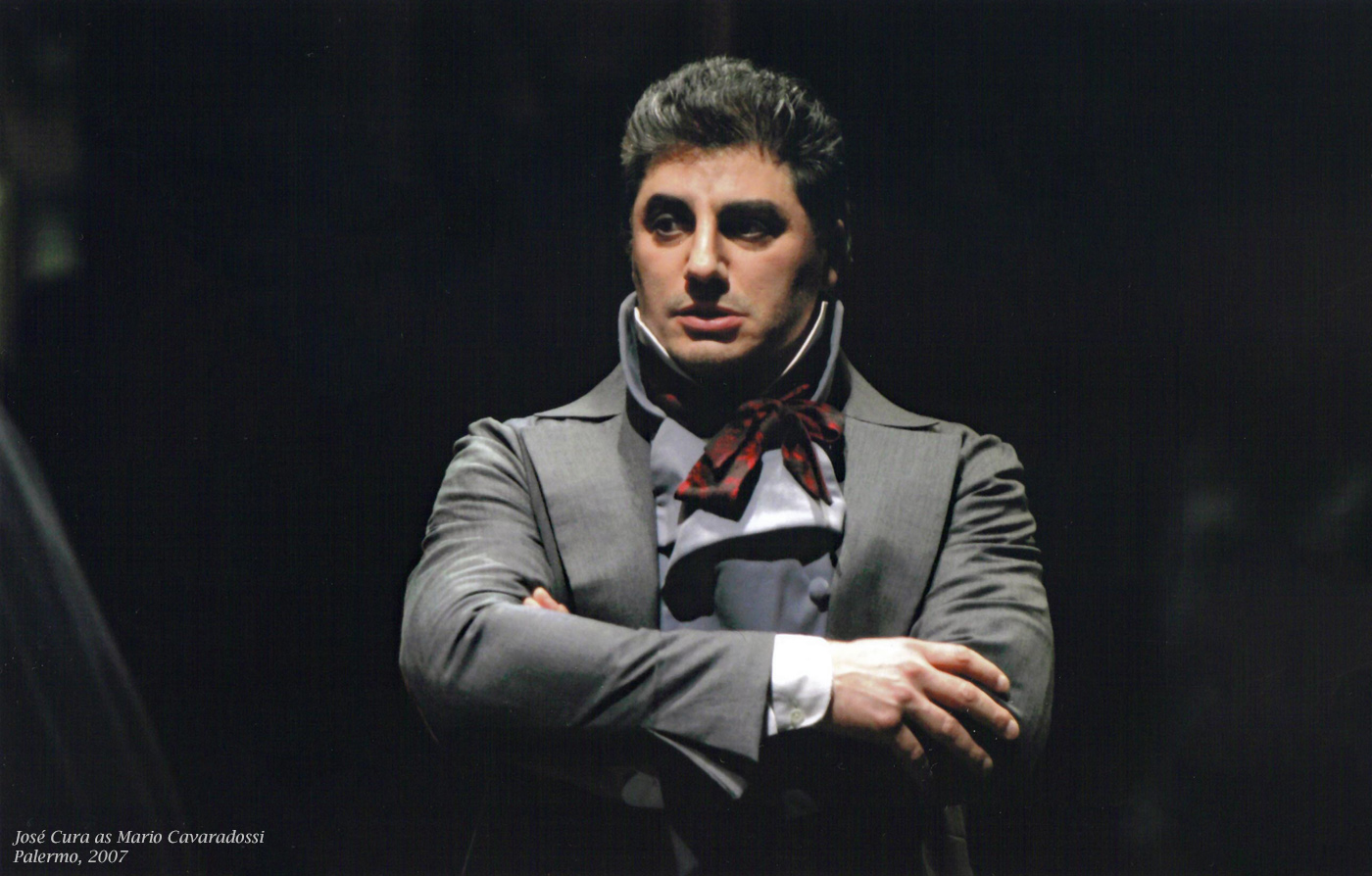
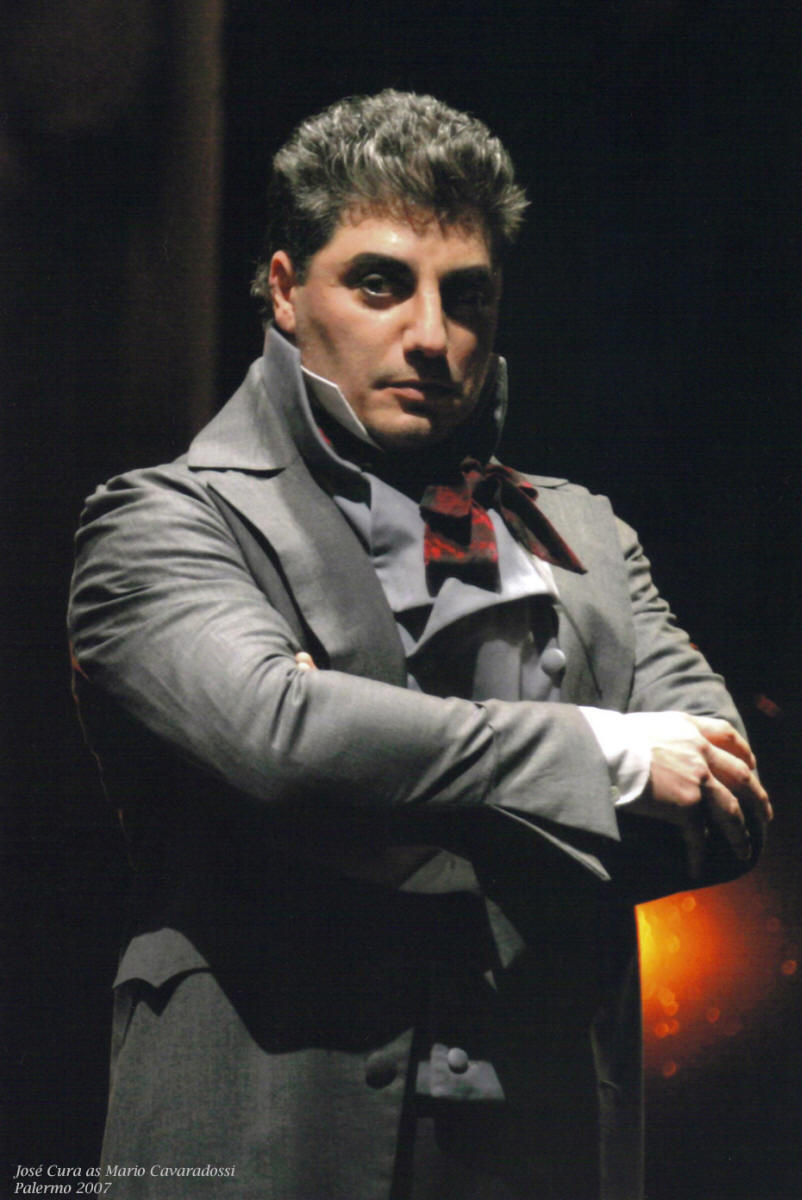
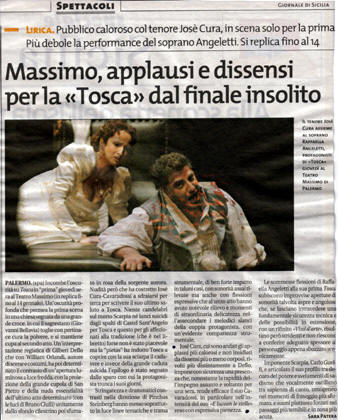
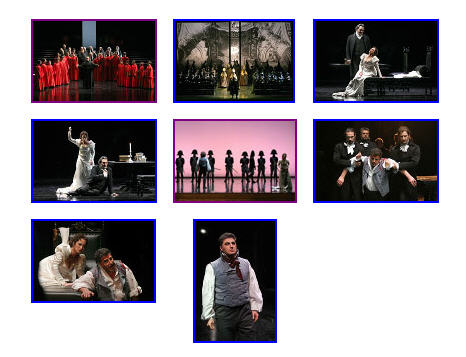
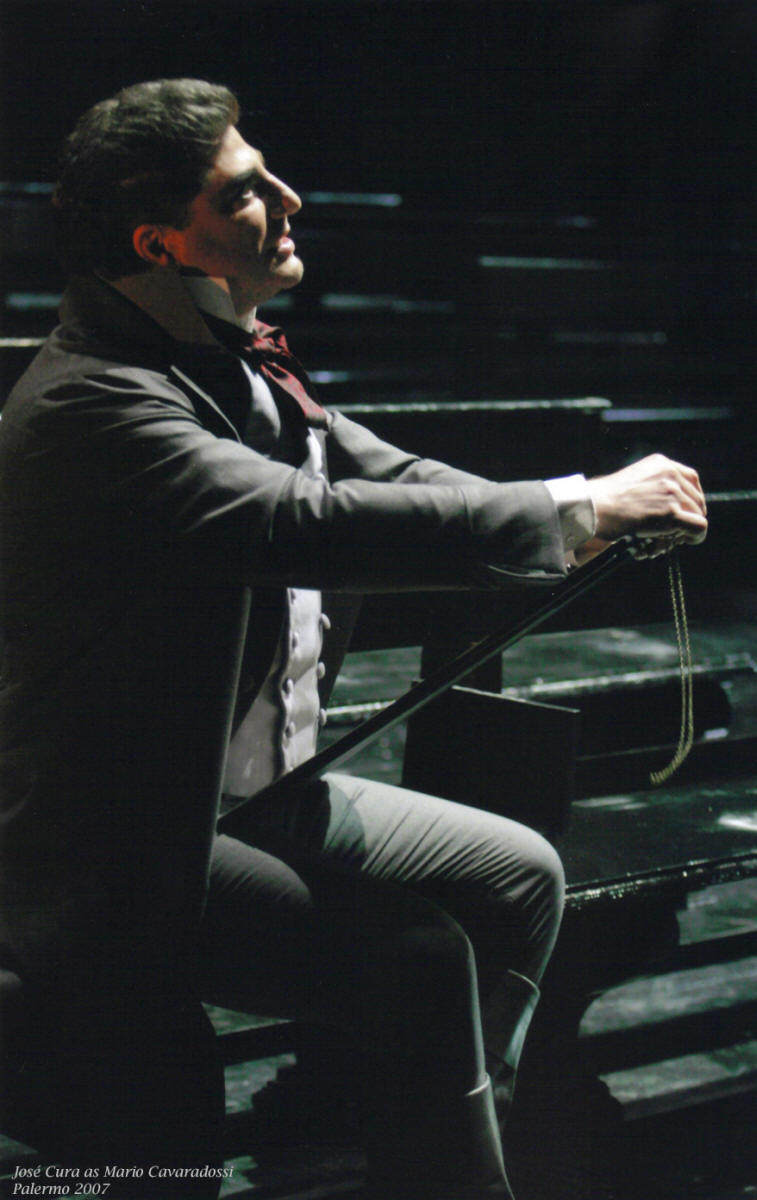
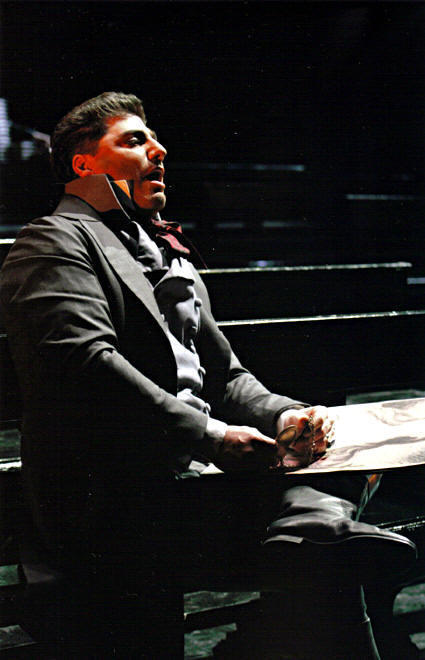
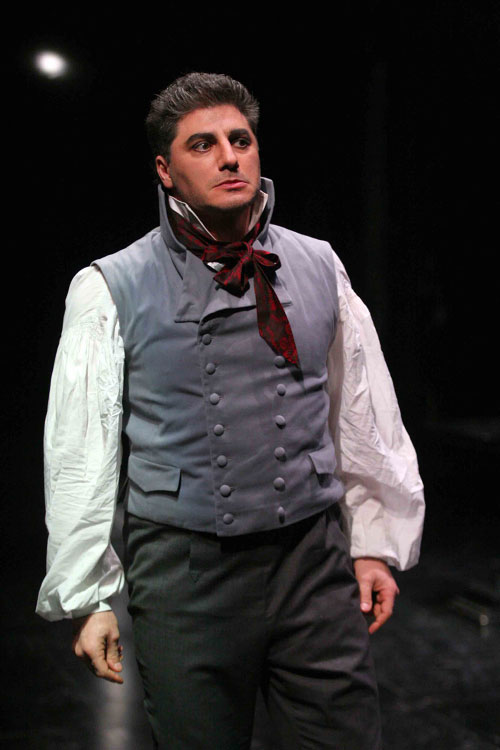
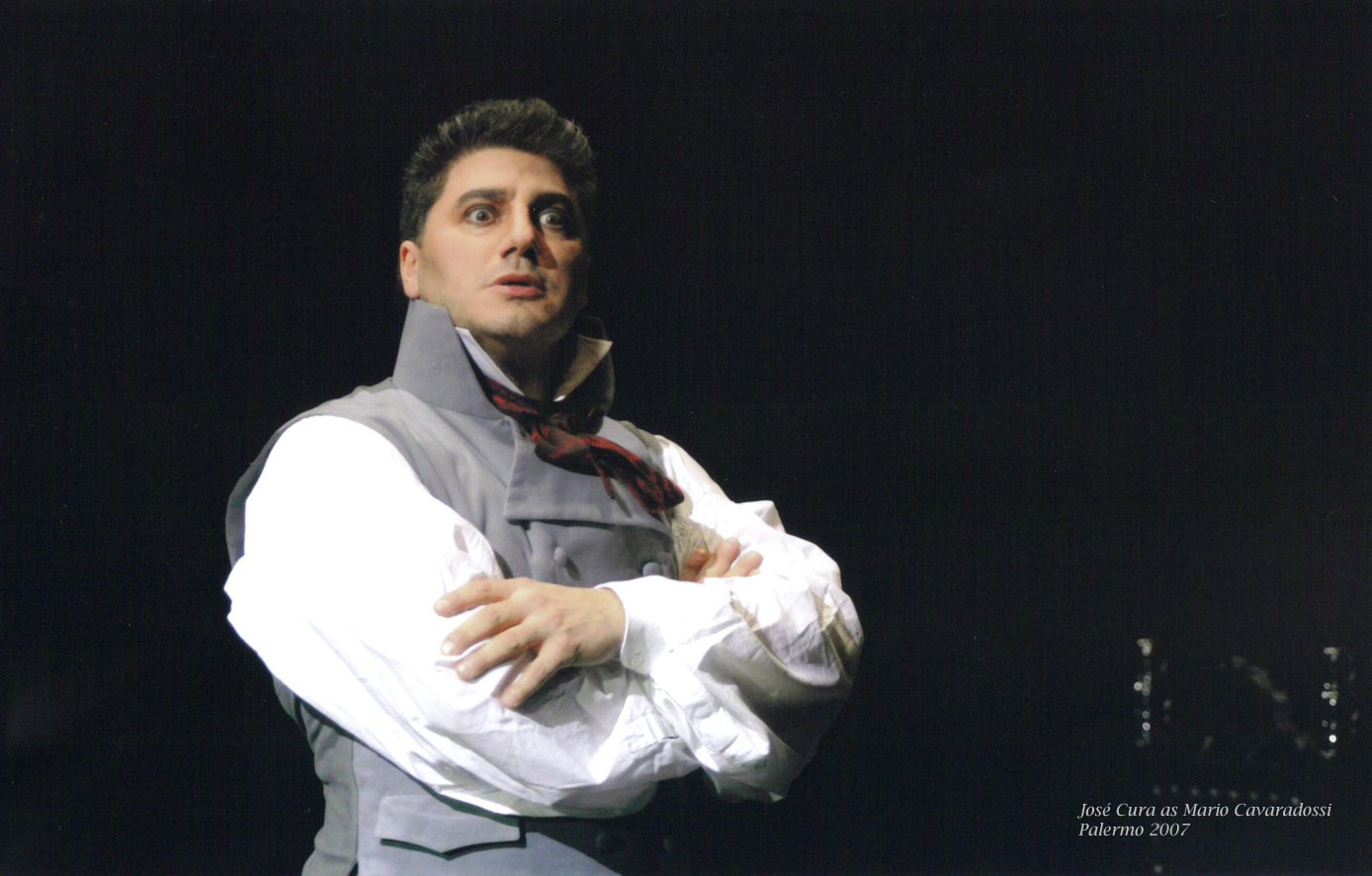
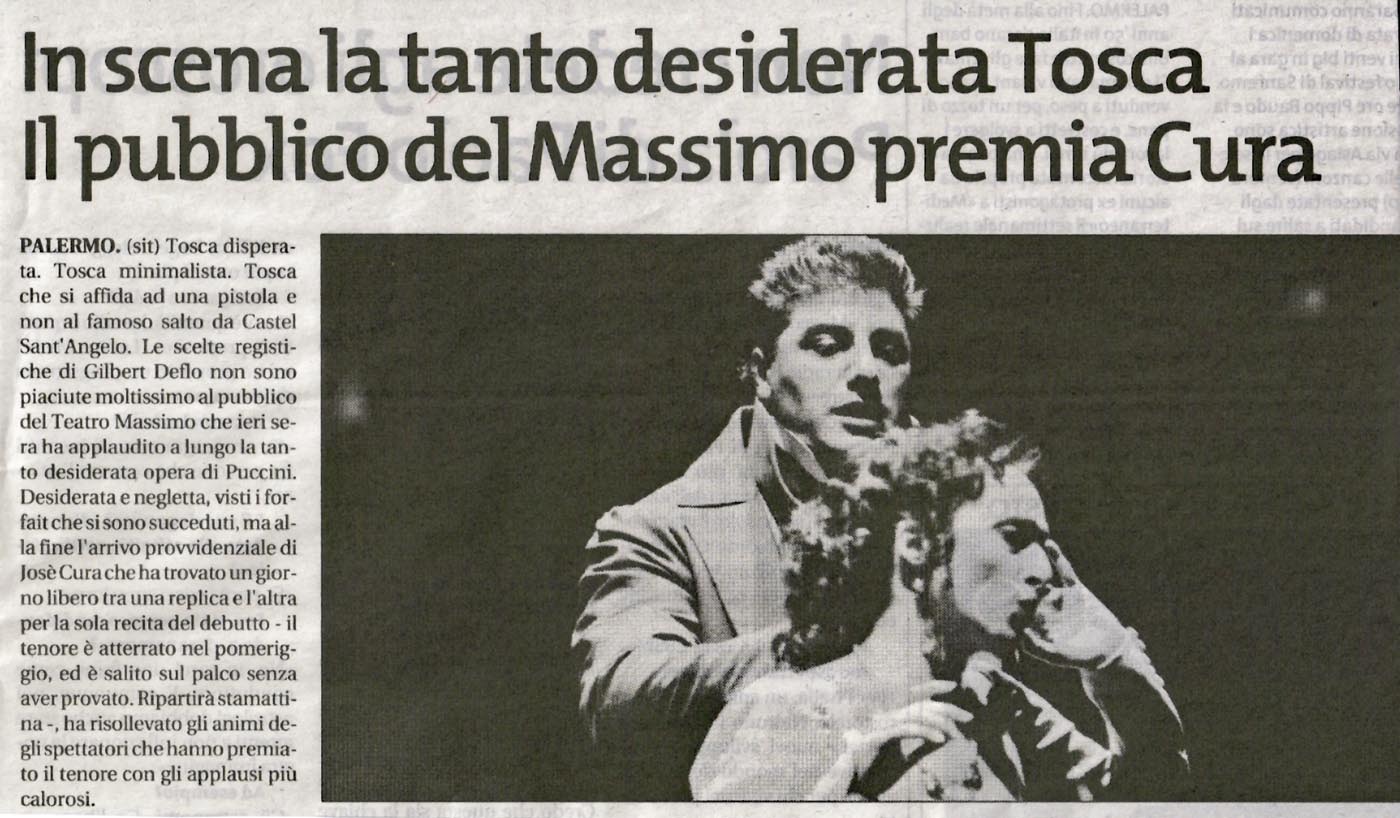
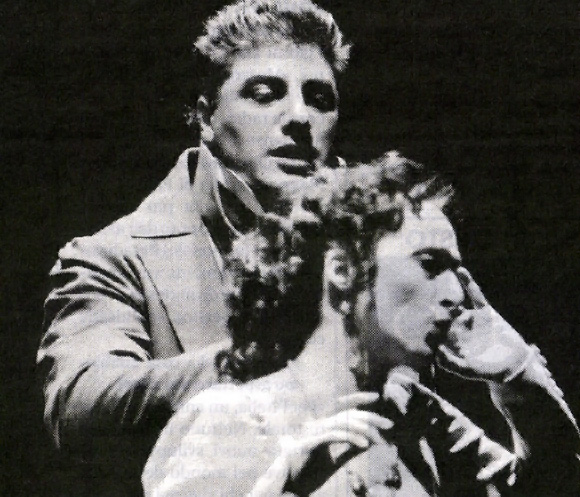
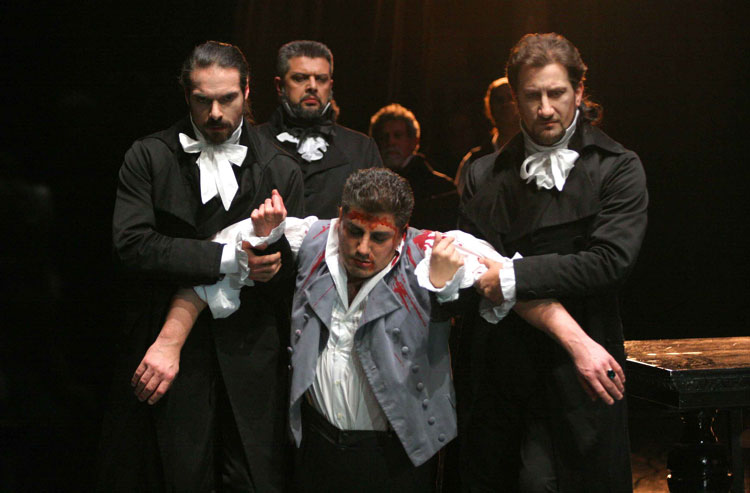
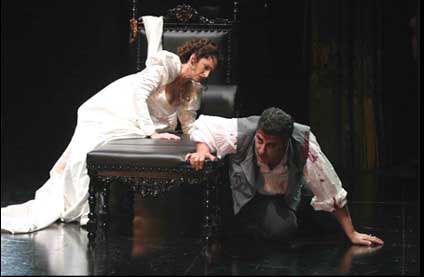
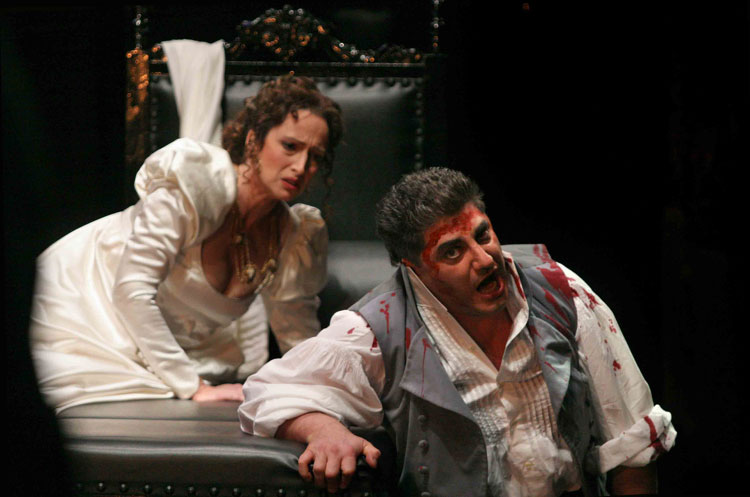
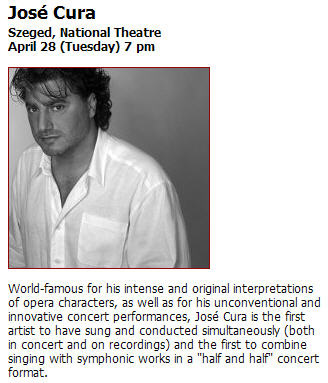
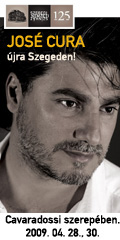
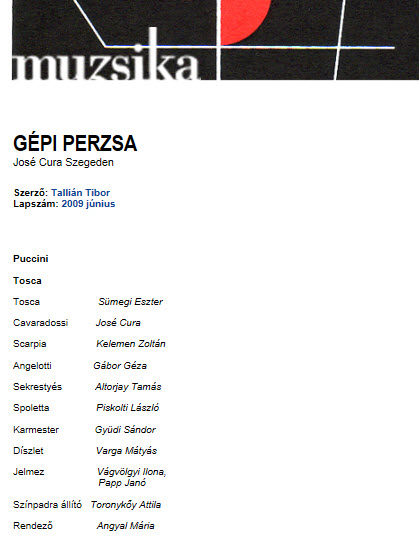
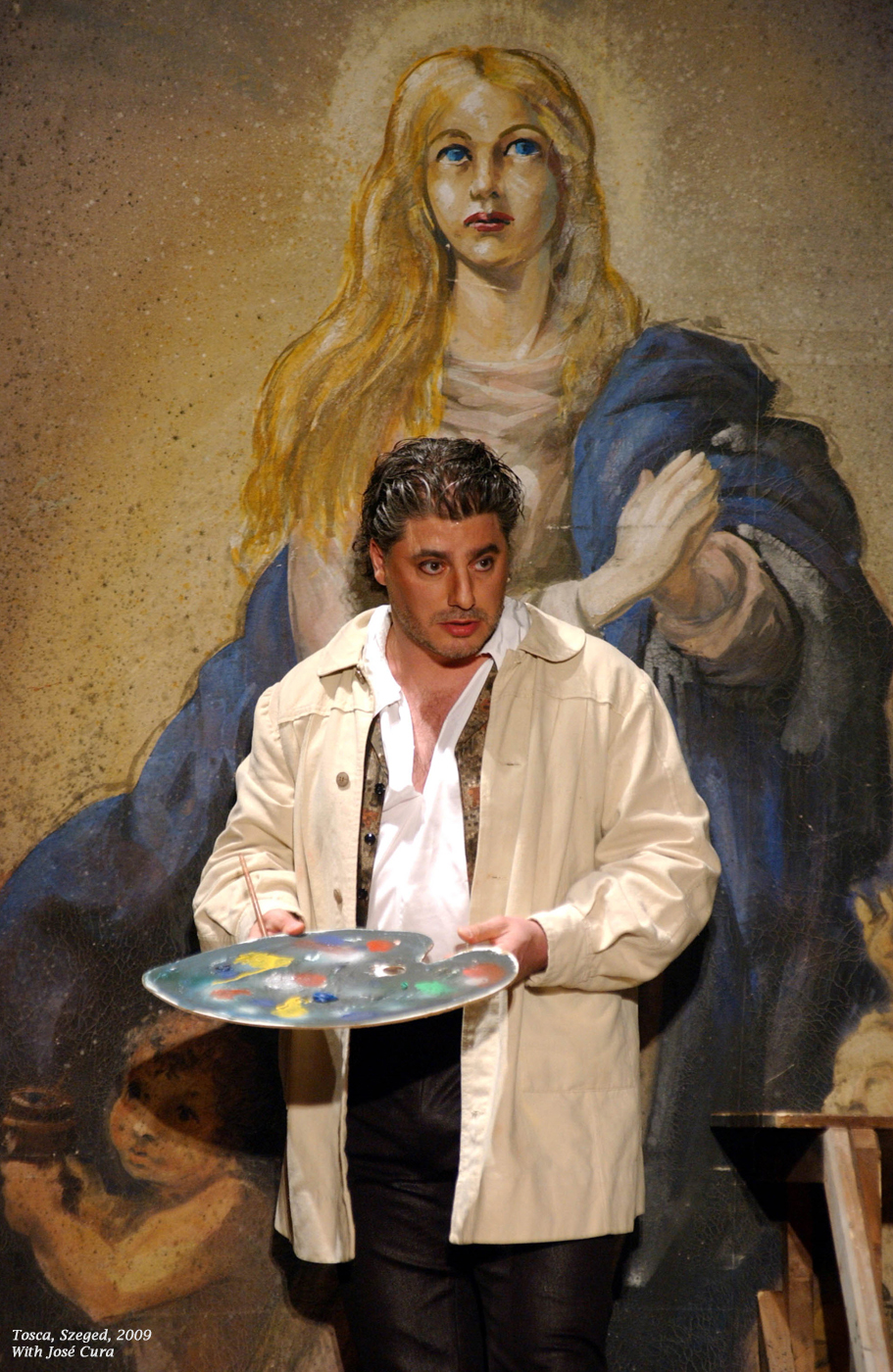
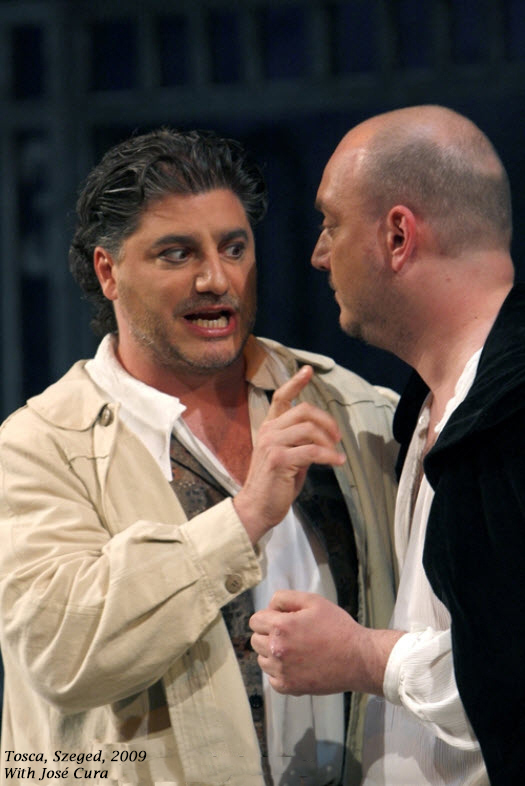
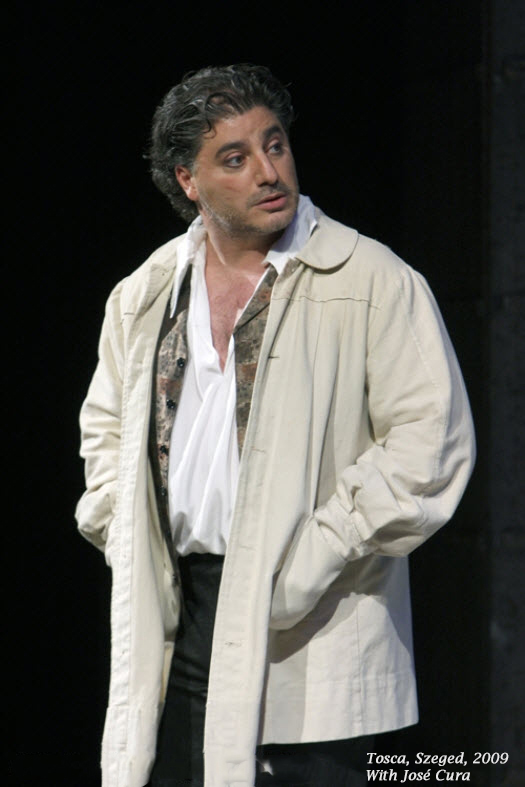
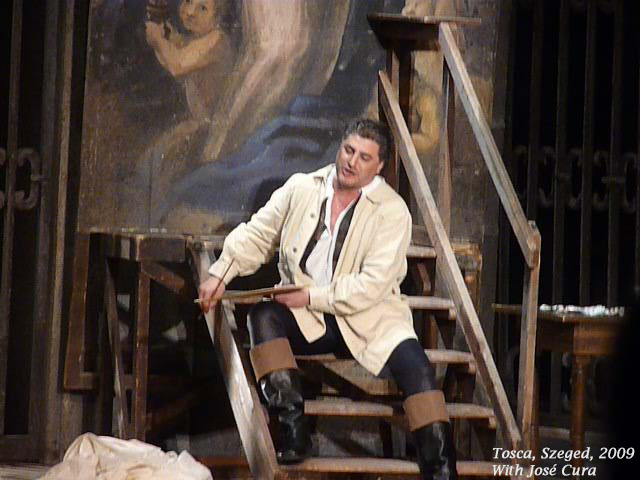

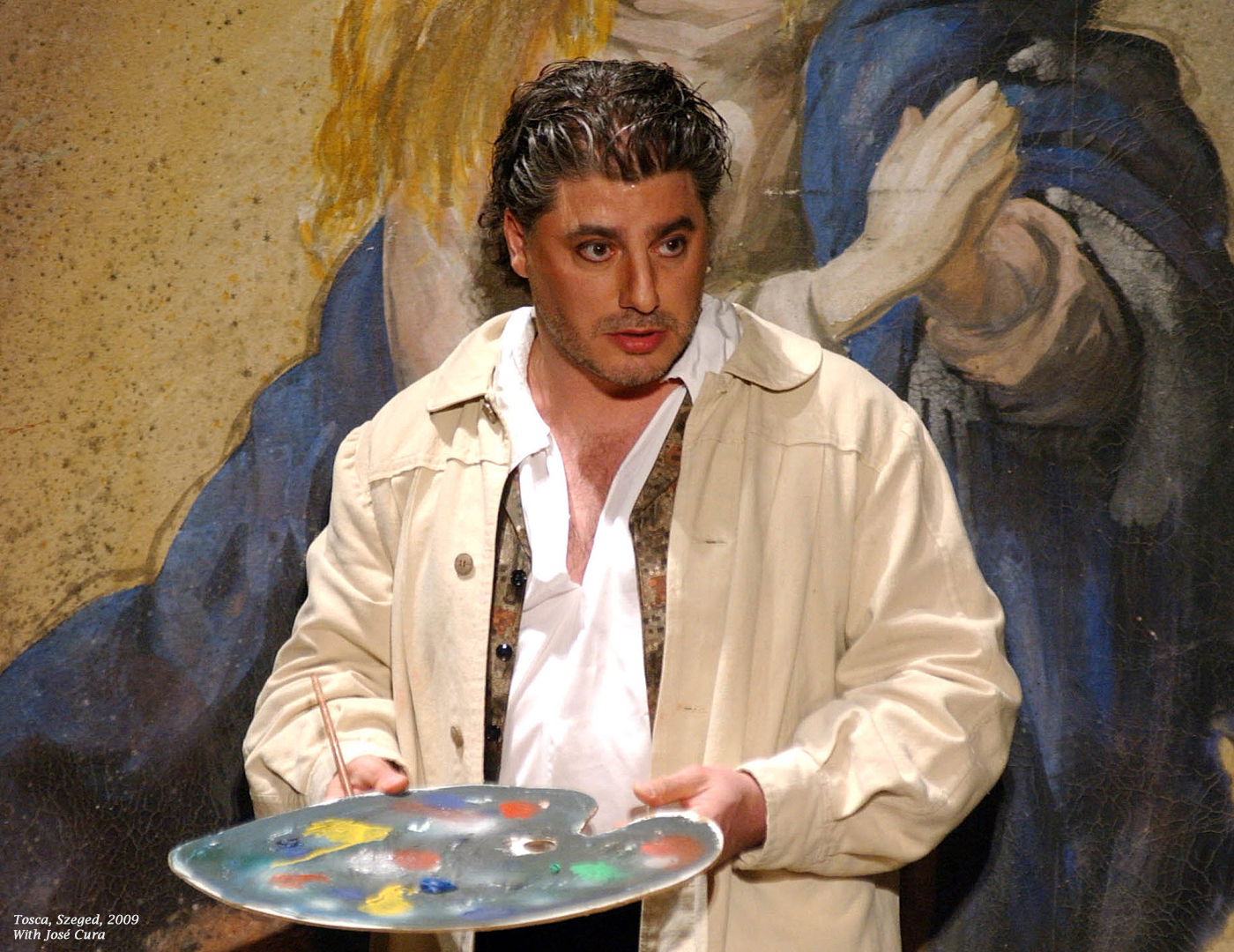
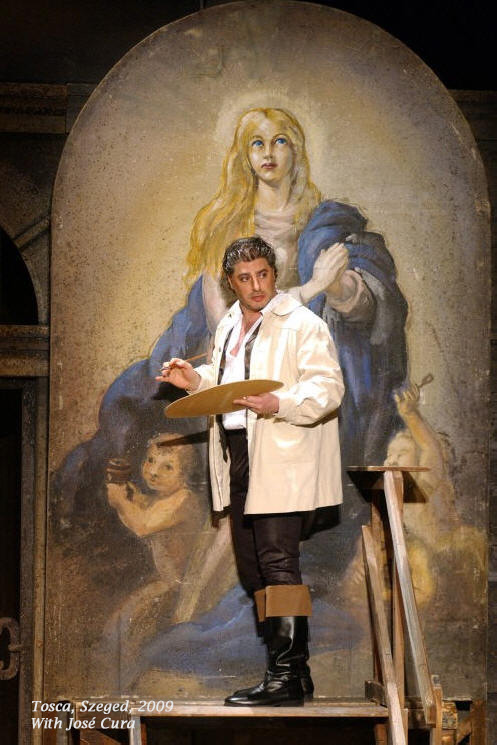
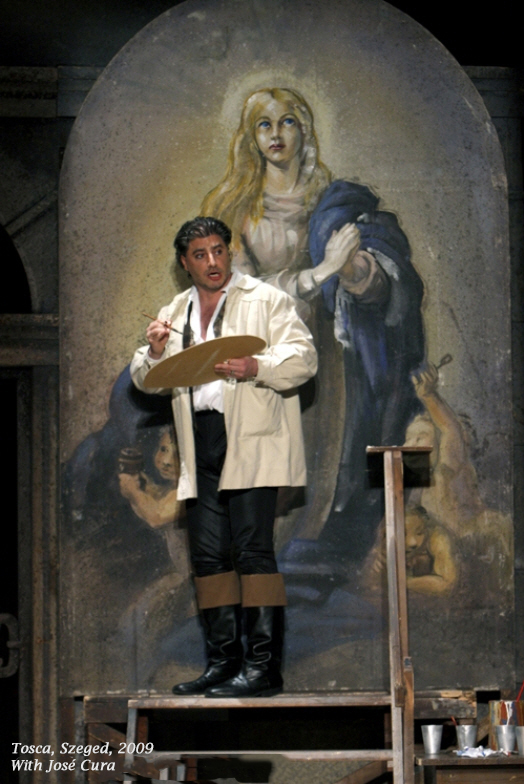
.jpg)
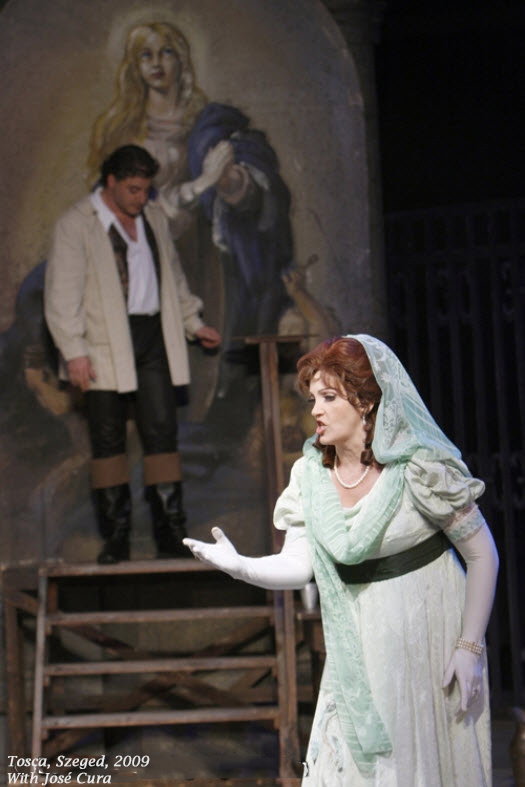
.jpg)
